Chinese sword Black & White Stock Photos
 Chinese Sword Dancer, 1929 Stock Photohttps://www.alamy.com/image-license-details/?v=1https://www.alamy.com/stock-photo-chinese-sword-dancer-1929-48404063.html
Chinese Sword Dancer, 1929 Stock Photohttps://www.alamy.com/image-license-details/?v=1https://www.alamy.com/stock-photo-chinese-sword-dancer-1929-48404063.htmlRMCPMYTF–Chinese Sword Dancer, 1929
 USA: Martial arts with two swords, San Francisco Chinatown. Photo by Arnold Genthe (1869-1942), c. 1890-1900. San Francisco's Chinatown was the port of entry for early Hoisanese and Zhongshanese Chinese immigrants from the Guangdong province of southern China from the 1850s to the 1900s. The area was the one geographical region deeded by the city government and private property owners which allowed Chinese persons to inherit and inhabit dwellings within the city. The majority of these Chinese shopkeepers, restaurant owners and hired workers in San Francisco were mainly Hoisanese and male. Stock Photohttps://www.alamy.com/image-license-details/?v=1https://www.alamy.com/usa-martial-arts-with-two-swords-san-francisco-chinatown-photo-by-arnold-genthe-1869-1942-c-1890-1900-san-franciscos-chinatown-was-the-port-of-entry-for-early-hoisanese-and-zhongshanese-chinese-immigrants-from-the-guangdong-province-of-southern-china-from-the-1850s-to-the-1900s-the-area-was-the-one-geographical-region-deeded-by-the-city-government-and-private-property-owners-which-allowed-chinese-persons-to-inherit-and-inhabit-dwellings-within-the-city-the-majority-of-these-chinese-shopkeepers-restaurant-owners-and-hired-workers-in-san-francisco-were-mainly-hoisanese-and-male-image344248466.html
USA: Martial arts with two swords, San Francisco Chinatown. Photo by Arnold Genthe (1869-1942), c. 1890-1900. San Francisco's Chinatown was the port of entry for early Hoisanese and Zhongshanese Chinese immigrants from the Guangdong province of southern China from the 1850s to the 1900s. The area was the one geographical region deeded by the city government and private property owners which allowed Chinese persons to inherit and inhabit dwellings within the city. The majority of these Chinese shopkeepers, restaurant owners and hired workers in San Francisco were mainly Hoisanese and male. Stock Photohttps://www.alamy.com/image-license-details/?v=1https://www.alamy.com/usa-martial-arts-with-two-swords-san-francisco-chinatown-photo-by-arnold-genthe-1869-1942-c-1890-1900-san-franciscos-chinatown-was-the-port-of-entry-for-early-hoisanese-and-zhongshanese-chinese-immigrants-from-the-guangdong-province-of-southern-china-from-the-1850s-to-the-1900s-the-area-was-the-one-geographical-region-deeded-by-the-city-government-and-private-property-owners-which-allowed-chinese-persons-to-inherit-and-inhabit-dwellings-within-the-city-the-majority-of-these-chinese-shopkeepers-restaurant-owners-and-hired-workers-in-san-francisco-were-mainly-hoisanese-and-male-image344248466.htmlRM2B01TC2–USA: Martial arts with two swords, San Francisco Chinatown. Photo by Arnold Genthe (1869-1942), c. 1890-1900. San Francisco's Chinatown was the port of entry for early Hoisanese and Zhongshanese Chinese immigrants from the Guangdong province of southern China from the 1850s to the 1900s. The area was the one geographical region deeded by the city government and private property owners which allowed Chinese persons to inherit and inhabit dwellings within the city. The majority of these Chinese shopkeepers, restaurant owners and hired workers in San Francisco were mainly Hoisanese and male.
 Chinese sword dancer, 1927 Stock Photohttps://www.alamy.com/image-license-details/?v=1https://www.alamy.com/stock-photo-chinese-sword-dancer-1927-48404072.html
Chinese sword dancer, 1927 Stock Photohttps://www.alamy.com/image-license-details/?v=1https://www.alamy.com/stock-photo-chinese-sword-dancer-1927-48404072.htmlRMCPMYTT–Chinese sword dancer, 1927
RF2YNWE36–Chinese sword - clean and modern chinese icon.
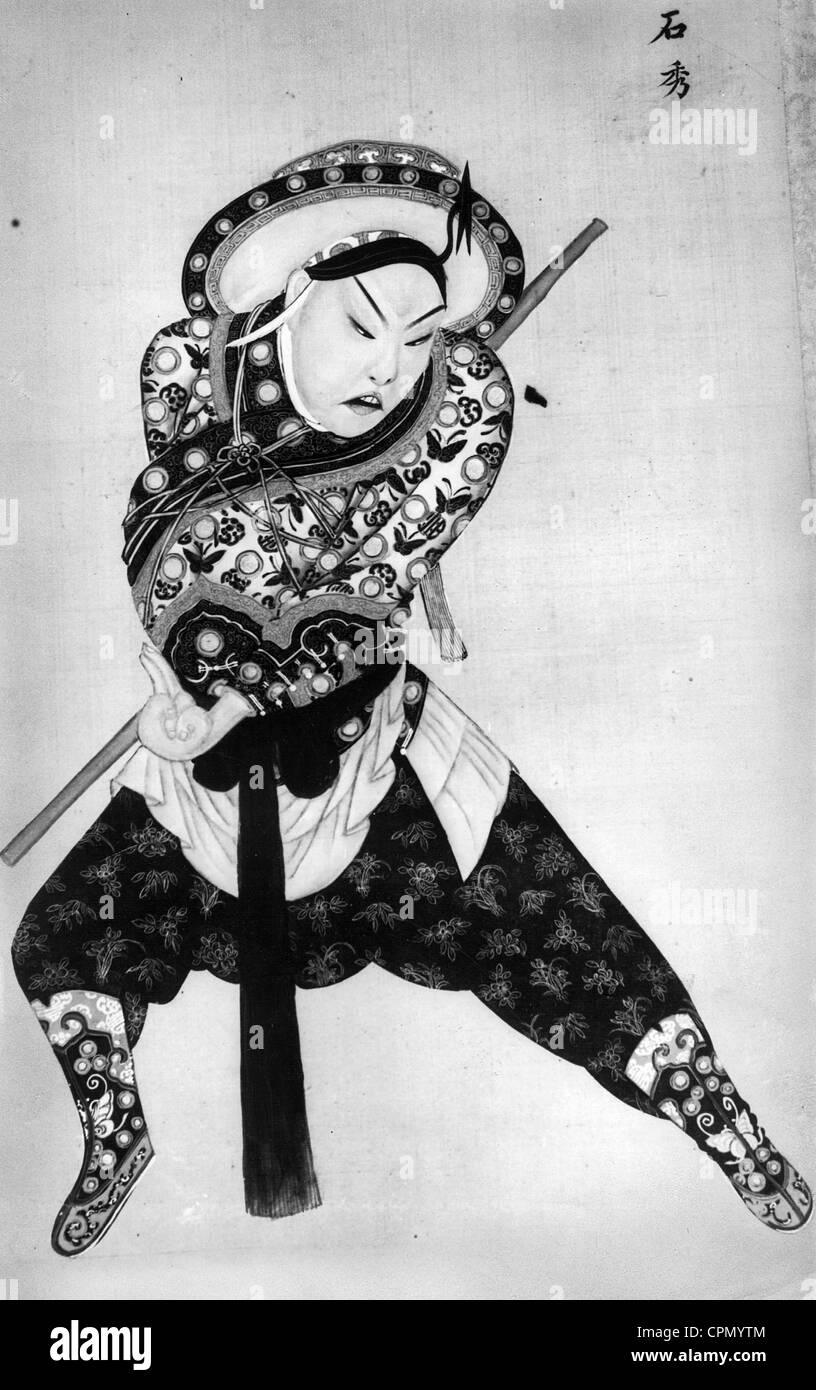 Chinese sword dancer, 1927 Stock Photohttps://www.alamy.com/image-license-details/?v=1https://www.alamy.com/stock-photo-chinese-sword-dancer-1927-48404068.html
Chinese sword dancer, 1927 Stock Photohttps://www.alamy.com/image-license-details/?v=1https://www.alamy.com/stock-photo-chinese-sword-dancer-1927-48404068.htmlRMCPMYTM–Chinese sword dancer, 1927
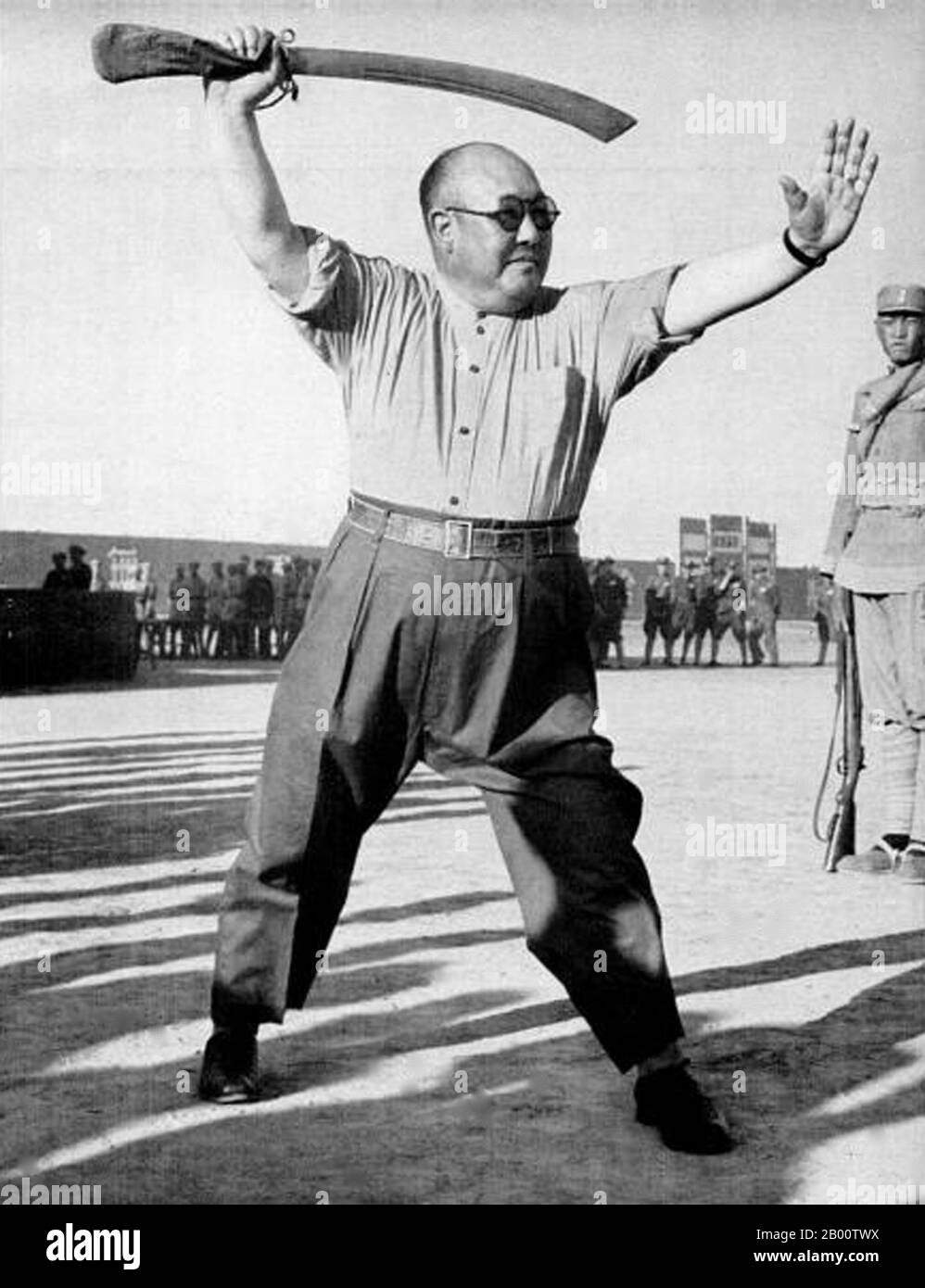 China: Chinese Muslim warlord Ma Hongkui (1892-1970) showing off his swordsmanship c. 1948. Ma Hongkui (Wade–Giles: Ma Hung-kwei) (1892–1970) was a prominent warlord in China during the Republic of China era, ruling the northwestern province of Ningxia. His rank was Lieutenant-general. He was a key member of the ‘Three Ma’ (sometimes ‘Five Ma’) clique of Muslim Warlords who dominated Gansu, Qinghai and Ningxia between approximately 1927 and 1949. Ma Hongkui had a reputation as a good but brutal general who fought well against the Japanese. Stock Photohttps://www.alamy.com/image-license-details/?v=1https://www.alamy.com/china-chinese-muslim-warlord-ma-hongkui-1892-1970-showing-off-his-swordsmanship-c-1948-ma-hongkui-wadegiles-ma-hung-kwei-18921970-was-a-prominent-warlord-in-china-during-the-republic-of-china-era-ruling-the-northwestern-province-of-ningxia-his-rank-was-lieutenant-general-he-was-a-key-member-of-the-three-ma-sometimes-five-ma-clique-of-muslim-warlords-who-dominated-gansu-qinghai-and-ningxia-between-approximately-1927-and-1949-ma-hongkui-had-a-reputation-as-a-good-but-brutal-general-who-fought-well-against-the-japanese-image344226902.html
China: Chinese Muslim warlord Ma Hongkui (1892-1970) showing off his swordsmanship c. 1948. Ma Hongkui (Wade–Giles: Ma Hung-kwei) (1892–1970) was a prominent warlord in China during the Republic of China era, ruling the northwestern province of Ningxia. His rank was Lieutenant-general. He was a key member of the ‘Three Ma’ (sometimes ‘Five Ma’) clique of Muslim Warlords who dominated Gansu, Qinghai and Ningxia between approximately 1927 and 1949. Ma Hongkui had a reputation as a good but brutal general who fought well against the Japanese. Stock Photohttps://www.alamy.com/image-license-details/?v=1https://www.alamy.com/china-chinese-muslim-warlord-ma-hongkui-1892-1970-showing-off-his-swordsmanship-c-1948-ma-hongkui-wadegiles-ma-hung-kwei-18921970-was-a-prominent-warlord-in-china-during-the-republic-of-china-era-ruling-the-northwestern-province-of-ningxia-his-rank-was-lieutenant-general-he-was-a-key-member-of-the-three-ma-sometimes-five-ma-clique-of-muslim-warlords-who-dominated-gansu-qinghai-and-ningxia-between-approximately-1927-and-1949-ma-hongkui-had-a-reputation-as-a-good-but-brutal-general-who-fought-well-against-the-japanese-image344226902.htmlRM2B00TWX–China: Chinese Muslim warlord Ma Hongkui (1892-1970) showing off his swordsmanship c. 1948. Ma Hongkui (Wade–Giles: Ma Hung-kwei) (1892–1970) was a prominent warlord in China during the Republic of China era, ruling the northwestern province of Ningxia. His rank was Lieutenant-general. He was a key member of the ‘Three Ma’ (sometimes ‘Five Ma’) clique of Muslim Warlords who dominated Gansu, Qinghai and Ningxia between approximately 1927 and 1949. Ma Hongkui had a reputation as a good but brutal general who fought well against the Japanese.
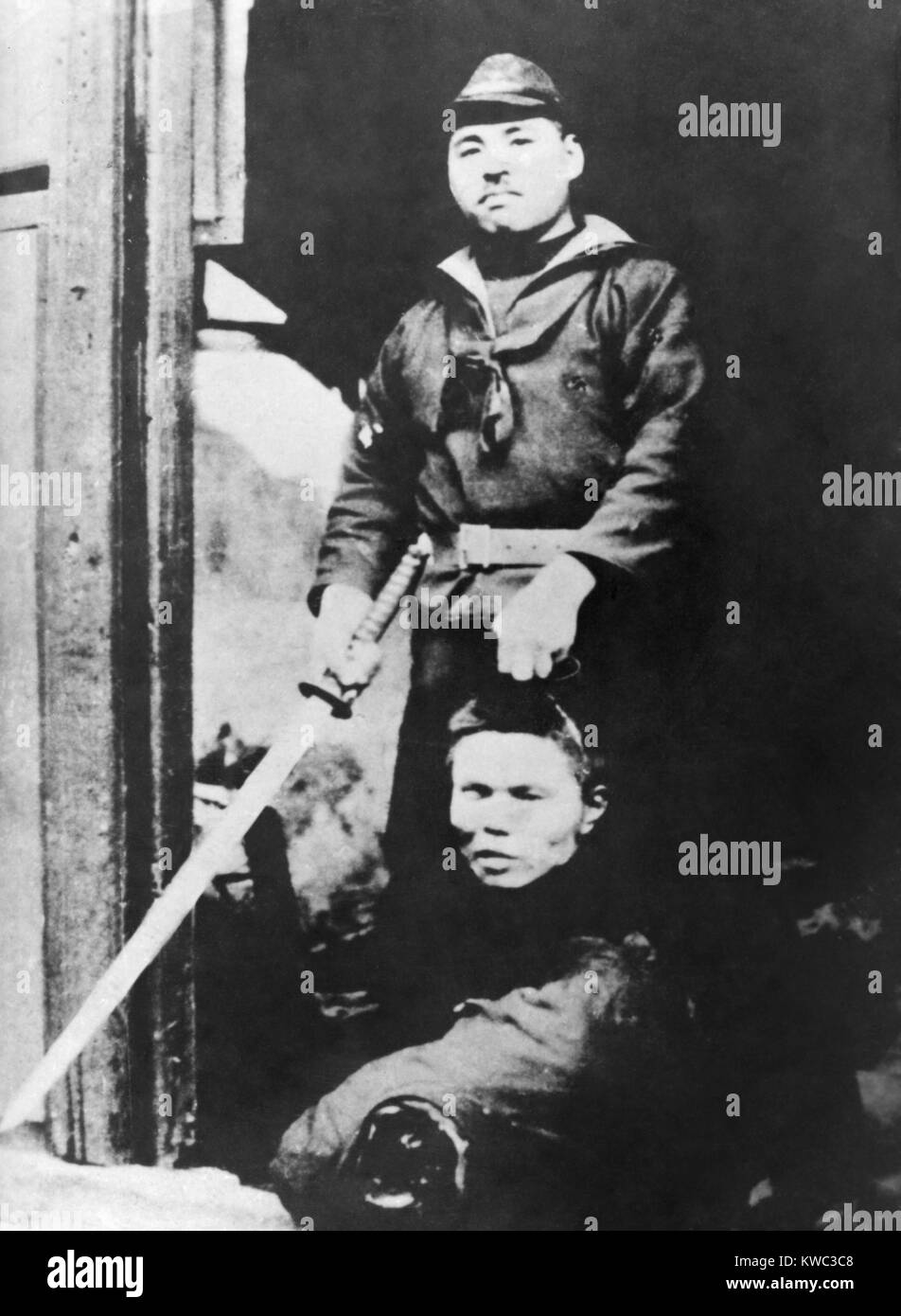 Japanese soldier holds the severed head of a Chinese man and a sword. The Japanese Army brutally occupied large areas of China during the Second Sino-Japanese War from 1937 to 1945. (BSLOC 2015 13 40) Stock Photohttps://www.alamy.com/image-license-details/?v=1https://www.alamy.com/stock-photo-japanese-soldier-holds-the-severed-head-of-a-chinese-man-and-a-sword-170525832.html
Japanese soldier holds the severed head of a Chinese man and a sword. The Japanese Army brutally occupied large areas of China during the Second Sino-Japanese War from 1937 to 1945. (BSLOC 2015 13 40) Stock Photohttps://www.alamy.com/image-license-details/?v=1https://www.alamy.com/stock-photo-japanese-soldier-holds-the-severed-head-of-a-chinese-man-and-a-sword-170525832.htmlRMKWC3C8–Japanese soldier holds the severed head of a Chinese man and a sword. The Japanese Army brutally occupied large areas of China during the Second Sino-Japanese War from 1937 to 1945. (BSLOC 2015 13 40)
 Soldiers of the Chinese national government practicing sword fight. Stock Photohttps://www.alamy.com/image-license-details/?v=1https://www.alamy.com/soldiers-of-the-chinese-national-government-practicing-sword-fight-image247151081.html
Soldiers of the Chinese national government practicing sword fight. Stock Photohttps://www.alamy.com/image-license-details/?v=1https://www.alamy.com/soldiers-of-the-chinese-national-government-practicing-sword-fight-image247151081.htmlRMTA2KM9–Soldiers of the Chinese national government practicing sword fight.
 Street scene in Shanghai, Chinese sword fighter at a demonstration in front of an audience, 02.06.1973 | usage worldwide Stock Photohttps://www.alamy.com/image-license-details/?v=1https://www.alamy.com/street-scene-in-shanghai-chinese-sword-fighter-at-a-demonstration-in-front-of-an-audience-02061973-usage-worldwide-image415144129.html
Street scene in Shanghai, Chinese sword fighter at a demonstration in front of an audience, 02.06.1973 | usage worldwide Stock Photohttps://www.alamy.com/image-license-details/?v=1https://www.alamy.com/street-scene-in-shanghai-chinese-sword-fighter-at-a-demonstration-in-front-of-an-audience-02061973-usage-worldwide-image415144129.htmlRM2F3BCG1–Street scene in Shanghai, Chinese sword fighter at a demonstration in front of an audience, 02.06.1973 | usage worldwide
 Sword (Peidao) with Scabbard mounting, ca. 1750–1800 blade, Japanese; mounting, Chinese. Sword (Peidao) with Scabbard 23387 Stock Photohttps://www.alamy.com/image-license-details/?v=1https://www.alamy.com/sword-peidao-with-scabbard-mounting-ca-17501800-blade-japanese-mounting-chinese-sword-peidao-with-scabbard-23387-image458622937.html
Sword (Peidao) with Scabbard mounting, ca. 1750–1800 blade, Japanese; mounting, Chinese. Sword (Peidao) with Scabbard 23387 Stock Photohttps://www.alamy.com/image-license-details/?v=1https://www.alamy.com/sword-peidao-with-scabbard-mounting-ca-17501800-blade-japanese-mounting-chinese-sword-peidao-with-scabbard-23387-image458622937.htmlRM2HJ426H–Sword (Peidao) with Scabbard mounting, ca. 1750–1800 blade, Japanese; mounting, Chinese. Sword (Peidao) with Scabbard 23387
 A 12 year old boy as a executioner with a sword, he is part of the warlord Au-Kur-Schun's army. Stock Photohttps://www.alamy.com/image-license-details/?v=1https://www.alamy.com/a-12-year-old-boy-as-a-executioner-with-a-sword-he-is-part-of-the-warlord-au-kur-schuns-army-image247117925.html
A 12 year old boy as a executioner with a sword, he is part of the warlord Au-Kur-Schun's army. Stock Photohttps://www.alamy.com/image-license-details/?v=1https://www.alamy.com/a-12-year-old-boy-as-a-executioner-with-a-sword-he-is-part-of-the-warlord-au-kur-schuns-army-image247117925.htmlRMTA15C5–A 12 year old boy as a executioner with a sword, he is part of the warlord Au-Kur-Schun's army.
 Sword with Scabbard 17th century Chinese. Sword with Scabbard. Chinese. 17th century. Steel, mother-of-pearl, coral, shark skin, textile, gold, semiprecious stones. Swords Stock Photohttps://www.alamy.com/image-license-details/?v=1https://www.alamy.com/sword-with-scabbard-17th-century-chinese-sword-with-scabbard-chinese-17th-century-steel-mother-of-pearl-coral-shark-skin-textile-gold-semiprecious-stones-swords-image458055866.html
Sword with Scabbard 17th century Chinese. Sword with Scabbard. Chinese. 17th century. Steel, mother-of-pearl, coral, shark skin, textile, gold, semiprecious stones. Swords Stock Photohttps://www.alamy.com/image-license-details/?v=1https://www.alamy.com/sword-with-scabbard-17th-century-chinese-sword-with-scabbard-chinese-17th-century-steel-mother-of-pearl-coral-shark-skin-textile-gold-semiprecious-stones-swords-image458055866.htmlRM2HH66X2–Sword with Scabbard 17th century Chinese. Sword with Scabbard. Chinese. 17th century. Steel, mother-of-pearl, coral, shark skin, textile, gold, semiprecious stones. Swords
 Chinese soldiers as a post on an armoured train in the district Chungshan / Chung Shan in the South of China. The soldiers are armed with swords - their opponents, the Japanese army has modern weapons. Stock Photohttps://www.alamy.com/image-license-details/?v=1https://www.alamy.com/chinese-soldiers-as-a-post-on-an-armoured-train-in-the-district-chungshan-chung-shan-in-the-south-of-china-the-soldiers-are-armed-with-swords-their-opponents-the-japanese-army-has-modern-weapons-image247140551.html
Chinese soldiers as a post on an armoured train in the district Chungshan / Chung Shan in the South of China. The soldiers are armed with swords - their opponents, the Japanese army has modern weapons. Stock Photohttps://www.alamy.com/image-license-details/?v=1https://www.alamy.com/chinese-soldiers-as-a-post-on-an-armoured-train-in-the-district-chungshan-chung-shan-in-the-south-of-china-the-soldiers-are-armed-with-swords-their-opponents-the-japanese-army-has-modern-weapons-image247140551.htmlRMTA2687–Chinese soldiers as a post on an armoured train in the district Chungshan / Chung Shan in the South of China. The soldiers are armed with swords - their opponents, the Japanese army has modern weapons.
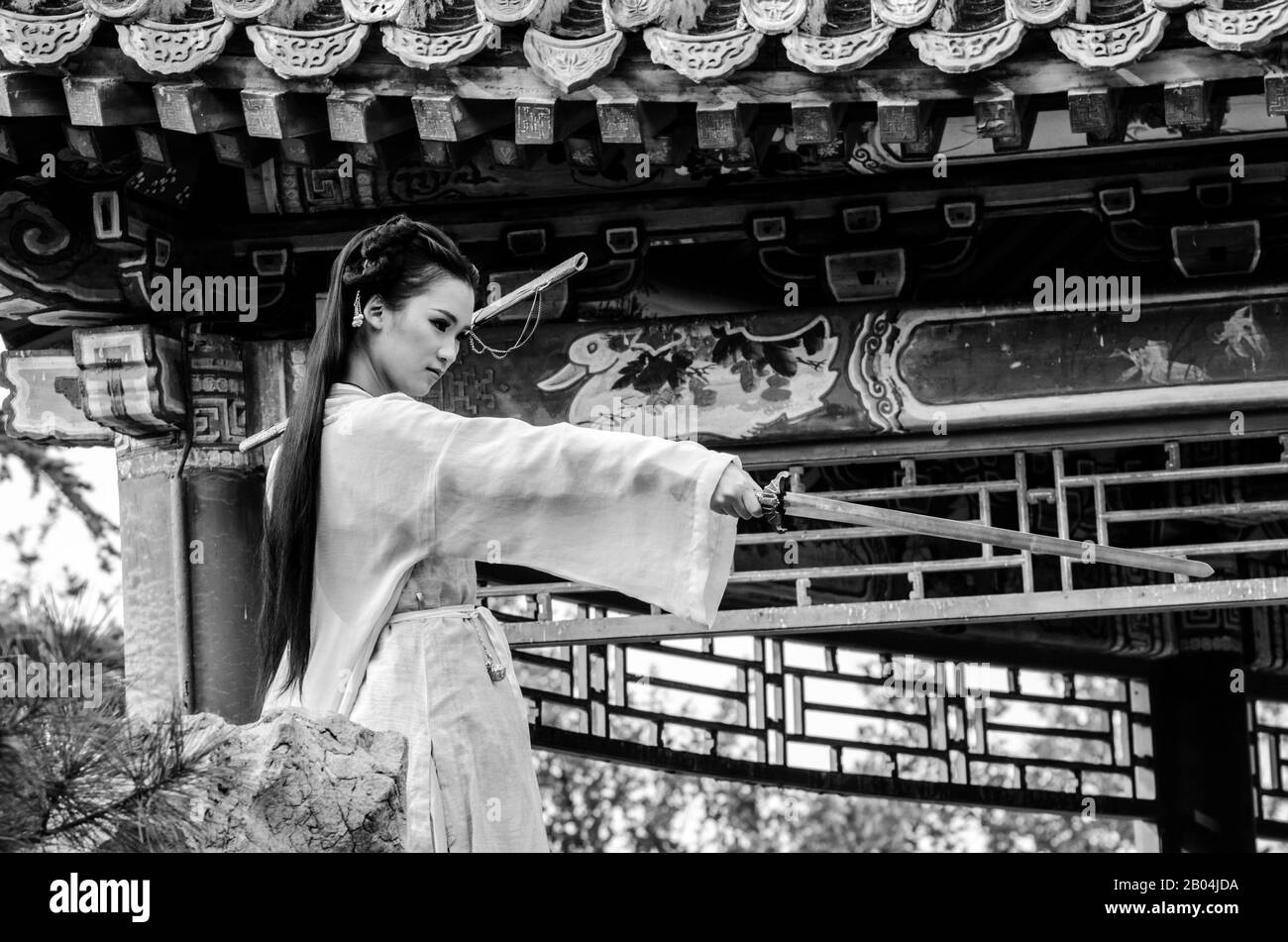 Chinese cosplay photoshoot Stock Photohttps://www.alamy.com/image-license-details/?v=1https://www.alamy.com/chinese-cosplay-photoshoot-image344309654.html
Chinese cosplay photoshoot Stock Photohttps://www.alamy.com/image-license-details/?v=1https://www.alamy.com/chinese-cosplay-photoshoot-image344309654.htmlRM2B04JDA–Chinese cosplay photoshoot
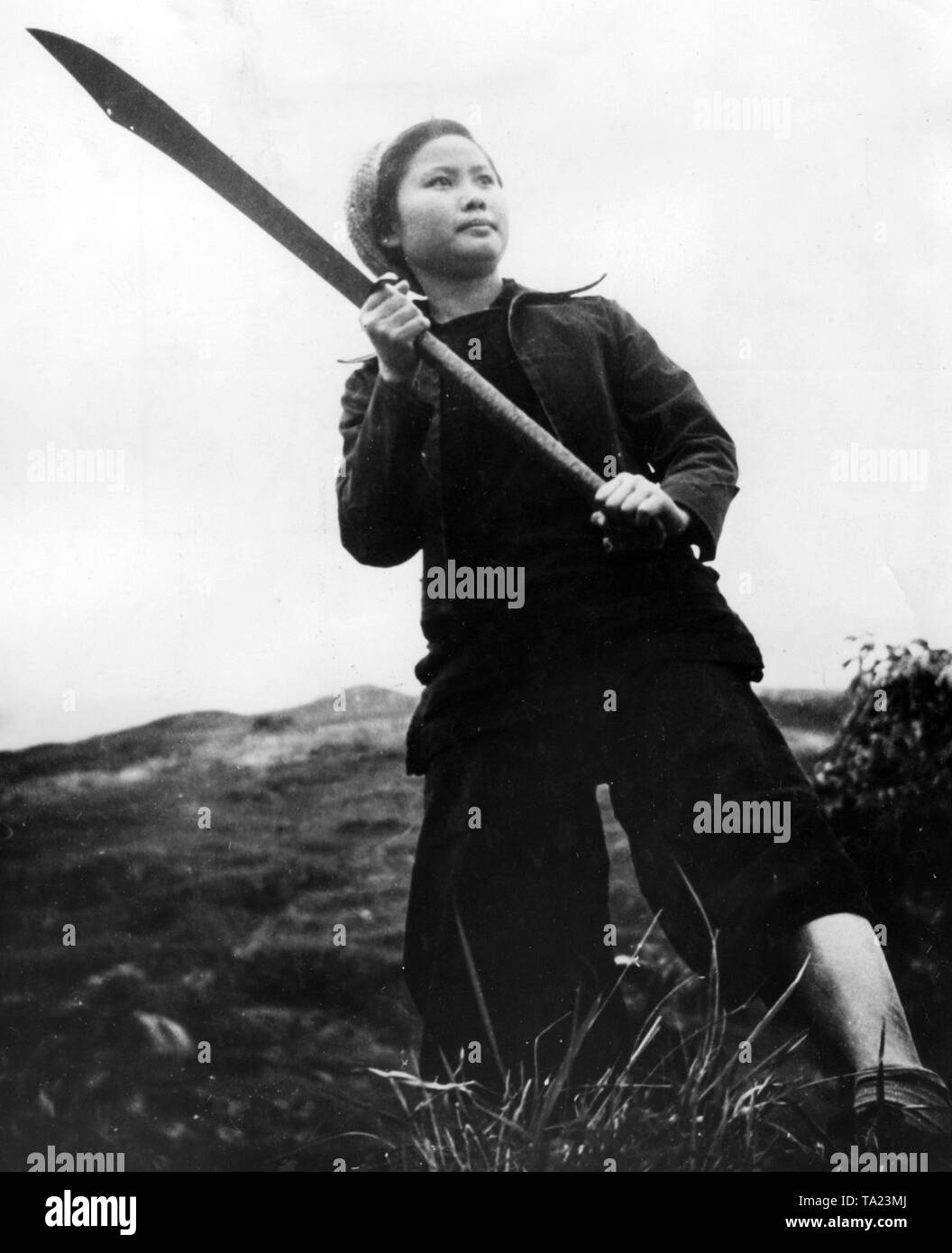 Miss Tam Tai-Mem, a Chinese soldier in the district Chungshan / Chung Shan in the South of China close to Macao. The traditional armed Chinese troops defend themselves against the well equiped Japanese army. Stock Photohttps://www.alamy.com/image-license-details/?v=1https://www.alamy.com/miss-tam-tai-mem-a-chinese-soldier-in-the-district-chungshan-chung-shan-in-the-south-of-china-close-to-macao-the-traditional-armed-chinese-troops-defend-themselves-against-the-well-equiped-japanese-army-image247138546.html
Miss Tam Tai-Mem, a Chinese soldier in the district Chungshan / Chung Shan in the South of China close to Macao. The traditional armed Chinese troops defend themselves against the well equiped Japanese army. Stock Photohttps://www.alamy.com/image-license-details/?v=1https://www.alamy.com/miss-tam-tai-mem-a-chinese-soldier-in-the-district-chungshan-chung-shan-in-the-south-of-china-close-to-macao-the-traditional-armed-chinese-troops-defend-themselves-against-the-well-equiped-japanese-army-image247138546.htmlRMTA23MJ–Miss Tam Tai-Mem, a Chinese soldier in the district Chungshan / Chung Shan in the South of China close to Macao. The traditional armed Chinese troops defend themselves against the well equiped Japanese army.
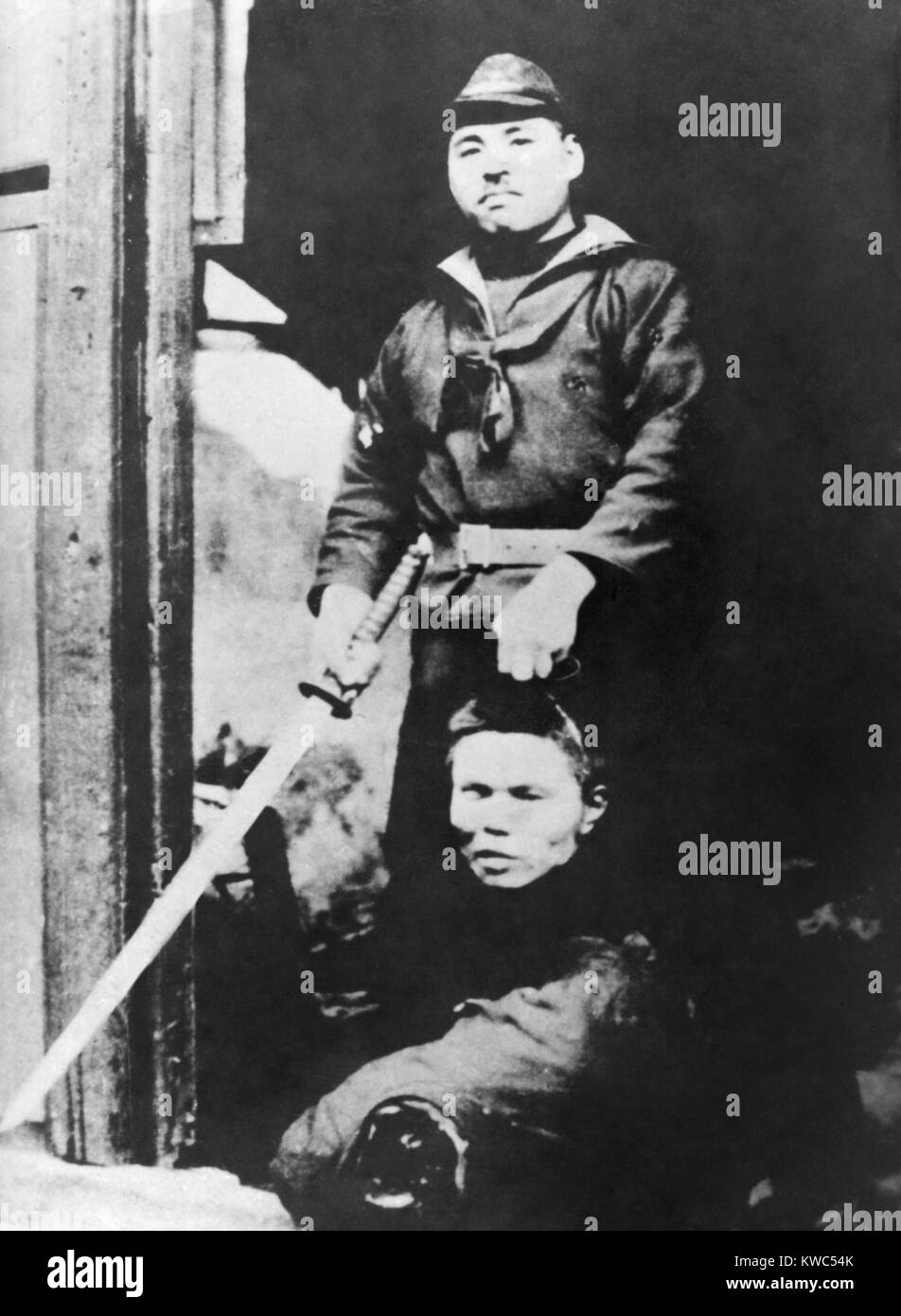 Japanese soldier holds the severed head of a Chinese man and a sword. The Japanese Army brutally occupied large areas of China during the Second Sino-Japanese War from 1937 to 1945. (BSLOC 2015 13 40) Stock Photohttps://www.alamy.com/image-license-details/?v=1https://www.alamy.com/stock-photo-japanese-soldier-holds-the-severed-head-of-a-chinese-man-and-a-sword-170527187.html
Japanese soldier holds the severed head of a Chinese man and a sword. The Japanese Army brutally occupied large areas of China during the Second Sino-Japanese War from 1937 to 1945. (BSLOC 2015 13 40) Stock Photohttps://www.alamy.com/image-license-details/?v=1https://www.alamy.com/stock-photo-japanese-soldier-holds-the-severed-head-of-a-chinese-man-and-a-sword-170527187.htmlRMKWC54K–Japanese soldier holds the severed head of a Chinese man and a sword. The Japanese Army brutally occupied large areas of China during the Second Sino-Japanese War from 1937 to 1945. (BSLOC 2015 13 40)
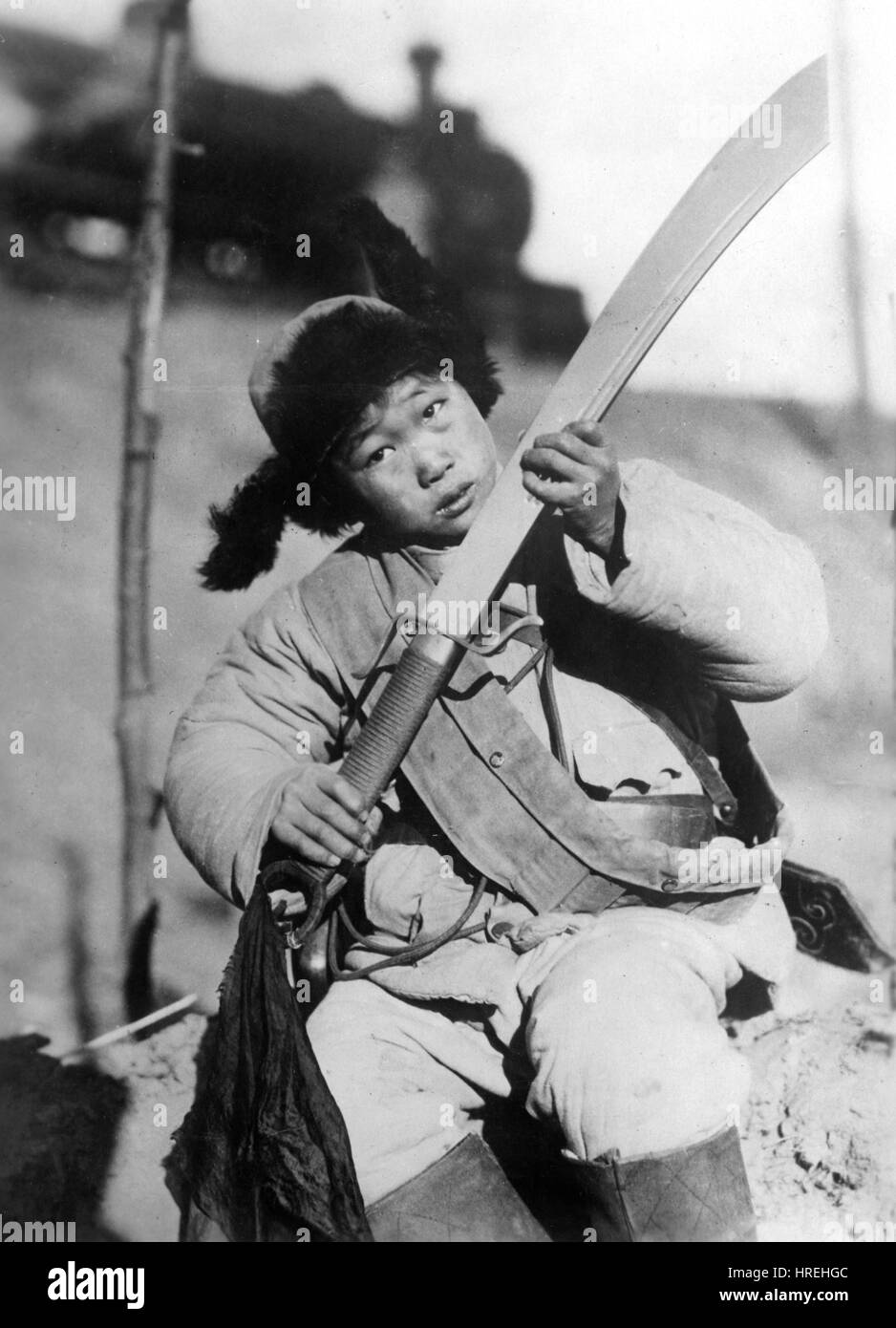 Chinese executioner, 1928 Stock Photohttps://www.alamy.com/image-license-details/?v=1https://www.alamy.com/stock-photo-chinese-executioner-1928-134930780.html
Chinese executioner, 1928 Stock Photohttps://www.alamy.com/image-license-details/?v=1https://www.alamy.com/stock-photo-chinese-executioner-1928-134930780.htmlRMHREHGC–Chinese executioner, 1928
 China/United Kingdom: 'Chinese Swordsman'. Wood engraving by E. T. Wigan, 1844. The First Anglo-Chinese War (1839-1842), known popularly as the First Opium War or simply the Opium War, was fought between the United Kingdom and the Qing Dynasty of China over their conflicting viewpoints on diplomatic relations, trade, and the administration of justice. Chinese officials wished to stop what was perceived as an outflow of silver and to control the spread of opium, and confiscated supplies of opium from British traders. Stock Photohttps://www.alamy.com/image-license-details/?v=1https://www.alamy.com/chinaunited-kingdom-chinese-swordsman-wood-engraving-by-e-t-wigan-1844-the-first-anglo-chinese-war-1839-1842-known-popularly-as-the-first-opium-war-or-simply-the-opium-war-was-fought-between-the-united-kingdom-and-the-qing-dynasty-of-china-over-their-conflicting-viewpoints-on-diplomatic-relations-trade-and-the-administration-of-justice-chinese-officials-wished-to-stop-what-was-perceived-as-an-outflow-of-silver-and-to-control-the-spread-of-opium-and-confiscated-supplies-of-opium-from-british-traders-image344247647.html
China/United Kingdom: 'Chinese Swordsman'. Wood engraving by E. T. Wigan, 1844. The First Anglo-Chinese War (1839-1842), known popularly as the First Opium War or simply the Opium War, was fought between the United Kingdom and the Qing Dynasty of China over their conflicting viewpoints on diplomatic relations, trade, and the administration of justice. Chinese officials wished to stop what was perceived as an outflow of silver and to control the spread of opium, and confiscated supplies of opium from British traders. Stock Photohttps://www.alamy.com/image-license-details/?v=1https://www.alamy.com/chinaunited-kingdom-chinese-swordsman-wood-engraving-by-e-t-wigan-1844-the-first-anglo-chinese-war-1839-1842-known-popularly-as-the-first-opium-war-or-simply-the-opium-war-was-fought-between-the-united-kingdom-and-the-qing-dynasty-of-china-over-their-conflicting-viewpoints-on-diplomatic-relations-trade-and-the-administration-of-justice-chinese-officials-wished-to-stop-what-was-perceived-as-an-outflow-of-silver-and-to-control-the-spread-of-opium-and-confiscated-supplies-of-opium-from-british-traders-image344247647.htmlRM2B01RAR–China/United Kingdom: 'Chinese Swordsman'. Wood engraving by E. T. Wigan, 1844. The First Anglo-Chinese War (1839-1842), known popularly as the First Opium War or simply the Opium War, was fought between the United Kingdom and the Qing Dynasty of China over their conflicting viewpoints on diplomatic relations, trade, and the administration of justice. Chinese officials wished to stop what was perceived as an outflow of silver and to control the spread of opium, and confiscated supplies of opium from British traders.
 Chinese Warrior, 1939 Stock Photohttps://www.alamy.com/image-license-details/?v=1https://www.alamy.com/stock-photo-chinese-warrior-1939-134930788.html
Chinese Warrior, 1939 Stock Photohttps://www.alamy.com/image-license-details/?v=1https://www.alamy.com/stock-photo-chinese-warrior-1939-134930788.htmlRMHREHGM–Chinese Warrior, 1939
 Mrs Ching wielding a sword c.1810. Widow of pirate Admiral Ching who attacked the coasts of Annam and Cochin China, but was Stock Photohttps://www.alamy.com/image-license-details/?v=1https://www.alamy.com/stock-photo-mrs-ching-wielding-a-sword-c1810-widow-of-pirate-admiral-ching-who-83338675.html
Mrs Ching wielding a sword c.1810. Widow of pirate Admiral Ching who attacked the coasts of Annam and Cochin China, but was Stock Photohttps://www.alamy.com/image-license-details/?v=1https://www.alamy.com/stock-photo-mrs-ching-wielding-a-sword-c1810-widow-of-pirate-admiral-ching-who-83338675.htmlRMERGB97–Mrs Ching wielding a sword c.1810. Widow of pirate Admiral Ching who attacked the coasts of Annam and Cochin China, but was
 Chinese troops in training, 1925 Stock Photohttps://www.alamy.com/image-license-details/?v=1https://www.alamy.com/stock-photo-chinese-troops-in-training-1925-134930776.html
Chinese troops in training, 1925 Stock Photohttps://www.alamy.com/image-license-details/?v=1https://www.alamy.com/stock-photo-chinese-troops-in-training-1925-134930776.htmlRMHREHG8–Chinese troops in training, 1925
RF2X20AHR–Martial arts weapons: katana sword icon
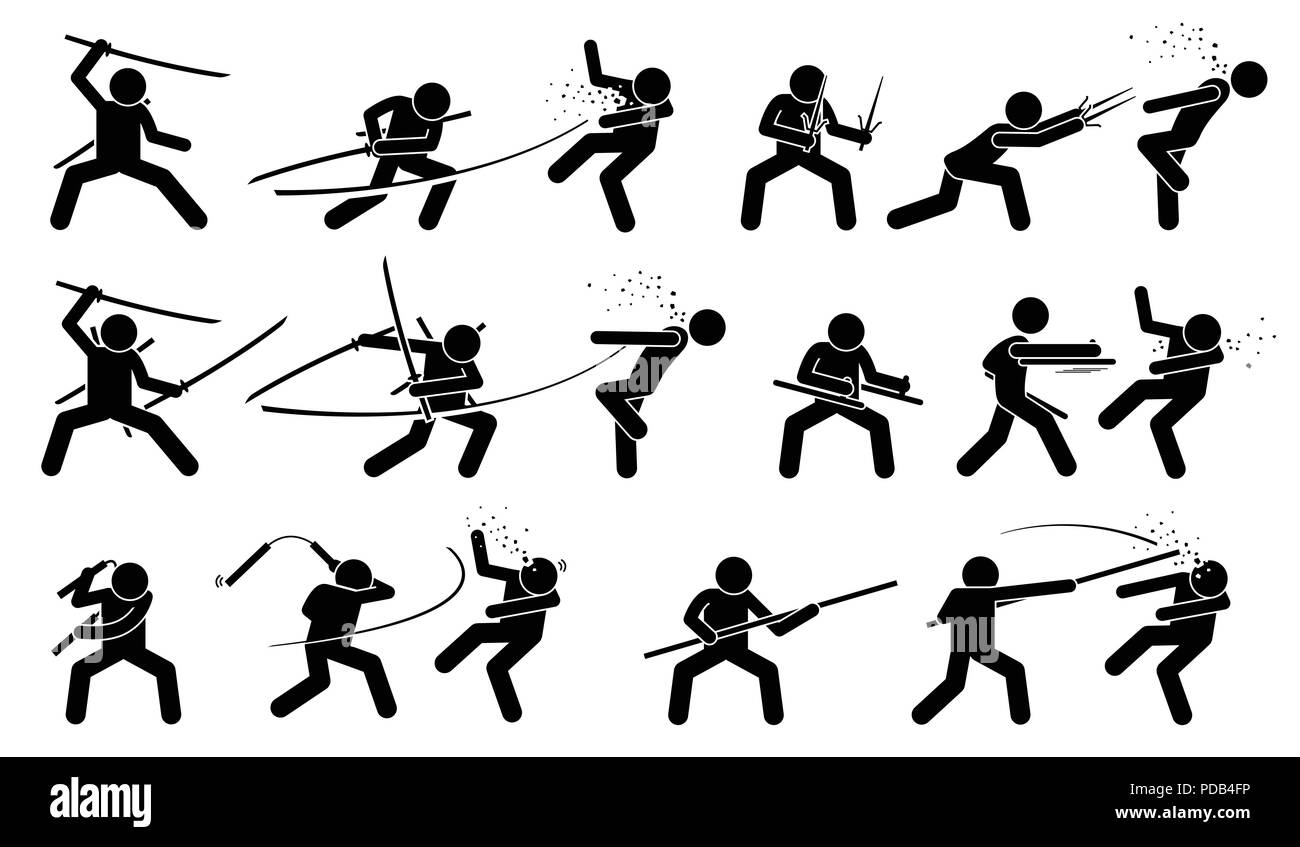 Man attacking opponent with traditional Japanese melee fighting weapons. Stock Vectorhttps://www.alamy.com/image-license-details/?v=1https://www.alamy.com/man-attacking-opponent-with-traditional-japanese-melee-fighting-weapons-image214759994.html
Man attacking opponent with traditional Japanese melee fighting weapons. Stock Vectorhttps://www.alamy.com/image-license-details/?v=1https://www.alamy.com/man-attacking-opponent-with-traditional-japanese-melee-fighting-weapons-image214759994.htmlRFPDB4FP–Man attacking opponent with traditional Japanese melee fighting weapons.
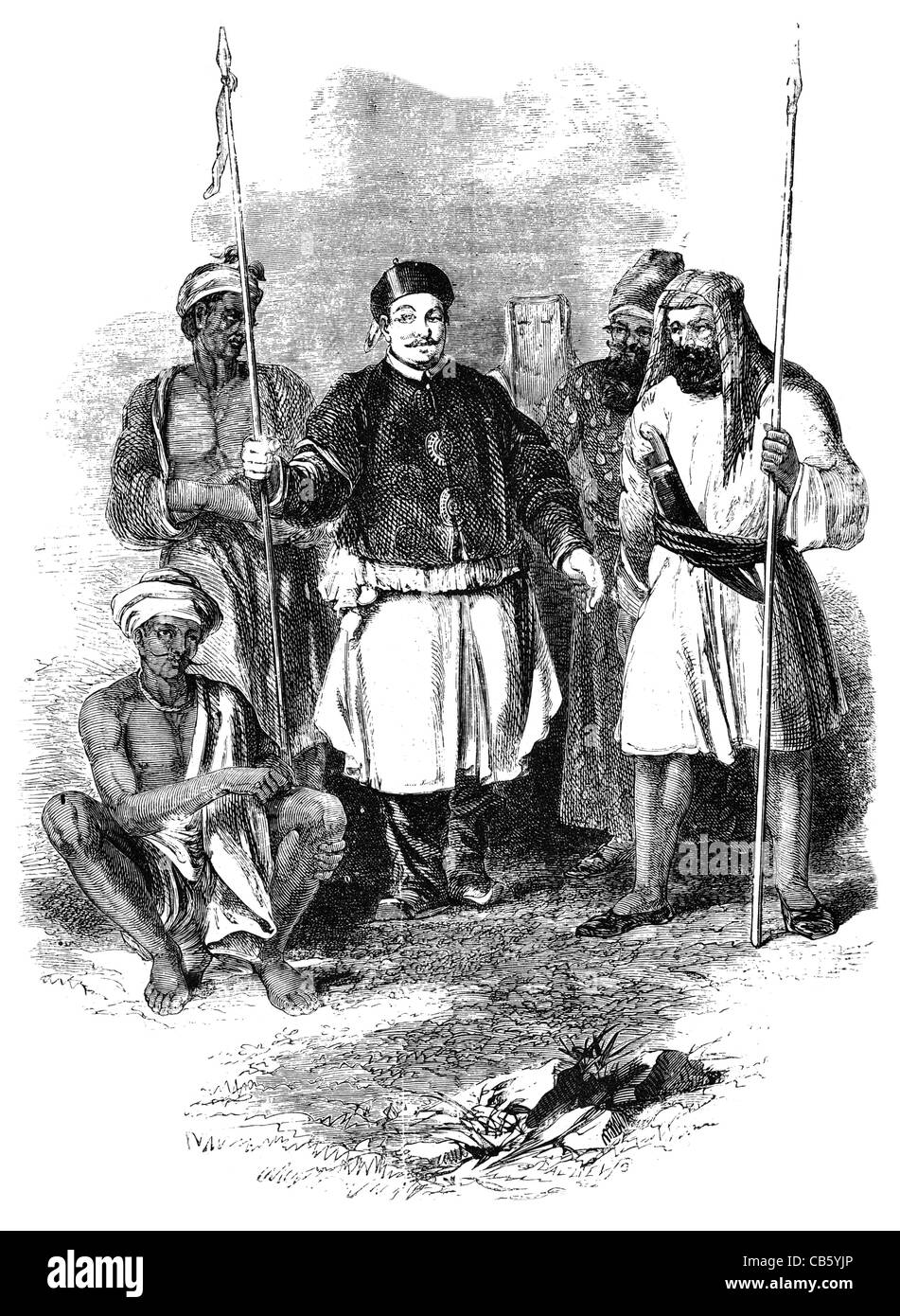 Malay Japanese Chinese Persians Arab Period costume dress clothes outfit clothing robe hat shoes apparel spear weapons weapon Stock Photohttps://www.alamy.com/image-license-details/?v=1https://www.alamy.com/stock-photo-malay-japanese-chinese-persians-arab-period-costume-dress-clothes-41313406.html
Malay Japanese Chinese Persians Arab Period costume dress clothes outfit clothing robe hat shoes apparel spear weapons weapon Stock Photohttps://www.alamy.com/image-license-details/?v=1https://www.alamy.com/stock-photo-malay-japanese-chinese-persians-arab-period-costume-dress-clothes-41313406.htmlRMCB5YJP–Malay Japanese Chinese Persians Arab Period costume dress clothes outfit clothing robe hat shoes apparel spear weapons weapon
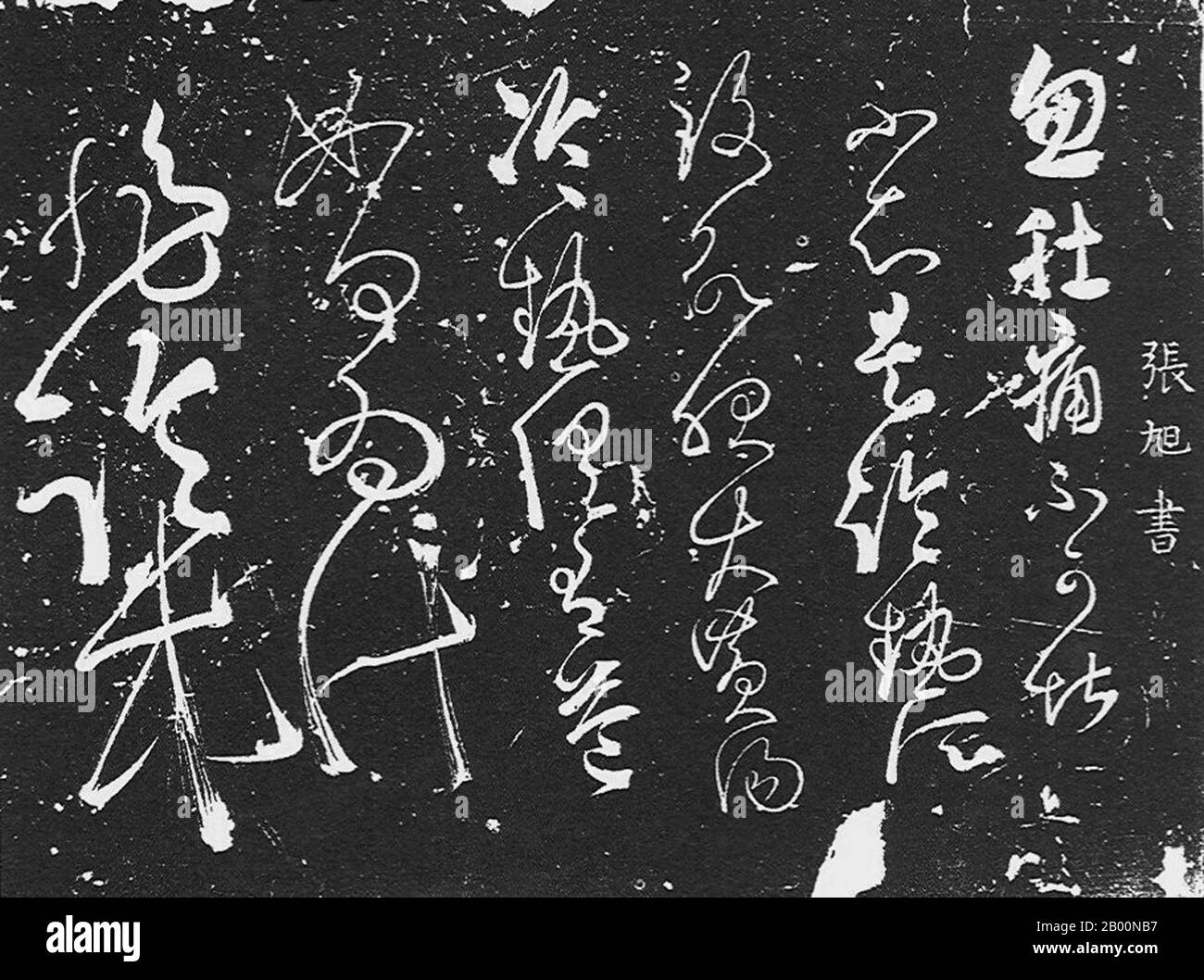 China: Chinese script (cursive). Tang Dynasty calligraphy attributed to Zhang Shui (9th century). As the originator of Wild Cursive Style, and a nonconformist in spirit, Zhang Shui acted altogether against calligraphic convention, earning the nickname 'Crazy Zhang'. While intoxicated, he was inspired and would proceed to create his wonderful cursive calligraphy in front of the dignitaries. Tang Emperor Wenzong (r.809-840) regarded Zhang Shui's cursive script together with Lee Bai's poem and Pei Ming's sword playing as the 'three exquisite talents of the Tang Dynasty'. Stock Photohttps://www.alamy.com/image-license-details/?v=1https://www.alamy.com/china-chinese-script-cursive-tang-dynasty-calligraphy-attributed-to-zhang-shui-9th-century-as-the-originator-of-wild-cursive-style-and-a-nonconformist-in-spirit-zhang-shui-acted-altogether-against-calligraphic-convention-earning-the-nickname-crazy-zhang-while-intoxicated-he-was-inspired-and-would-proceed-to-create-his-wonderful-cursive-calligraphy-in-front-of-the-dignitaries-tang-emperor-wenzong-r809-840-regarded-zhang-shuis-cursive-script-together-with-lee-bais-poem-and-pei-mings-sword-playing-as-the-three-exquisite-talents-of-the-tang-dynasty-image344224139.html
China: Chinese script (cursive). Tang Dynasty calligraphy attributed to Zhang Shui (9th century). As the originator of Wild Cursive Style, and a nonconformist in spirit, Zhang Shui acted altogether against calligraphic convention, earning the nickname 'Crazy Zhang'. While intoxicated, he was inspired and would proceed to create his wonderful cursive calligraphy in front of the dignitaries. Tang Emperor Wenzong (r.809-840) regarded Zhang Shui's cursive script together with Lee Bai's poem and Pei Ming's sword playing as the 'three exquisite talents of the Tang Dynasty'. Stock Photohttps://www.alamy.com/image-license-details/?v=1https://www.alamy.com/china-chinese-script-cursive-tang-dynasty-calligraphy-attributed-to-zhang-shui-9th-century-as-the-originator-of-wild-cursive-style-and-a-nonconformist-in-spirit-zhang-shui-acted-altogether-against-calligraphic-convention-earning-the-nickname-crazy-zhang-while-intoxicated-he-was-inspired-and-would-proceed-to-create-his-wonderful-cursive-calligraphy-in-front-of-the-dignitaries-tang-emperor-wenzong-r809-840-regarded-zhang-shuis-cursive-script-together-with-lee-bais-poem-and-pei-mings-sword-playing-as-the-three-exquisite-talents-of-the-tang-dynasty-image344224139.htmlRM2B00NB7–China: Chinese script (cursive). Tang Dynasty calligraphy attributed to Zhang Shui (9th century). As the originator of Wild Cursive Style, and a nonconformist in spirit, Zhang Shui acted altogether against calligraphic convention, earning the nickname 'Crazy Zhang'. While intoxicated, he was inspired and would proceed to create his wonderful cursive calligraphy in front of the dignitaries. Tang Emperor Wenzong (r.809-840) regarded Zhang Shui's cursive script together with Lee Bai's poem and Pei Ming's sword playing as the 'three exquisite talents of the Tang Dynasty'.
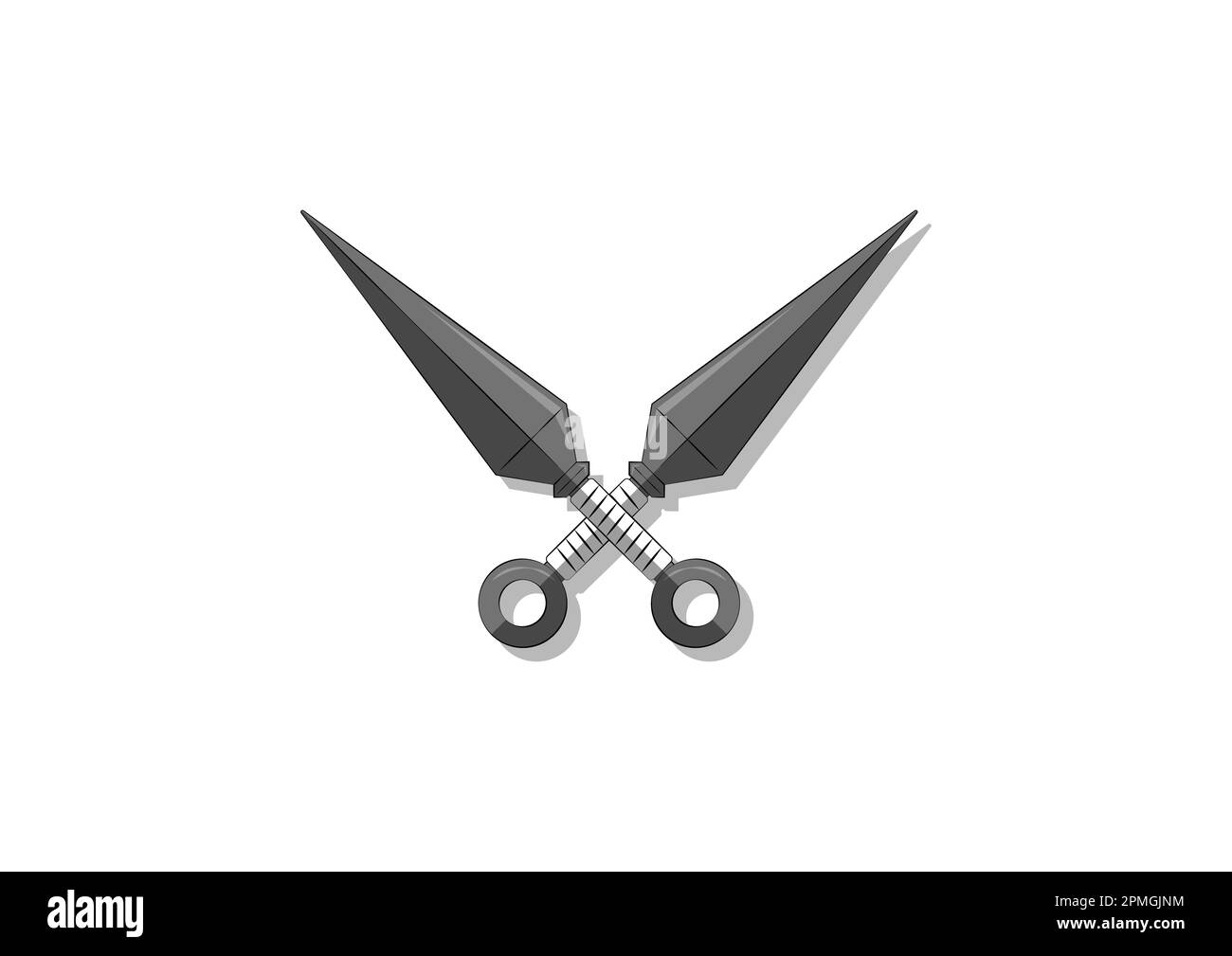 Ninja Kunai Flat Design on White Background Stock Vectorhttps://www.alamy.com/image-license-details/?v=1https://www.alamy.com/ninja-kunai-flat-design-on-white-background-image546180480.html
Ninja Kunai Flat Design on White Background Stock Vectorhttps://www.alamy.com/image-license-details/?v=1https://www.alamy.com/ninja-kunai-flat-design-on-white-background-image546180480.htmlRF2PMGJNM–Ninja Kunai Flat Design on White Background
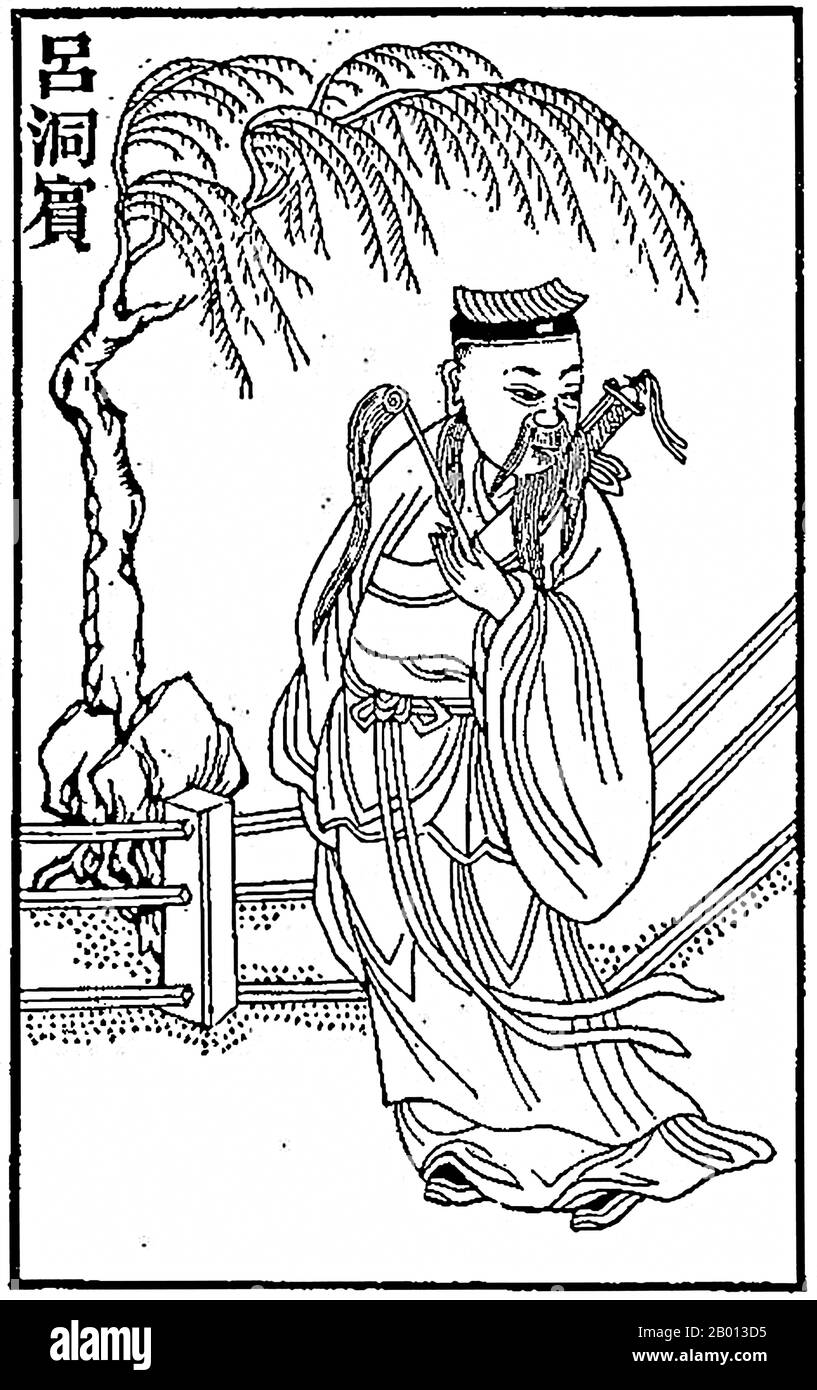 China: Lu Dongbin, one of the Daoist 'Eight Immortals'. A historical figure mentioned in the official 'History of Song', he is depicted dressed as a scholar and often bears a sword on his back that dispels evil spirits. Illustration, c. 1916. The Eight Immortals (Chinese: Baxian; Pa-hsien) are a group of legendary 'xian' (immortals; transcendents; fairies) in Chinese mythology. Each Immortal's power can give life or destroy evil. Most of them are said to have been born in the Tang Dynasty or Song Dynasty. They are revered in Daoism (Taoism) and are also a popular element in secular culture. Stock Photohttps://www.alamy.com/image-license-details/?v=1https://www.alamy.com/china-lu-dongbin-one-of-the-daoist-eight-immortals-a-historical-figure-mentioned-in-the-official-history-of-song-he-is-depicted-dressed-as-a-scholar-and-often-bears-a-sword-on-his-back-that-dispels-evil-spirits-illustration-c-1916-the-eight-immortals-chinese-baxian-pa-hsien-are-a-group-of-legendary-xian-immortals-transcendents-fairies-in-chinese-mythology-each-immortals-power-can-give-life-or-destroy-evil-most-of-them-are-said-to-have-been-born-in-the-tang-dynasty-or-song-dynasty-they-are-revered-in-daoism-taoism-and-are-also-a-popular-element-in-secular-culture-image344232033.html
China: Lu Dongbin, one of the Daoist 'Eight Immortals'. A historical figure mentioned in the official 'History of Song', he is depicted dressed as a scholar and often bears a sword on his back that dispels evil spirits. Illustration, c. 1916. The Eight Immortals (Chinese: Baxian; Pa-hsien) are a group of legendary 'xian' (immortals; transcendents; fairies) in Chinese mythology. Each Immortal's power can give life or destroy evil. Most of them are said to have been born in the Tang Dynasty or Song Dynasty. They are revered in Daoism (Taoism) and are also a popular element in secular culture. Stock Photohttps://www.alamy.com/image-license-details/?v=1https://www.alamy.com/china-lu-dongbin-one-of-the-daoist-eight-immortals-a-historical-figure-mentioned-in-the-official-history-of-song-he-is-depicted-dressed-as-a-scholar-and-often-bears-a-sword-on-his-back-that-dispels-evil-spirits-illustration-c-1916-the-eight-immortals-chinese-baxian-pa-hsien-are-a-group-of-legendary-xian-immortals-transcendents-fairies-in-chinese-mythology-each-immortals-power-can-give-life-or-destroy-evil-most-of-them-are-said-to-have-been-born-in-the-tang-dynasty-or-song-dynasty-they-are-revered-in-daoism-taoism-and-are-also-a-popular-element-in-secular-culture-image344232033.htmlRM2B013D5–China: Lu Dongbin, one of the Daoist 'Eight Immortals'. A historical figure mentioned in the official 'History of Song', he is depicted dressed as a scholar and often bears a sword on his back that dispels evil spirits. Illustration, c. 1916. The Eight Immortals (Chinese: Baxian; Pa-hsien) are a group of legendary 'xian' (immortals; transcendents; fairies) in Chinese mythology. Each Immortal's power can give life or destroy evil. Most of them are said to have been born in the Tang Dynasty or Song Dynasty. They are revered in Daoism (Taoism) and are also a popular element in secular culture.
RF2H8Y4XG–For icons, web, postcards, decor, packaging, prints for things, covers for notebooks, decoration of boxes for sticker, backpack, individual element, c
 Vietnam: Aerial photograph of Ho Hoan Kiem, the 'Lake of the Restored Sword', c. 1940s. Hoan Kiem Lake (Vietnamese: Hồ Hoàn Kiếm, meaning 'Lake of the Returned Sword', also known as Hồ Gươm - Sword Lake) is a lake in the historical centre of Hanoi, the capital city of Vietnam. The lake is one of the major scenic spots in the city and serves as a focal point for its public life. According to legend, emperor Lê Lợi handed a magic sword called Heaven's Will which brought him victory in his revolt against the Chinese Ming Dynasty back to the Golden Turtle God (Kim Qui) in the lake. Stock Photohttps://www.alamy.com/image-license-details/?v=1https://www.alamy.com/vietnam-aerial-photograph-of-ho-hoan-kiem-the-lake-of-the-restored-sword-c-1940s-hoan-kiem-lake-vietnamese-h-hon-kim-meaning-lake-of-the-returned-sword-also-known-as-h-gm-sword-lake-is-a-lake-in-the-historical-centre-of-hanoi-the-capital-city-of-vietnam-the-lake-is-one-of-the-major-scenic-spots-in-the-city-and-serves-as-a-focal-point-for-its-public-life-according-to-legend-emperor-l-li-handed-a-magic-sword-called-heavens-will-which-brought-him-victory-in-his-revolt-against-the-chinese-ming-dynasty-back-to-the-golden-turtle-god-kim-qui-in-the-lake-image344247875.html
Vietnam: Aerial photograph of Ho Hoan Kiem, the 'Lake of the Restored Sword', c. 1940s. Hoan Kiem Lake (Vietnamese: Hồ Hoàn Kiếm, meaning 'Lake of the Returned Sword', also known as Hồ Gươm - Sword Lake) is a lake in the historical centre of Hanoi, the capital city of Vietnam. The lake is one of the major scenic spots in the city and serves as a focal point for its public life. According to legend, emperor Lê Lợi handed a magic sword called Heaven's Will which brought him victory in his revolt against the Chinese Ming Dynasty back to the Golden Turtle God (Kim Qui) in the lake. Stock Photohttps://www.alamy.com/image-license-details/?v=1https://www.alamy.com/vietnam-aerial-photograph-of-ho-hoan-kiem-the-lake-of-the-restored-sword-c-1940s-hoan-kiem-lake-vietnamese-h-hon-kim-meaning-lake-of-the-returned-sword-also-known-as-h-gm-sword-lake-is-a-lake-in-the-historical-centre-of-hanoi-the-capital-city-of-vietnam-the-lake-is-one-of-the-major-scenic-spots-in-the-city-and-serves-as-a-focal-point-for-its-public-life-according-to-legend-emperor-l-li-handed-a-magic-sword-called-heavens-will-which-brought-him-victory-in-his-revolt-against-the-chinese-ming-dynasty-back-to-the-golden-turtle-god-kim-qui-in-the-lake-image344247875.htmlRM2B01RJY–Vietnam: Aerial photograph of Ho Hoan Kiem, the 'Lake of the Restored Sword', c. 1940s. Hoan Kiem Lake (Vietnamese: Hồ Hoàn Kiếm, meaning 'Lake of the Returned Sword', also known as Hồ Gươm - Sword Lake) is a lake in the historical centre of Hanoi, the capital city of Vietnam. The lake is one of the major scenic spots in the city and serves as a focal point for its public life. According to legend, emperor Lê Lợi handed a magic sword called Heaven's Will which brought him victory in his revolt against the Chinese Ming Dynasty back to the Golden Turtle God (Kim Qui) in the lake.
 Chinese soldiers from a 'Big Sword Unit' during the Japanese invasion of Jehol Province, China, 1933 Stock Photohttps://www.alamy.com/image-license-details/?v=1https://www.alamy.com/stock-photo-chinese-soldiers-from-a-big-sword-unit-during-the-japanese-invasion-171395348.html
Chinese soldiers from a 'Big Sword Unit' during the Japanese invasion of Jehol Province, China, 1933 Stock Photohttps://www.alamy.com/image-license-details/?v=1https://www.alamy.com/stock-photo-chinese-soldiers-from-a-big-sword-unit-during-the-japanese-invasion-171395348.htmlRMKXRMEC–Chinese soldiers from a 'Big Sword Unit' during the Japanese invasion of Jehol Province, China, 1933
 Sword with Scabbard and Belt Hook 18th century Chinese. Sword with Scabbard and Belt Hook. Chinese. 18th century. Steel, gold, brass, shark skin, wood, textile. Swords Stock Photohttps://www.alamy.com/image-license-details/?v=1https://www.alamy.com/sword-with-scabbard-and-belt-hook-18th-century-chinese-sword-with-scabbard-and-belt-hook-chinese-18th-century-steel-gold-brass-shark-skin-wood-textile-swords-image458120942.html
Sword with Scabbard and Belt Hook 18th century Chinese. Sword with Scabbard and Belt Hook. Chinese. 18th century. Steel, gold, brass, shark skin, wood, textile. Swords Stock Photohttps://www.alamy.com/image-license-details/?v=1https://www.alamy.com/sword-with-scabbard-and-belt-hook-18th-century-chinese-sword-with-scabbard-and-belt-hook-chinese-18th-century-steel-gold-brass-shark-skin-wood-textile-swords-image458120942.htmlRM2HH95X6–Sword with Scabbard and Belt Hook 18th century Chinese. Sword with Scabbard and Belt Hook. Chinese. 18th century. Steel, gold, brass, shark skin, wood, textile. Swords
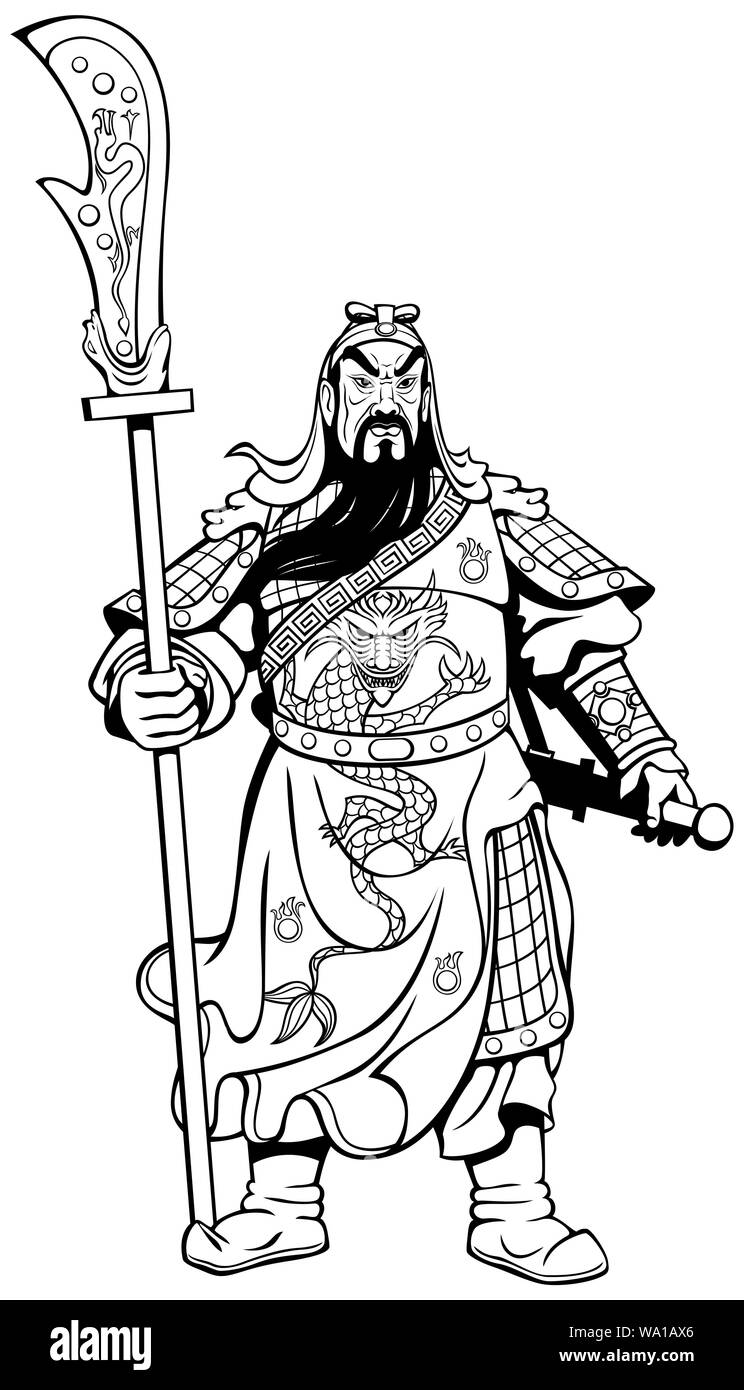 Chinese Warrior Line Art Stock Vectorhttps://www.alamy.com/image-license-details/?v=1https://www.alamy.com/chinese-warrior-line-art-image264332606.html
Chinese Warrior Line Art Stock Vectorhttps://www.alamy.com/image-license-details/?v=1https://www.alamy.com/chinese-warrior-line-art-image264332606.htmlRFWA1AX6–Chinese Warrior Line Art
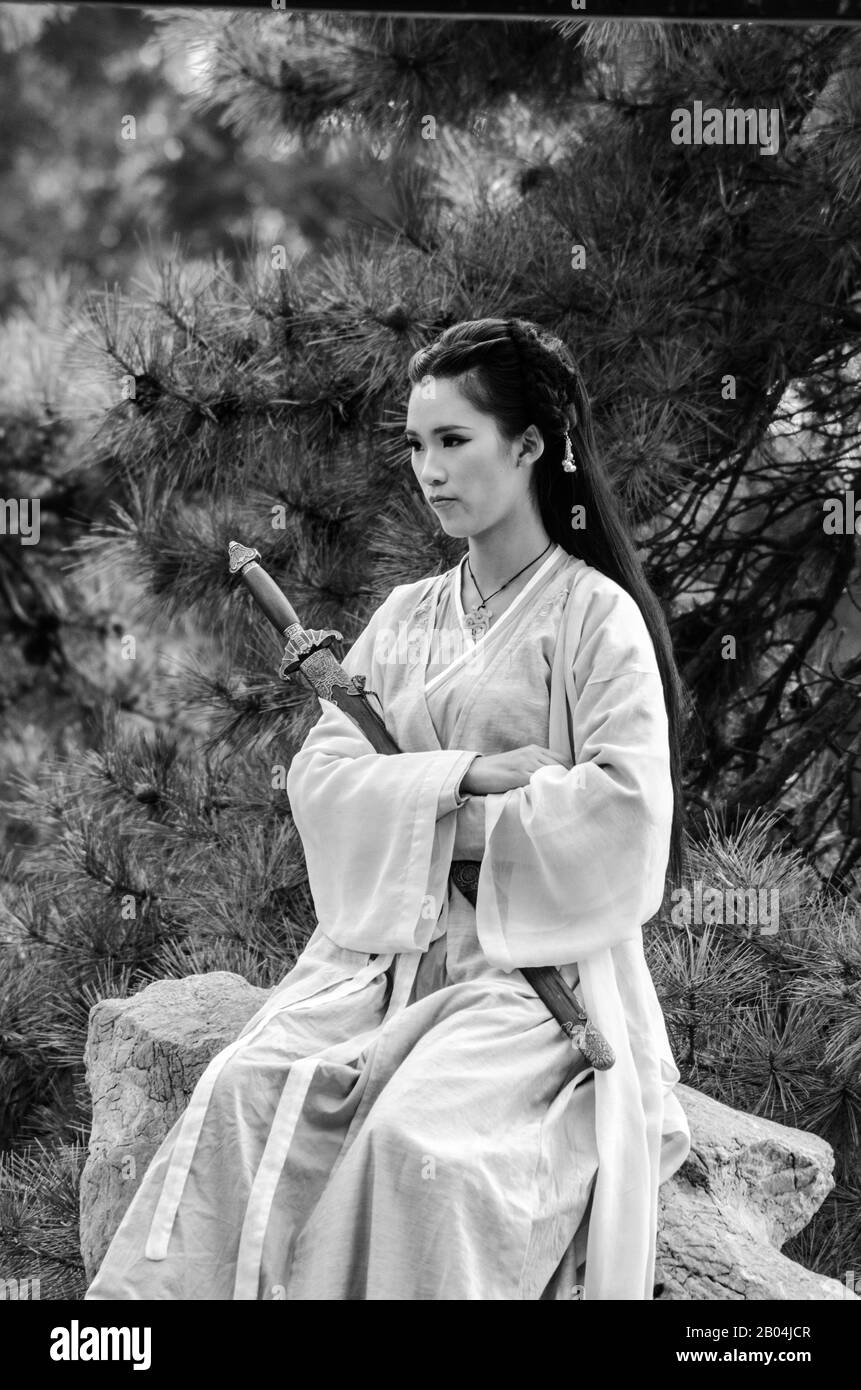 Chinese cosplay photoshoot Stock Photohttps://www.alamy.com/image-license-details/?v=1https://www.alamy.com/chinese-cosplay-photoshoot-image344309639.html
Chinese cosplay photoshoot Stock Photohttps://www.alamy.com/image-license-details/?v=1https://www.alamy.com/chinese-cosplay-photoshoot-image344309639.htmlRM2B04JCR–Chinese cosplay photoshoot
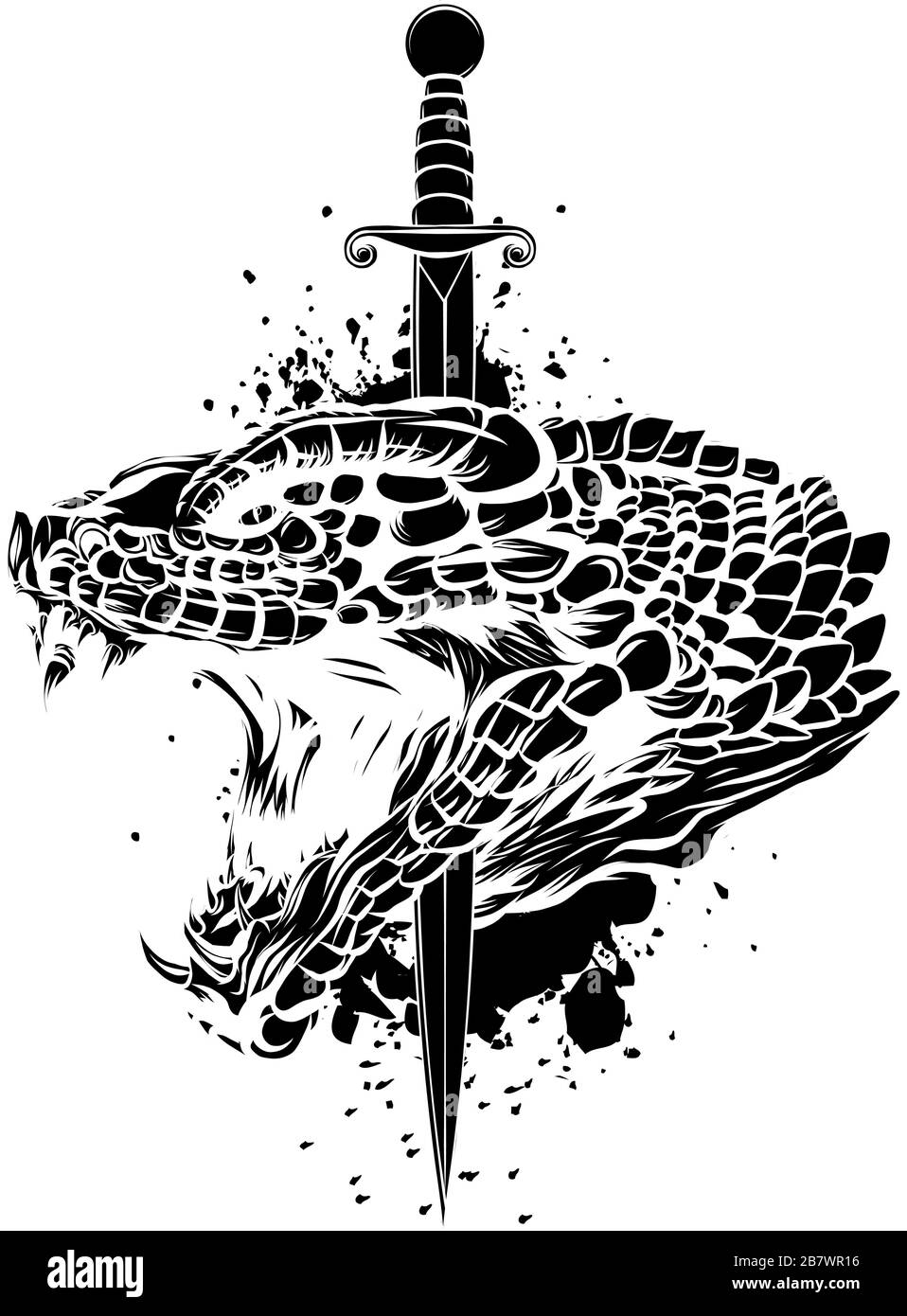 color dragon sword logo vector illustration design Stock Vectorhttps://www.alamy.com/image-license-details/?v=1https://www.alamy.com/color-dragon-sword-logo-vector-illustration-design-image349076818.html
color dragon sword logo vector illustration design Stock Vectorhttps://www.alamy.com/image-license-details/?v=1https://www.alamy.com/color-dragon-sword-logo-vector-illustration-design-image349076818.htmlRF2B7WR16–color dragon sword logo vector illustration design
 San Francisco, the Sword Dancer, Chinatown, California, photograph by Arnold Genthe, circa 1896-1906. Stock Photohttps://www.alamy.com/image-license-details/?v=1https://www.alamy.com/stock-photo-san-francisco-the-sword-dancer-chinatown-california-photograph-by-32378259.html
San Francisco, the Sword Dancer, Chinatown, California, photograph by Arnold Genthe, circa 1896-1906. Stock Photohttps://www.alamy.com/image-license-details/?v=1https://www.alamy.com/stock-photo-san-francisco-the-sword-dancer-chinatown-california-photograph-by-32378259.htmlRMBTJXPB–San Francisco, the Sword Dancer, Chinatown, California, photograph by Arnold Genthe, circa 1896-1906.
 An Asian girl in a kimono holding a samurai sword in black and white Stock Photohttps://www.alamy.com/image-license-details/?v=1https://www.alamy.com/an-asian-girl-in-a-kimono-holding-a-samurai-sword-in-black-and-white-image61420847.html
An Asian girl in a kimono holding a samurai sword in black and white Stock Photohttps://www.alamy.com/image-license-details/?v=1https://www.alamy.com/an-asian-girl-in-a-kimono-holding-a-samurai-sword-in-black-and-white-image61420847.htmlRMDFWXWK–An Asian girl in a kimono holding a samurai sword in black and white
 San Francisco, the Sword Dancer, Chinatown, California, photograph by Arnold Genthe, circa 1896-1906. Stock Photohttps://www.alamy.com/image-license-details/?v=1https://www.alamy.com/stock-photo-san-francisco-the-sword-dancer-chinatown-california-photograph-by-50031918.html
San Francisco, the Sword Dancer, Chinatown, California, photograph by Arnold Genthe, circa 1896-1906. Stock Photohttps://www.alamy.com/image-license-details/?v=1https://www.alamy.com/stock-photo-san-francisco-the-sword-dancer-chinatown-california-photograph-by-50031918.htmlRMCWB466–San Francisco, the Sword Dancer, Chinatown, California, photograph by Arnold Genthe, circa 1896-1906.
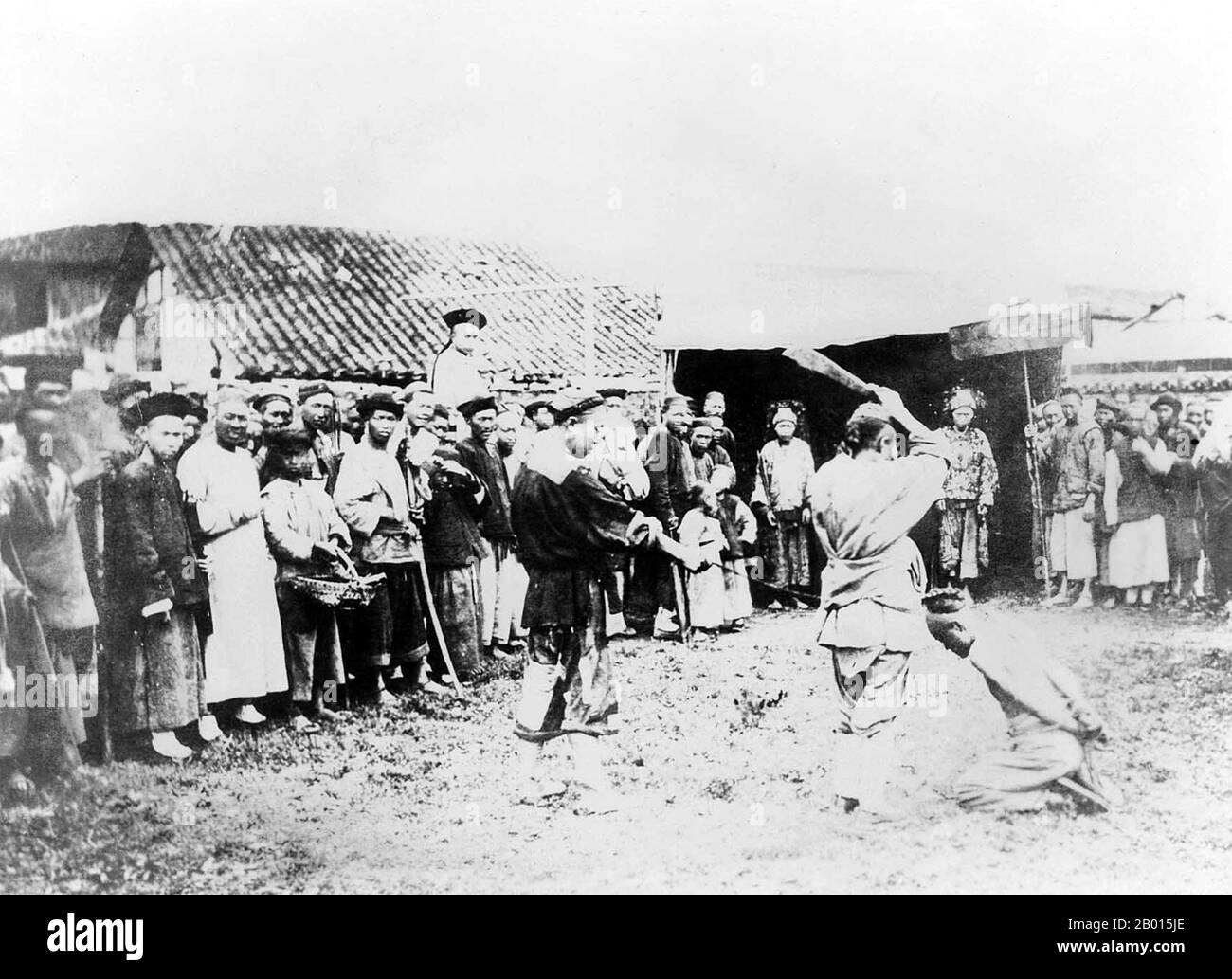 China: Shanghai - Public execution of a convict in the Chinese Walled City (Nanshi). Photo by William Saunders (1832-1892), c. 1865-1870. The former Nanshi district, literally 'southern city', was the historic heart of Shanghai. It included the old, walled city as well as the nearby docklands on both sides of the Huangpu River. Shanghai County was established at the beginning of the Ming Dynasty. A city wall was built to repel the Wokou, and this Ming Dynasty wall defined the extent of urban Shanghai for the next few centuries. Stock Photohttps://www.alamy.com/image-license-details/?v=1https://www.alamy.com/china-shanghai-public-execution-of-a-convict-in-the-chinese-walled-city-nanshi-photo-by-william-saunders-1832-1892-c-1865-1870-the-former-nanshi-district-literally-southern-city-was-the-historic-heart-of-shanghai-it-included-the-old-walled-city-as-well-as-the-nearby-docklands-on-both-sides-of-the-huangpu-river-shanghai-county-was-established-at-the-beginning-of-the-ming-dynasty-a-city-wall-was-built-to-repel-the-wokou-and-this-ming-dynasty-wall-defined-the-extent-of-urban-shanghai-for-the-next-few-centuries-image344233750.html
China: Shanghai - Public execution of a convict in the Chinese Walled City (Nanshi). Photo by William Saunders (1832-1892), c. 1865-1870. The former Nanshi district, literally 'southern city', was the historic heart of Shanghai. It included the old, walled city as well as the nearby docklands on both sides of the Huangpu River. Shanghai County was established at the beginning of the Ming Dynasty. A city wall was built to repel the Wokou, and this Ming Dynasty wall defined the extent of urban Shanghai for the next few centuries. Stock Photohttps://www.alamy.com/image-license-details/?v=1https://www.alamy.com/china-shanghai-public-execution-of-a-convict-in-the-chinese-walled-city-nanshi-photo-by-william-saunders-1832-1892-c-1865-1870-the-former-nanshi-district-literally-southern-city-was-the-historic-heart-of-shanghai-it-included-the-old-walled-city-as-well-as-the-nearby-docklands-on-both-sides-of-the-huangpu-river-shanghai-county-was-established-at-the-beginning-of-the-ming-dynasty-a-city-wall-was-built-to-repel-the-wokou-and-this-ming-dynasty-wall-defined-the-extent-of-urban-shanghai-for-the-next-few-centuries-image344233750.htmlRM2B015JE–China: Shanghai - Public execution of a convict in the Chinese Walled City (Nanshi). Photo by William Saunders (1832-1892), c. 1865-1870. The former Nanshi district, literally 'southern city', was the historic heart of Shanghai. It included the old, walled city as well as the nearby docklands on both sides of the Huangpu River. Shanghai County was established at the beginning of the Ming Dynasty. A city wall was built to repel the Wokou, and this Ming Dynasty wall defined the extent of urban Shanghai for the next few centuries.
 Sword Pommel. Culture: China. Dimensions: H. 1 1/2 in. (3.8 cm); W. 7/16 in. (1.1 cm). Museum: Metropolitan Museum of Art, New York, USA. Stock Photohttps://www.alamy.com/image-license-details/?v=1https://www.alamy.com/sword-pommel-culture-china-dimensions-h-1-12-in-38-cm-w-716-in-11-cm-museum-metropolitan-museum-of-art-new-york-usa-image213260964.html
Sword Pommel. Culture: China. Dimensions: H. 1 1/2 in. (3.8 cm); W. 7/16 in. (1.1 cm). Museum: Metropolitan Museum of Art, New York, USA. Stock Photohttps://www.alamy.com/image-license-details/?v=1https://www.alamy.com/sword-pommel-culture-china-dimensions-h-1-12-in-38-cm-w-716-in-11-cm-museum-metropolitan-museum-of-art-new-york-usa-image213260964.htmlRMPAXTF0–Sword Pommel. Culture: China. Dimensions: H. 1 1/2 in. (3.8 cm); W. 7/16 in. (1.1 cm). Museum: Metropolitan Museum of Art, New York, USA.
 One of Feng Yuxiang's soldiers in Beijing, 1925 Stock Photohttps://www.alamy.com/image-license-details/?v=1https://www.alamy.com/stock-photo-one-of-feng-yuxiangs-soldiers-in-beijing-1925-134930779.html
One of Feng Yuxiang's soldiers in Beijing, 1925 Stock Photohttps://www.alamy.com/image-license-details/?v=1https://www.alamy.com/stock-photo-one-of-feng-yuxiangs-soldiers-in-beijing-1925-134930779.htmlRMHREHGB–One of Feng Yuxiang's soldiers in Beijing, 1925
RF2X20JB6–Martial arts: butterfly double swords icon
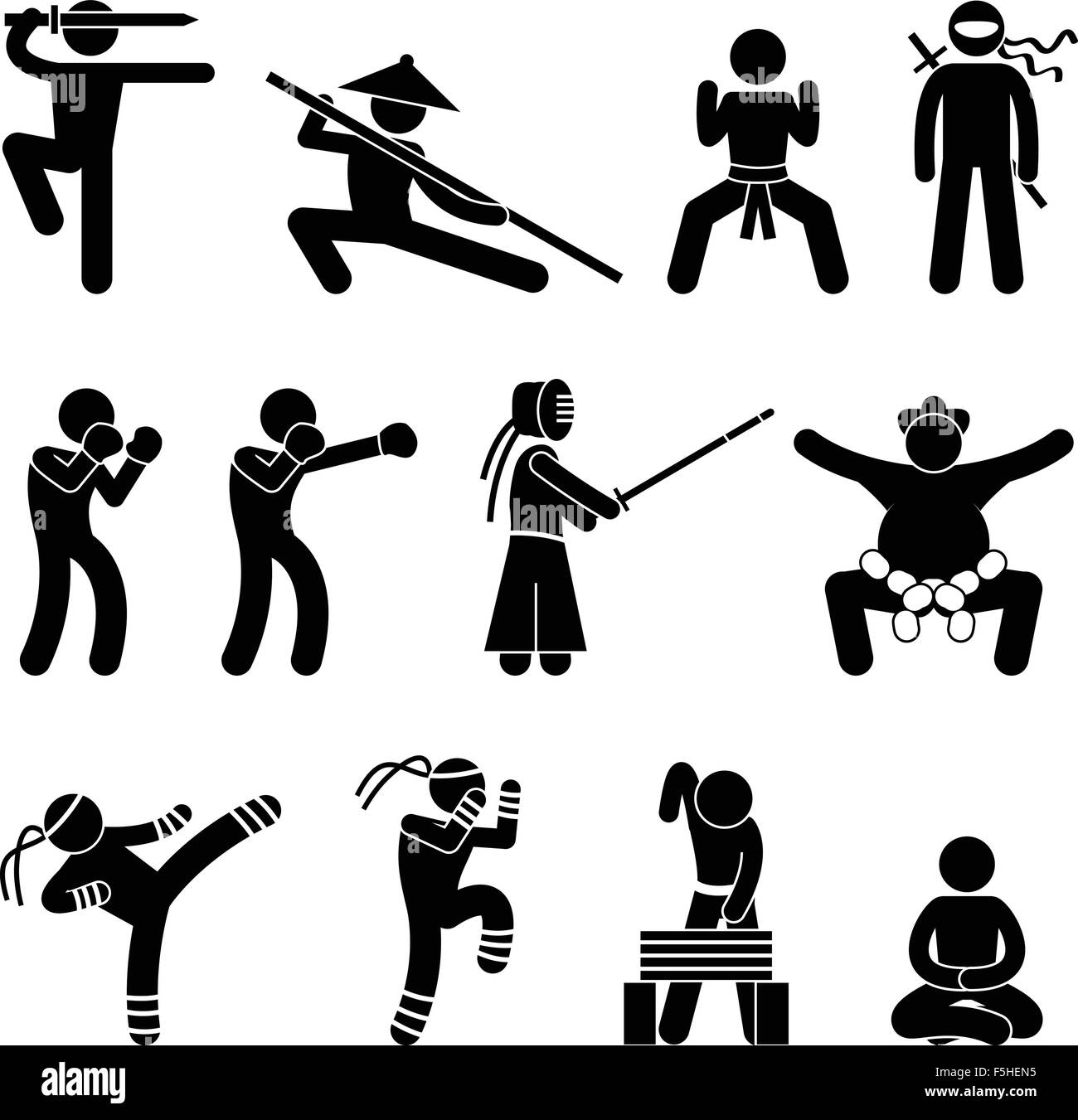 Kung Fu Martial Arts Self Defense Chinese Wushu Ninja Boxer Kendo Sumo Muay Thai Icon Symbol Sign Pictogram Stock Vectorhttps://www.alamy.com/image-license-details/?v=1https://www.alamy.com/stock-photo-kung-fu-martial-arts-self-defense-chinese-wushu-ninja-boxer-kendo-89509873.html
Kung Fu Martial Arts Self Defense Chinese Wushu Ninja Boxer Kendo Sumo Muay Thai Icon Symbol Sign Pictogram Stock Vectorhttps://www.alamy.com/image-license-details/?v=1https://www.alamy.com/stock-photo-kung-fu-martial-arts-self-defense-chinese-wushu-ninja-boxer-kendo-89509873.htmlRFF5HEN5–Kung Fu Martial Arts Self Defense Chinese Wushu Ninja Boxer Kendo Sumo Muay Thai Icon Symbol Sign Pictogram
 Feng Yuxiang's soldiers in Peking, 1928 Stock Photohttps://www.alamy.com/image-license-details/?v=1https://www.alamy.com/stock-photo-feng-yuxiangs-soldiers-in-peking-1928-134930781.html
Feng Yuxiang's soldiers in Peking, 1928 Stock Photohttps://www.alamy.com/image-license-details/?v=1https://www.alamy.com/stock-photo-feng-yuxiangs-soldiers-in-peking-1928-134930781.htmlRMHREHGD–Feng Yuxiang's soldiers in Peking, 1928
 Latest Pictures From Eastern War Front -- The Chinese are more at home wielding the broadsword than they are throwing bombs. Here is a member of the broad sword cops with his favourite weapon on the advance near Shanghai. October 11, 1937. (Photo by Keystone). Stock Photohttps://www.alamy.com/image-license-details/?v=1https://www.alamy.com/latest-pictures-from-eastern-war-front-the-chinese-are-more-at-home-wielding-the-broadsword-than-they-are-throwing-bombs-here-is-a-member-of-the-broad-sword-cops-with-his-favourite-weapon-on-the-advance-near-shanghai-october-11-1937-photo-by-keystone-image463553485.html
Latest Pictures From Eastern War Front -- The Chinese are more at home wielding the broadsword than they are throwing bombs. Here is a member of the broad sword cops with his favourite weapon on the advance near Shanghai. October 11, 1937. (Photo by Keystone). Stock Photohttps://www.alamy.com/image-license-details/?v=1https://www.alamy.com/latest-pictures-from-eastern-war-front-the-chinese-are-more-at-home-wielding-the-broadsword-than-they-are-throwing-bombs-here-is-a-member-of-the-broad-sword-cops-with-his-favourite-weapon-on-the-advance-near-shanghai-october-11-1937-photo-by-keystone-image463553485.htmlRM2HX4K5H–Latest Pictures From Eastern War Front -- The Chinese are more at home wielding the broadsword than they are throwing bombs. Here is a member of the broad sword cops with his favourite weapon on the advance near Shanghai. October 11, 1937. (Photo by Keystone).
 Zhang Zuolin's bodyguard, 1928 Stock Photohttps://www.alamy.com/image-license-details/?v=1https://www.alamy.com/stock-photo-zhang-zuolins-bodyguard-1928-134930783.html
Zhang Zuolin's bodyguard, 1928 Stock Photohttps://www.alamy.com/image-license-details/?v=1https://www.alamy.com/stock-photo-zhang-zuolins-bodyguard-1928-134930783.htmlRMHREHGF–Zhang Zuolin's bodyguard, 1928
 Chinese sailors (LOC) Stock Photohttps://www.alamy.com/image-license-details/?v=1https://www.alamy.com/stock-photo-chinese-sailors-loc-55177995.html
Chinese sailors (LOC) Stock Photohttps://www.alamy.com/image-license-details/?v=1https://www.alamy.com/stock-photo-chinese-sailors-loc-55177995.htmlRMD5NG2K–Chinese sailors (LOC)
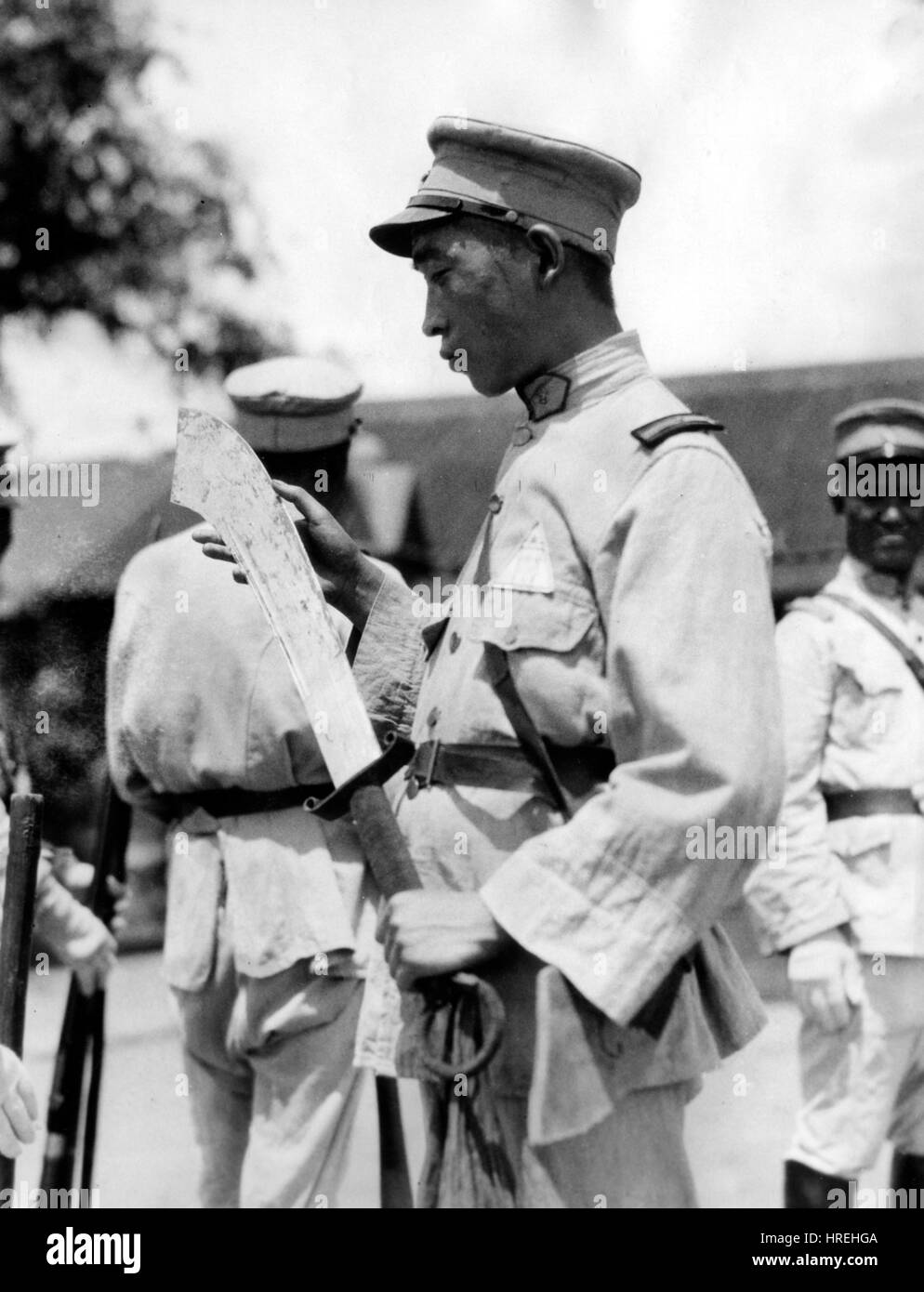 One of the warlord Zhang Zuolin's soldier in China, 1927 Stock Photohttps://www.alamy.com/image-license-details/?v=1https://www.alamy.com/stock-photo-one-of-the-warlord-zhang-zuolins-soldier-in-china-1927-134930778.html
One of the warlord Zhang Zuolin's soldier in China, 1927 Stock Photohttps://www.alamy.com/image-license-details/?v=1https://www.alamy.com/stock-photo-one-of-the-warlord-zhang-zuolins-soldier-in-china-1927-134930778.htmlRMHREHGA–One of the warlord Zhang Zuolin's soldier in China, 1927
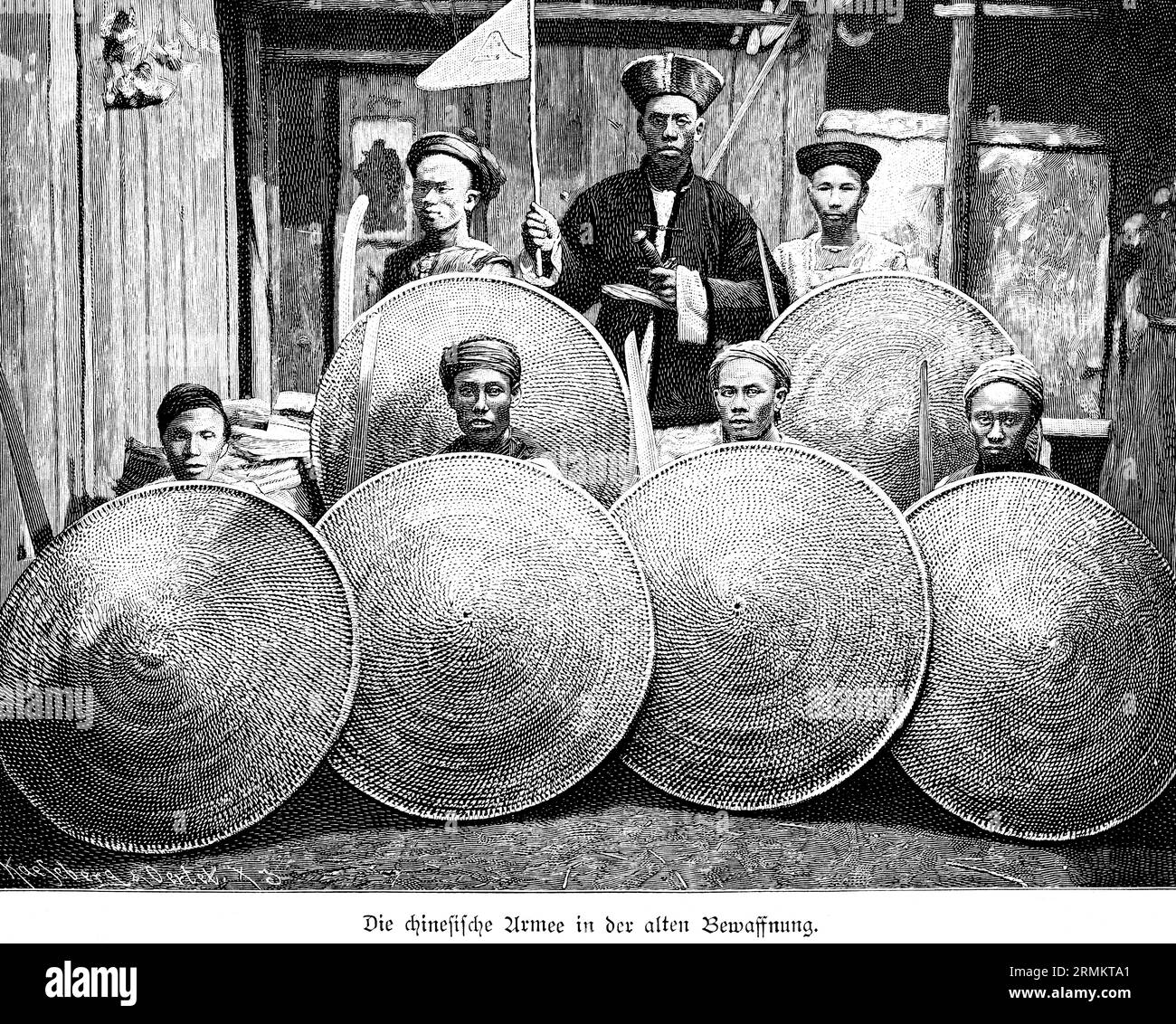 Chinese army with old armament, China, soldiers, swords, shields, flag, wooden house, woodcut, historical illustration c. 1898 Stock Photohttps://www.alamy.com/image-license-details/?v=1https://www.alamy.com/chinese-army-with-old-armament-china-soldiers-swords-shields-flag-wooden-house-woodcut-historical-illustration-c-1898-image563461081.html
Chinese army with old armament, China, soldiers, swords, shields, flag, wooden house, woodcut, historical illustration c. 1898 Stock Photohttps://www.alamy.com/image-license-details/?v=1https://www.alamy.com/chinese-army-with-old-armament-china-soldiers-swords-shields-flag-wooden-house-woodcut-historical-illustration-c-1898-image563461081.htmlRM2RMKTA1–Chinese army with old armament, China, soldiers, swords, shields, flag, wooden house, woodcut, historical illustration c. 1898
 Guard at the palace of Zhang Zuolin, 1928 Stock Photohttps://www.alamy.com/image-license-details/?v=1https://www.alamy.com/stock-photo-guard-at-the-palace-of-zhang-zuolin-1928-134930786.html
Guard at the palace of Zhang Zuolin, 1928 Stock Photohttps://www.alamy.com/image-license-details/?v=1https://www.alamy.com/stock-photo-guard-at-the-palace-of-zhang-zuolin-1928-134930786.htmlRMHREHGJ–Guard at the palace of Zhang Zuolin, 1928
 Sketch of Character Ninja, Isolated on White Background, Hand-drawn style Stock Vectorhttps://www.alamy.com/image-license-details/?v=1https://www.alamy.com/stock-photo-sketch-of-character-ninja-isolated-on-white-background-hand-drawn-87334093.html
Sketch of Character Ninja, Isolated on White Background, Hand-drawn style Stock Vectorhttps://www.alamy.com/image-license-details/?v=1https://www.alamy.com/stock-photo-sketch-of-character-ninja-isolated-on-white-background-hand-drawn-87334093.htmlRFF22BEN–Sketch of Character Ninja, Isolated on White Background, Hand-drawn style
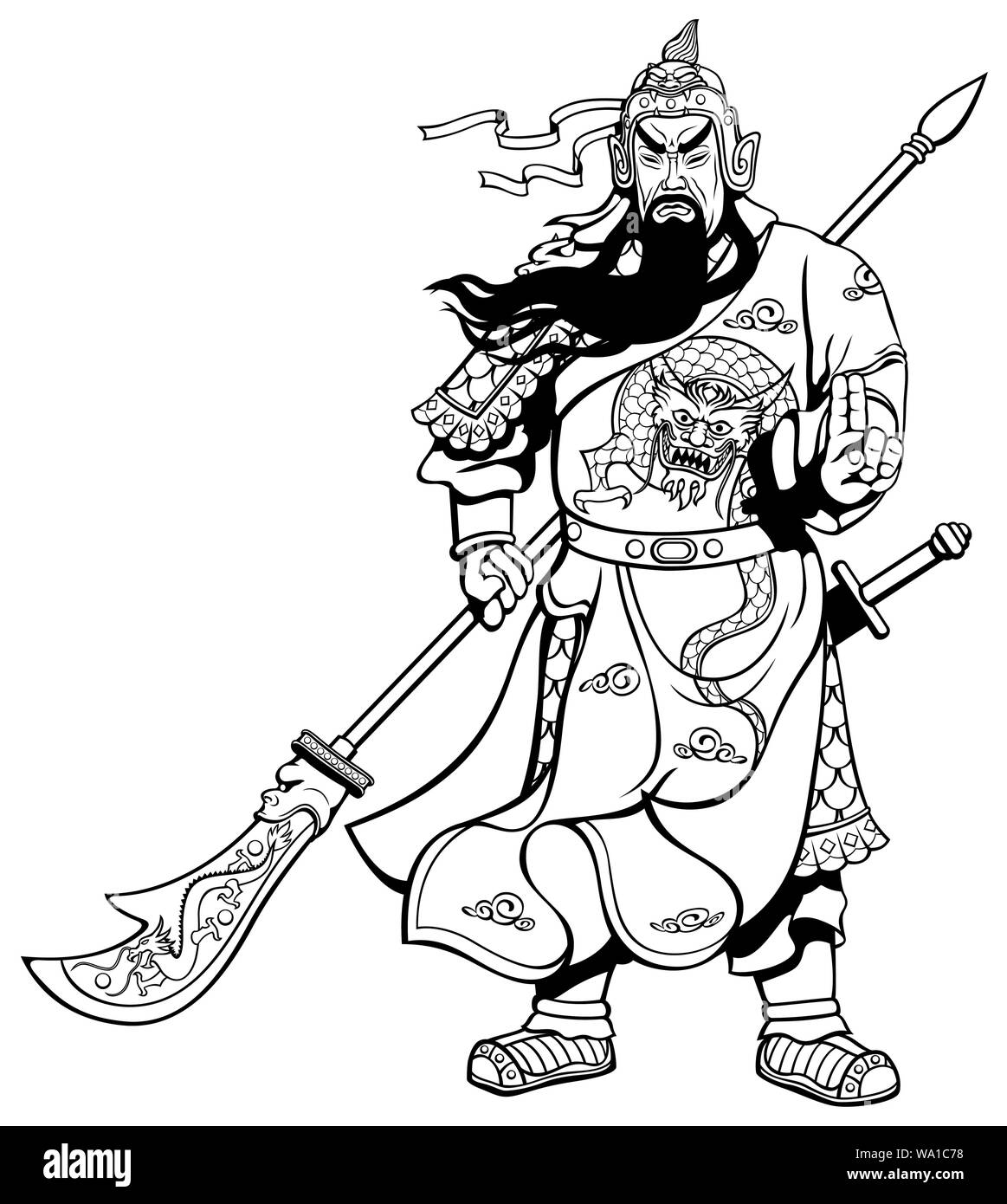 Chinese Warrior 2 Line Art Stock Vectorhttps://www.alamy.com/image-license-details/?v=1https://www.alamy.com/chinese-warrior-2-line-art-image264333644.html
Chinese Warrior 2 Line Art Stock Vectorhttps://www.alamy.com/image-license-details/?v=1https://www.alamy.com/chinese-warrior-2-line-art-image264333644.htmlRFWA1C78–Chinese Warrior 2 Line Art
 Feng Yunxiang's soldiers, who was a Chinese Christian warlord. Stock Photohttps://www.alamy.com/image-license-details/?v=1https://www.alamy.com/feng-yunxiangs-soldiers-who-was-a-chinese-christian-warlord-image247140488.html
Feng Yunxiang's soldiers, who was a Chinese Christian warlord. Stock Photohttps://www.alamy.com/image-license-details/?v=1https://www.alamy.com/feng-yunxiangs-soldiers-who-was-a-chinese-christian-warlord-image247140488.htmlRMTA2660–Feng Yunxiang's soldiers, who was a Chinese Christian warlord.
RF2JMK4ME–samurai fighter ninja kung fu logo template vector icon
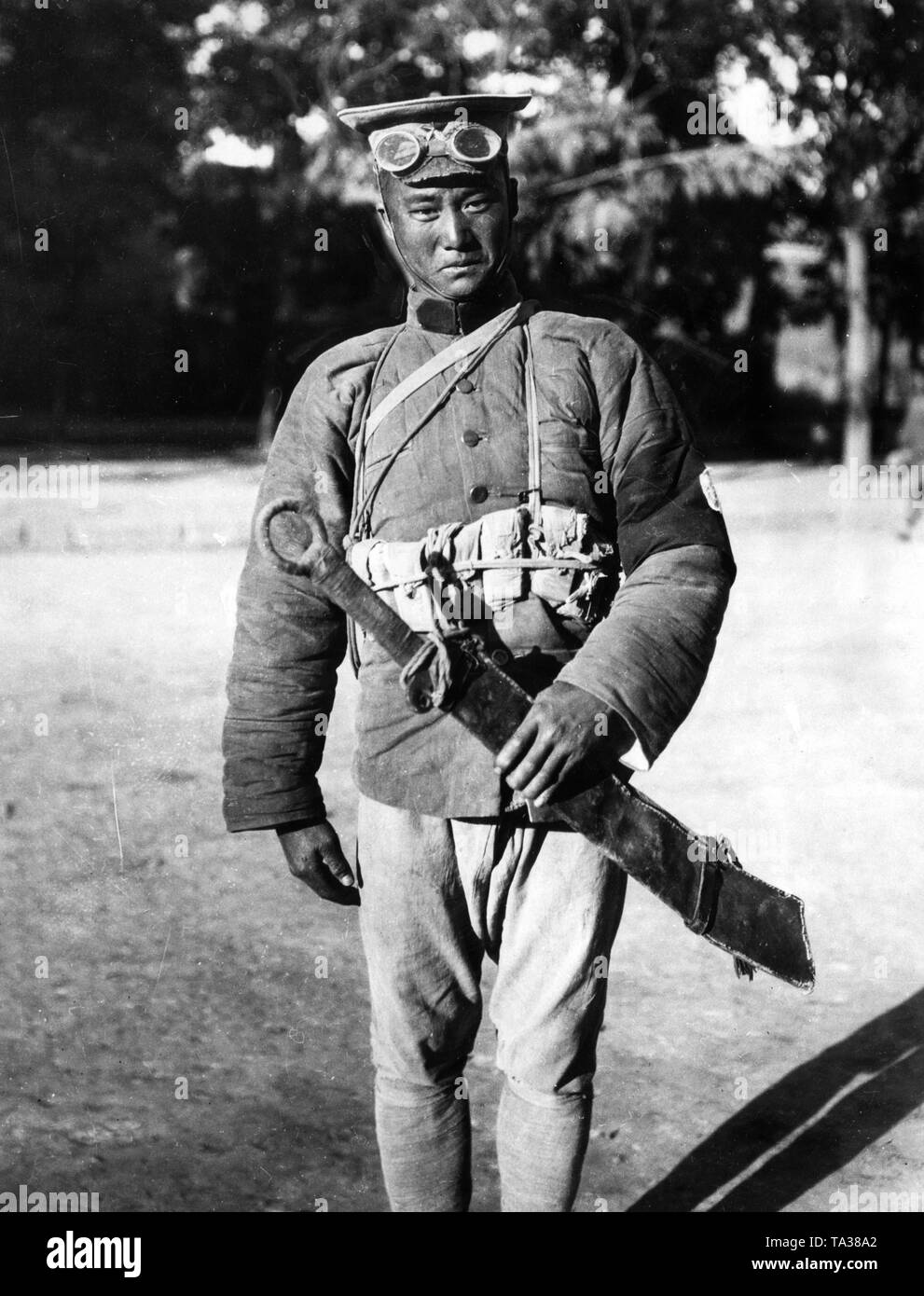 One of Feng Yuxiang's soldiers, a Chinese Christian warlord, in Peking. Stock Photohttps://www.alamy.com/image-license-details/?v=1https://www.alamy.com/one-of-feng-yuxiangs-soldiers-a-chinese-christian-warlord-in-peking-image247164122.html
One of Feng Yuxiang's soldiers, a Chinese Christian warlord, in Peking. Stock Photohttps://www.alamy.com/image-license-details/?v=1https://www.alamy.com/one-of-feng-yuxiangs-soldiers-a-chinese-christian-warlord-in-peking-image247164122.htmlRMTA38A2–One of Feng Yuxiang's soldiers, a Chinese Christian warlord, in Peking.
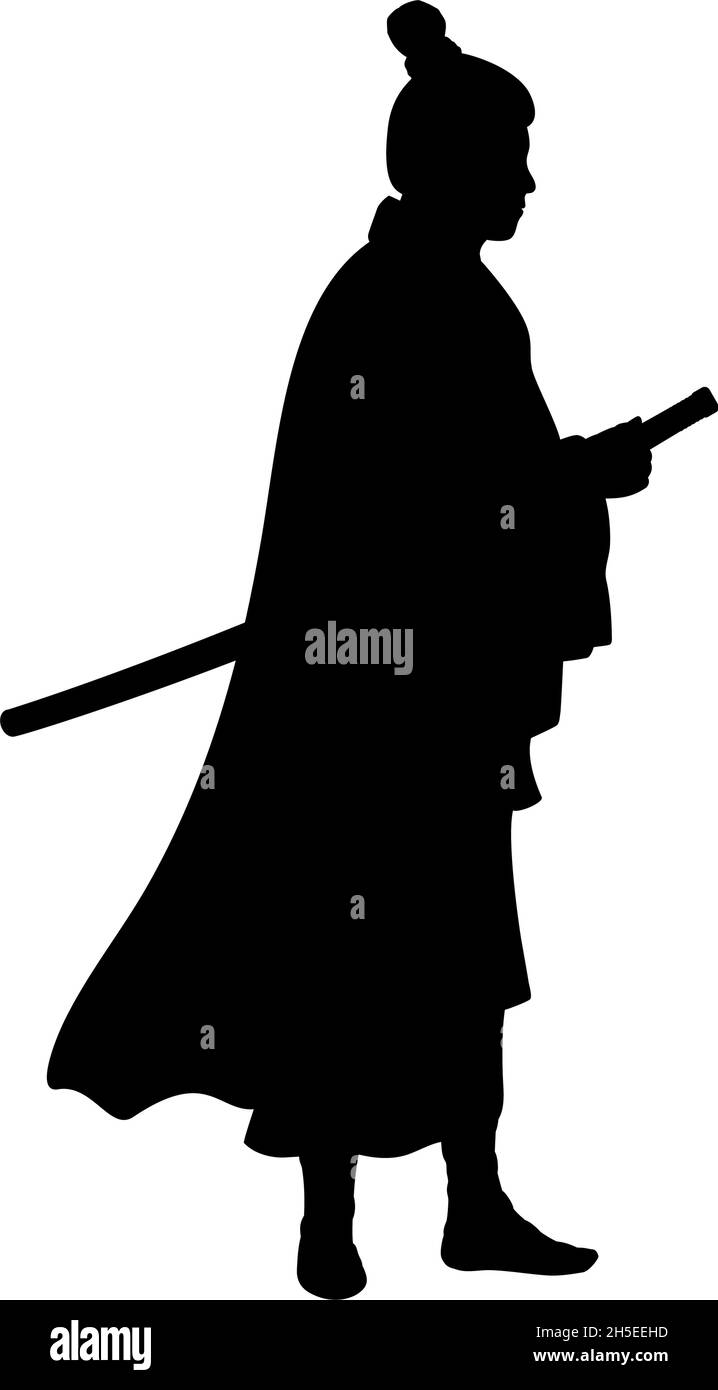 Silhouette Samurai warrior with katana sword. Stock Vectorhttps://www.alamy.com/image-license-details/?v=1https://www.alamy.com/silhouette-samurai-warrior-with-katana-sword-image450861641.html
Silhouette Samurai warrior with katana sword. Stock Vectorhttps://www.alamy.com/image-license-details/?v=1https://www.alamy.com/silhouette-samurai-warrior-with-katana-sword-image450861641.htmlRF2H5EEHD–Silhouette Samurai warrior with katana sword.
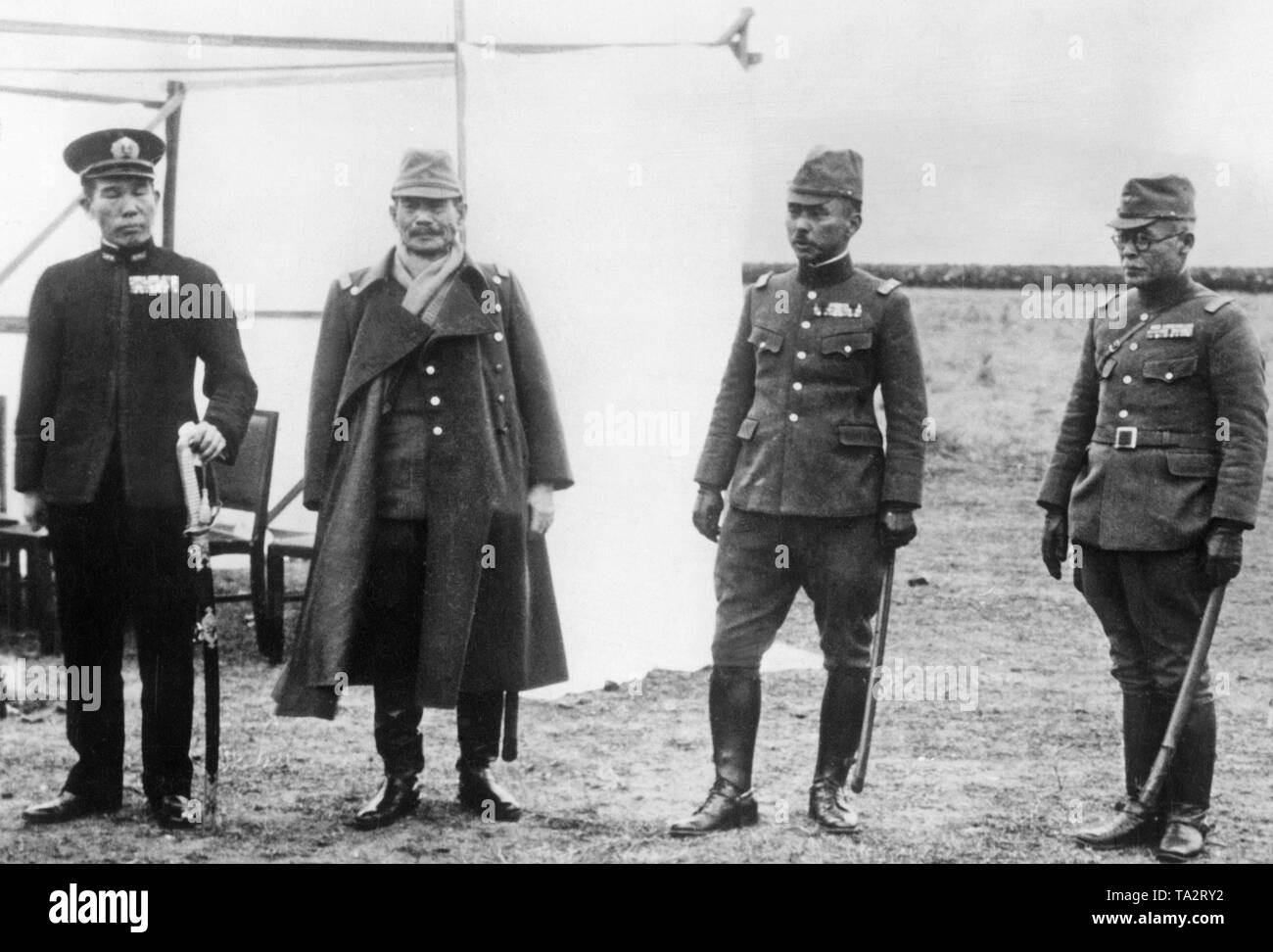 The Supreme Command of the Japanese troops stationed in China during the Second Japanese-Chinese War on January 13, 1938. From left: Commander of the Japanese fleet stationing in China, Vice Admiral Kijoshi Hasegawa, commander of the Japanese Expeditionary Army General Iwane Matsui, Lieutenant General Prince Yasuhiko Asaka and Lieutenant-General Heisuke Yanagva. Stock Photohttps://www.alamy.com/image-license-details/?v=1https://www.alamy.com/the-supreme-command-of-the-japanese-troops-stationed-in-china-during-the-second-japanese-chinese-war-on-january-13-1938-from-left-commander-of-the-japanese-fleet-stationing-in-china-vice-admiral-kijoshi-hasegawa-commander-of-the-japanese-expeditionary-army-general-iwane-matsui-lieutenant-general-prince-yasuhiko-asaka-and-lieutenant-general-heisuke-yanagva-image247154406.html
The Supreme Command of the Japanese troops stationed in China during the Second Japanese-Chinese War on January 13, 1938. From left: Commander of the Japanese fleet stationing in China, Vice Admiral Kijoshi Hasegawa, commander of the Japanese Expeditionary Army General Iwane Matsui, Lieutenant General Prince Yasuhiko Asaka and Lieutenant-General Heisuke Yanagva. Stock Photohttps://www.alamy.com/image-license-details/?v=1https://www.alamy.com/the-supreme-command-of-the-japanese-troops-stationed-in-china-during-the-second-japanese-chinese-war-on-january-13-1938-from-left-commander-of-the-japanese-fleet-stationing-in-china-vice-admiral-kijoshi-hasegawa-commander-of-the-japanese-expeditionary-army-general-iwane-matsui-lieutenant-general-prince-yasuhiko-asaka-and-lieutenant-general-heisuke-yanagva-image247154406.htmlRMTA2RY2–The Supreme Command of the Japanese troops stationed in China during the Second Japanese-Chinese War on January 13, 1938. From left: Commander of the Japanese fleet stationing in China, Vice Admiral Kijoshi Hasegawa, commander of the Japanese Expeditionary Army General Iwane Matsui, Lieutenant General Prince Yasuhiko Asaka and Lieutenant-General Heisuke Yanagva.
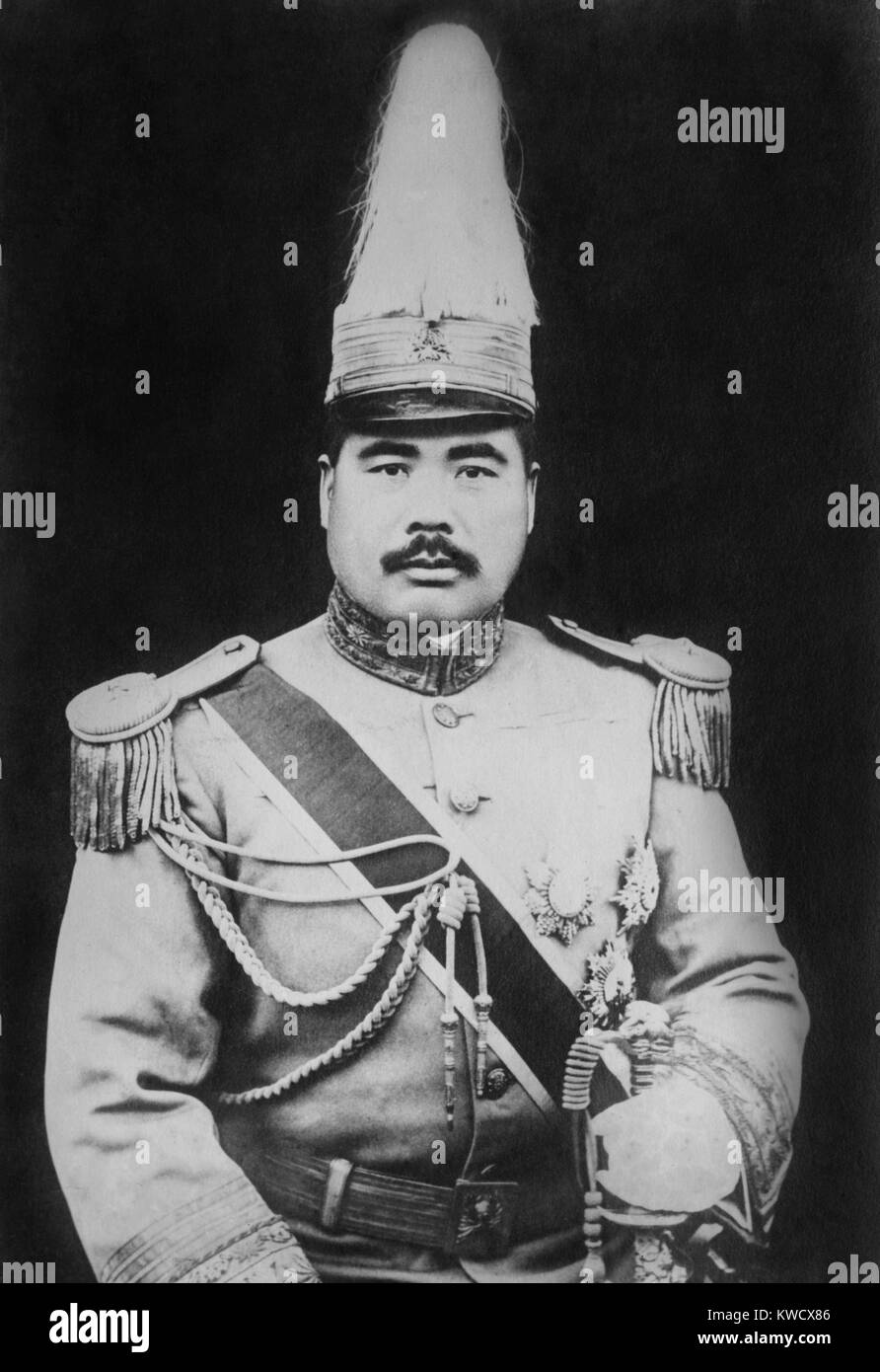 Feng Yuxiang, Chinese general against the Qing Dynasty in the Xinhai Revolution, 1911. As the most powerful Chinese warlord, he was an ally of Chiang from 1926-1930, but after World War II, he supported the Communist Revolution (BSLOC 2017 2 73) Stock Photohttps://www.alamy.com/image-license-details/?v=1https://www.alamy.com/stock-photo-feng-yuxiang-chinese-general-against-the-qing-dynasty-in-the-xinhai-170543750.html
Feng Yuxiang, Chinese general against the Qing Dynasty in the Xinhai Revolution, 1911. As the most powerful Chinese warlord, he was an ally of Chiang from 1926-1930, but after World War II, he supported the Communist Revolution (BSLOC 2017 2 73) Stock Photohttps://www.alamy.com/image-license-details/?v=1https://www.alamy.com/stock-photo-feng-yuxiang-chinese-general-against-the-qing-dynasty-in-the-xinhai-170543750.htmlRMKWCX86–Feng Yuxiang, Chinese general against the Qing Dynasty in the Xinhai Revolution, 1911. As the most powerful Chinese warlord, he was an ally of Chiang from 1926-1930, but after World War II, he supported the Communist Revolution (BSLOC 2017 2 73)
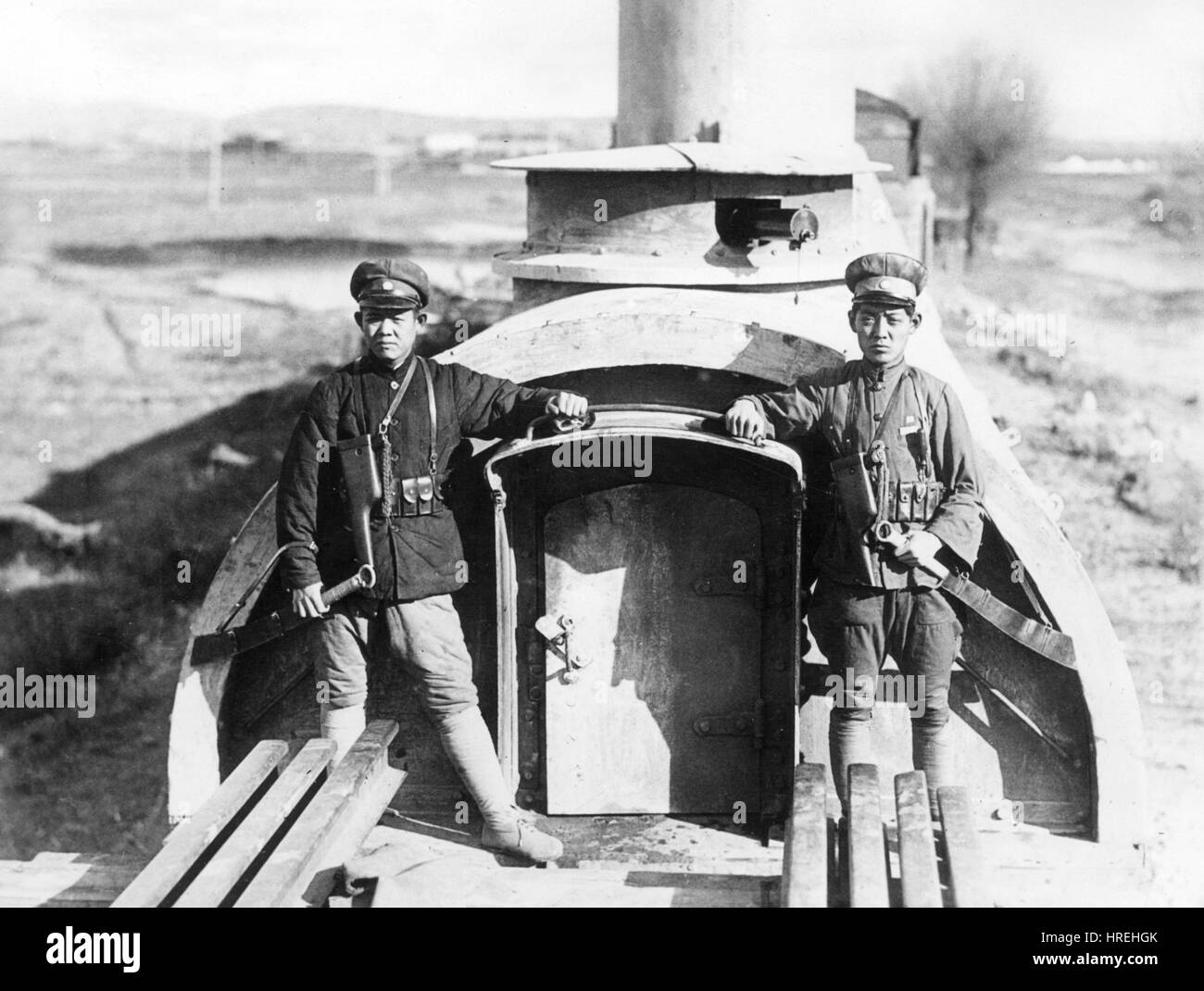 Chinese soldiers in Manchuria, 1931 Stock Photohttps://www.alamy.com/image-license-details/?v=1https://www.alamy.com/stock-photo-chinese-soldiers-in-manchuria-1931-134930787.html
Chinese soldiers in Manchuria, 1931 Stock Photohttps://www.alamy.com/image-license-details/?v=1https://www.alamy.com/stock-photo-chinese-soldiers-in-manchuria-1931-134930787.htmlRMHREHGK–Chinese soldiers in Manchuria, 1931
 Sword pommel. Culture: China. Dimensions: H. 2 in. (5.1 cm); W. 3/4 in. (1.9 cm); D. 1/2 in. (1.3 cm). Museum: Metropolitan Museum of Art, New York, USA. Stock Photohttps://www.alamy.com/image-license-details/?v=1https://www.alamy.com/sword-pommel-culture-china-dimensions-h-2-in-51-cm-w-34-in-19-cm-d-12-in-13-cm-museum-metropolitan-museum-of-art-new-york-usa-image213303524.html
Sword pommel. Culture: China. Dimensions: H. 2 in. (5.1 cm); W. 3/4 in. (1.9 cm); D. 1/2 in. (1.3 cm). Museum: Metropolitan Museum of Art, New York, USA. Stock Photohttps://www.alamy.com/image-license-details/?v=1https://www.alamy.com/sword-pommel-culture-china-dimensions-h-2-in-51-cm-w-34-in-19-cm-d-12-in-13-cm-museum-metropolitan-museum-of-art-new-york-usa-image213303524.htmlRMPB0PR0–Sword pommel. Culture: China. Dimensions: H. 2 in. (5.1 cm); W. 3/4 in. (1.9 cm); D. 1/2 in. (1.3 cm). Museum: Metropolitan Museum of Art, New York, USA.
 Silhouette Japanese sword katana on the stand. Stock Vectorhttps://www.alamy.com/image-license-details/?v=1https://www.alamy.com/silhouette-japanese-sword-katana-on-the-stand-image450442055.html
Silhouette Japanese sword katana on the stand. Stock Vectorhttps://www.alamy.com/image-license-details/?v=1https://www.alamy.com/silhouette-japanese-sword-katana-on-the-stand-image450442055.htmlRF2H4RBC7–Silhouette Japanese sword katana on the stand.
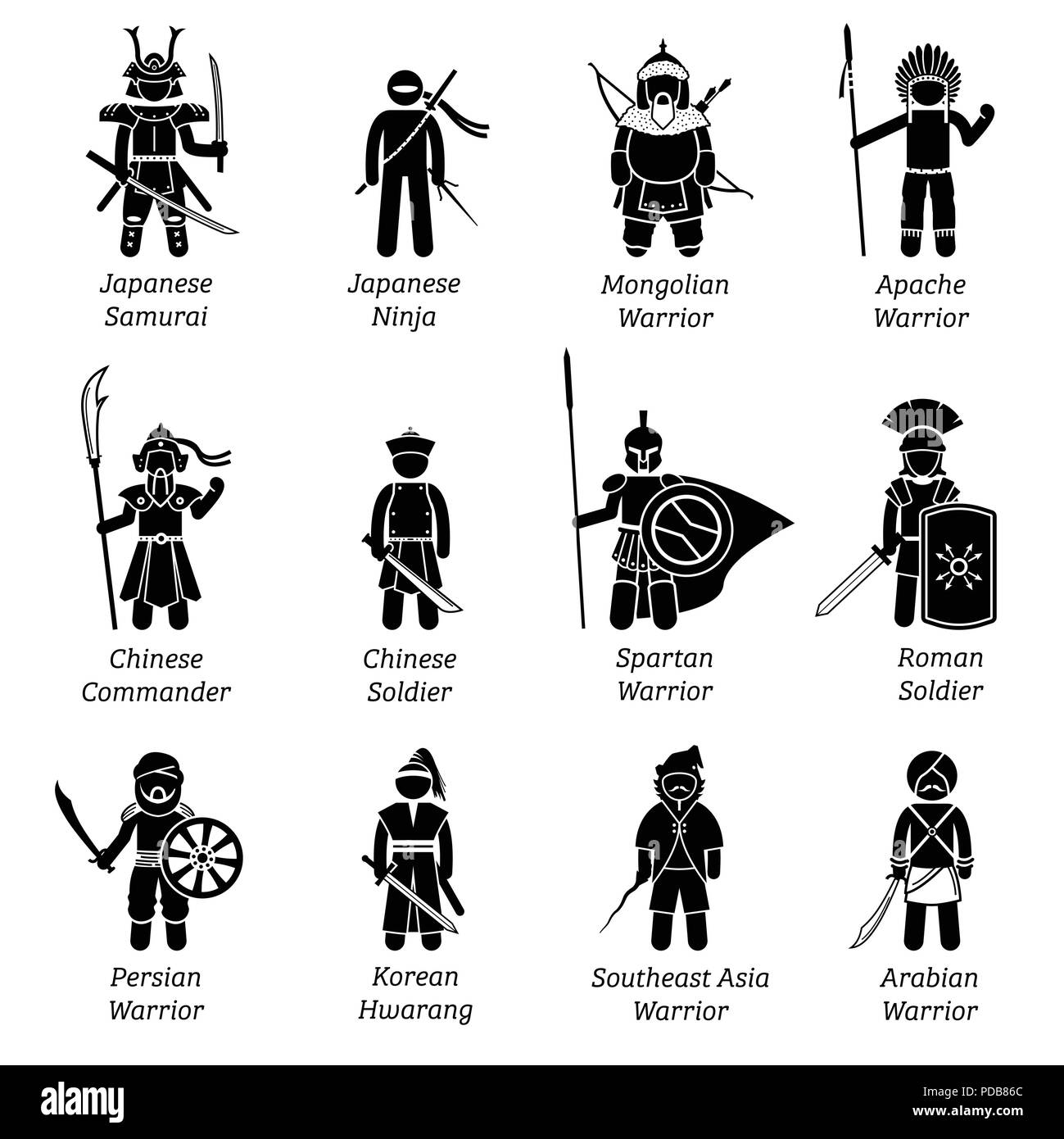 Ancient warriors around the world. Illustrations depict ancient soldiers, military, fighters, outfit, wear, weapon, and armors of different dynasty. Stock Vectorhttps://www.alamy.com/image-license-details/?v=1https://www.alamy.com/ancient-warriors-around-the-world-illustrations-depict-ancient-soldiers-military-fighters-outfit-wear-weapon-and-armors-of-different-dynasty-image214762868.html
Ancient warriors around the world. Illustrations depict ancient soldiers, military, fighters, outfit, wear, weapon, and armors of different dynasty. Stock Vectorhttps://www.alamy.com/image-license-details/?v=1https://www.alamy.com/ancient-warriors-around-the-world-illustrations-depict-ancient-soldiers-military-fighters-outfit-wear-weapon-and-armors-of-different-dynasty-image214762868.htmlRFPDB86C–Ancient warriors around the world. Illustrations depict ancient soldiers, military, fighters, outfit, wear, weapon, and armors of different dynasty.
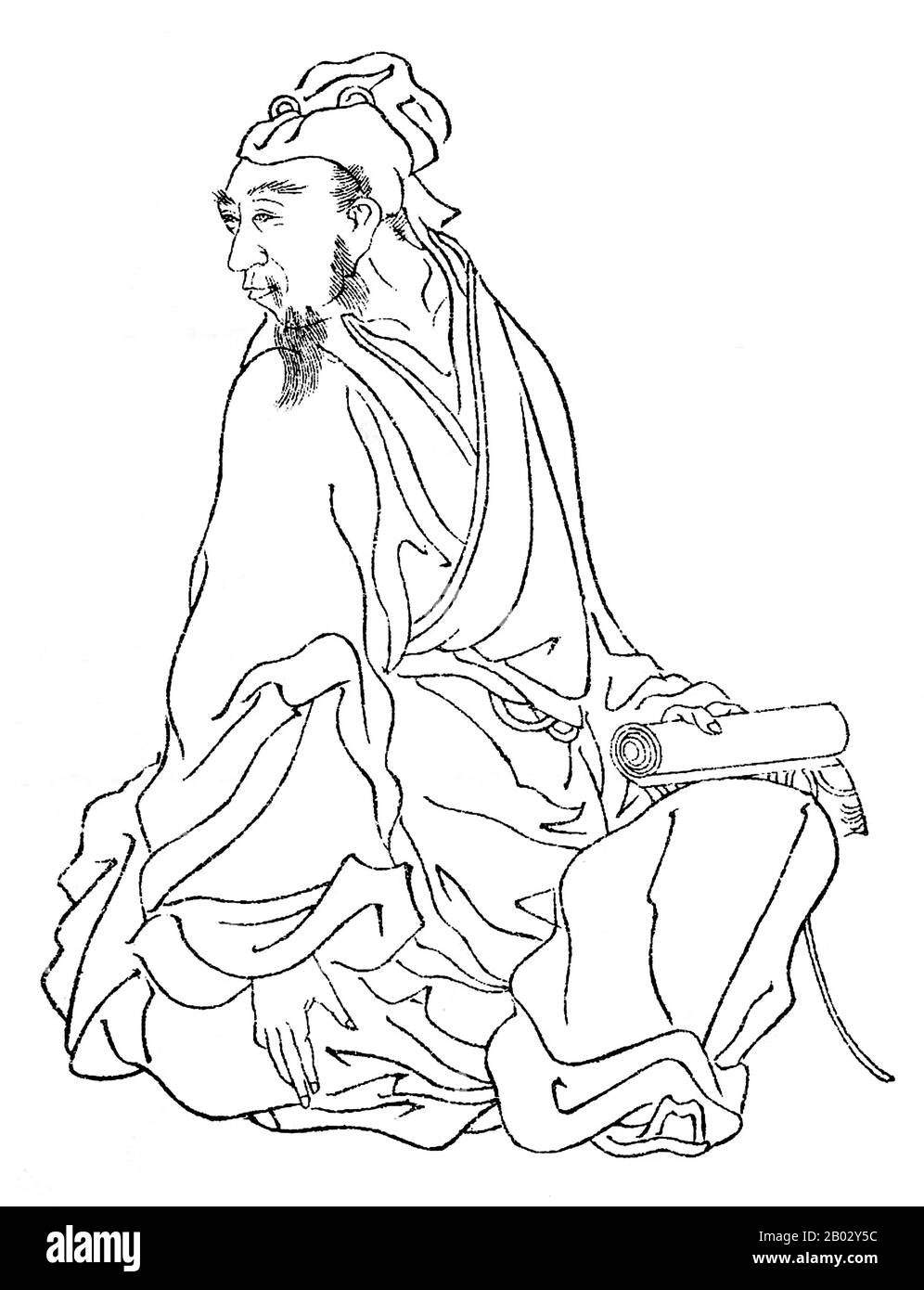 In 750, Kiyokawa was appointed envoy to Tang China, with Otomo no Komaro and Kibi no Makibi as vice-envoys. Before his departure, the Emperor gave him a symbolic sword as a sign of his command. Upon arriving in Tang China, the envoy entered Chang'an and had an audience with Emperor Xuanzong. Because of the exigencies of the time, he remained in China until his death in 778. Stock Photohttps://www.alamy.com/image-license-details/?v=1https://www.alamy.com/in-750-kiyokawa-was-appointed-envoy-to-tang-china-with-otomo-no-komaro-and-kibi-no-makibi-as-vice-envoys-before-his-departure-the-emperor-gave-him-a-symbolic-sword-as-a-sign-of-his-command-upon-arriving-in-tang-china-the-envoy-entered-changan-and-had-an-audience-with-emperor-xuanzong-because-of-the-exigencies-of-the-time-he-remained-in-china-until-his-death-in-778-image344272584.html
In 750, Kiyokawa was appointed envoy to Tang China, with Otomo no Komaro and Kibi no Makibi as vice-envoys. Before his departure, the Emperor gave him a symbolic sword as a sign of his command. Upon arriving in Tang China, the envoy entered Chang'an and had an audience with Emperor Xuanzong. Because of the exigencies of the time, he remained in China until his death in 778. Stock Photohttps://www.alamy.com/image-license-details/?v=1https://www.alamy.com/in-750-kiyokawa-was-appointed-envoy-to-tang-china-with-otomo-no-komaro-and-kibi-no-makibi-as-vice-envoys-before-his-departure-the-emperor-gave-him-a-symbolic-sword-as-a-sign-of-his-command-upon-arriving-in-tang-china-the-envoy-entered-changan-and-had-an-audience-with-emperor-xuanzong-because-of-the-exigencies-of-the-time-he-remained-in-china-until-his-death-in-778-image344272584.htmlRM2B02Y5C–In 750, Kiyokawa was appointed envoy to Tang China, with Otomo no Komaro and Kibi no Makibi as vice-envoys. Before his departure, the Emperor gave him a symbolic sword as a sign of his command. Upon arriving in Tang China, the envoy entered Chang'an and had an audience with Emperor Xuanzong. Because of the exigencies of the time, he remained in China until his death in 778.
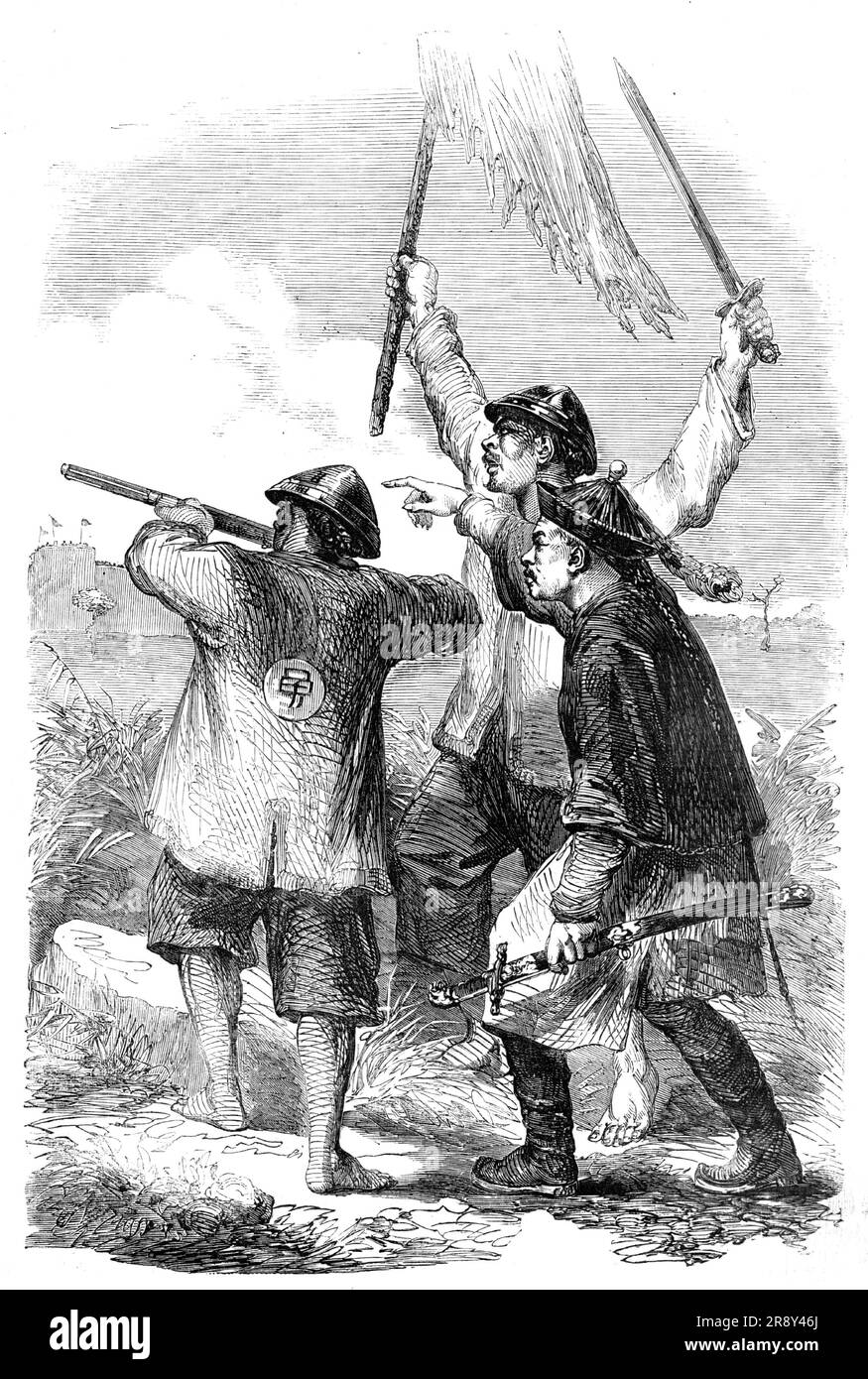 The War in China - Chinese Mandarin and Soldiers, 1857. Second Opium War. From "Illustrated London News", 1857. Stock Photohttps://www.alamy.com/image-license-details/?v=1https://www.alamy.com/the-war-in-china-chinese-mandarin-and-soldiers-1857-second-opium-war-from-quotillustrated-london-newsquot-1857-image556245050.html
The War in China - Chinese Mandarin and Soldiers, 1857. Second Opium War. From "Illustrated London News", 1857. Stock Photohttps://www.alamy.com/image-license-details/?v=1https://www.alamy.com/the-war-in-china-chinese-mandarin-and-soldiers-1857-second-opium-war-from-quotillustrated-london-newsquot-1857-image556245050.htmlRM2R8Y46J–The War in China - Chinese Mandarin and Soldiers, 1857. Second Opium War. From "Illustrated London News", 1857.
 Single continuous line drawing of young woman wushu fighter, kung fu master in uniform training with sword at dojo center. Fighting contest concept. T Stock Vectorhttps://www.alamy.com/image-license-details/?v=1https://www.alamy.com/single-continuous-line-drawing-of-young-woman-wushu-fighter-kung-fu-master-in-uniform-training-with-sword-at-dojo-center-fighting-contest-concept-t-image605316950.html
Single continuous line drawing of young woman wushu fighter, kung fu master in uniform training with sword at dojo center. Fighting contest concept. T Stock Vectorhttps://www.alamy.com/image-license-details/?v=1https://www.alamy.com/single-continuous-line-drawing-of-young-woman-wushu-fighter-kung-fu-master-in-uniform-training-with-sword-at-dojo-center-fighting-contest-concept-t-image605316950.htmlRF2X4PFXE–Single continuous line drawing of young woman wushu fighter, kung fu master in uniform training with sword at dojo center. Fighting contest concept. T
 Set of Ninja Star Silhouette Stock Vectorhttps://www.alamy.com/image-license-details/?v=1https://www.alamy.com/set-of-ninja-star-silhouette-image557116756.html
Set of Ninja Star Silhouette Stock Vectorhttps://www.alamy.com/image-license-details/?v=1https://www.alamy.com/set-of-ninja-star-silhouette-image557116756.htmlRF2RAAT30–Set of Ninja Star Silhouette
RF2D9948D–katana icon element of weapon icon for mobile concept and web apps. Thin line katana icon can be used for web and mobile. Premium icon on white
RF2X598F8–Hand fan icon vector illustration symbol design
 Two traditional samurai swords logo and blooming leaf, japanese vector design Stock Vectorhttps://www.alamy.com/image-license-details/?v=1https://www.alamy.com/two-traditional-samurai-swords-logo-and-blooming-leaf-japanese-vector-design-image465601516.html
Two traditional samurai swords logo and blooming leaf, japanese vector design Stock Vectorhttps://www.alamy.com/image-license-details/?v=1https://www.alamy.com/two-traditional-samurai-swords-logo-and-blooming-leaf-japanese-vector-design-image465601516.htmlRF2J1DYDG–Two traditional samurai swords logo and blooming leaf, japanese vector design
 Ninja bamboo . Stock Vectorhttps://www.alamy.com/image-license-details/?v=1https://www.alamy.com/ninja-bamboo-image475415894.html
Ninja bamboo . Stock Vectorhttps://www.alamy.com/image-license-details/?v=1https://www.alamy.com/ninja-bamboo-image475415894.htmlRF2JHD1R2–Ninja bamboo .
 19th-century illustration of Chinese warriors. Engraving published in Systematischer Bilder-Atlas zum Conversations-Lexikon, Ikonographische Encyklopa Stock Photohttps://www.alamy.com/image-license-details/?v=1https://www.alamy.com/19th-century-illustration-of-chinese-warriors-engraving-published-in-systematischer-bilder-atlas-zum-conversations-lexikon-ikonographische-encyklopa-image414788996.html
19th-century illustration of Chinese warriors. Engraving published in Systematischer Bilder-Atlas zum Conversations-Lexikon, Ikonographische Encyklopa Stock Photohttps://www.alamy.com/image-license-details/?v=1https://www.alamy.com/19th-century-illustration-of-chinese-warriors-engraving-published-in-systematischer-bilder-atlas-zum-conversations-lexikon-ikonographische-encyklopa-image414788996.htmlRF2F2R7GM–19th-century illustration of Chinese warriors. Engraving published in Systematischer Bilder-Atlas zum Conversations-Lexikon, Ikonographische Encyklopa
 Feng Shui Sword Stock Photohttps://www.alamy.com/image-license-details/?v=1https://www.alamy.com/feng-shui-sword-image227692555.html
Feng Shui Sword Stock Photohttps://www.alamy.com/image-license-details/?v=1https://www.alamy.com/feng-shui-sword-image227692555.htmlRFR6C84Y–Feng Shui Sword
RF2JMK4MD–samurai fighter ninja kung fu logo template vector icon
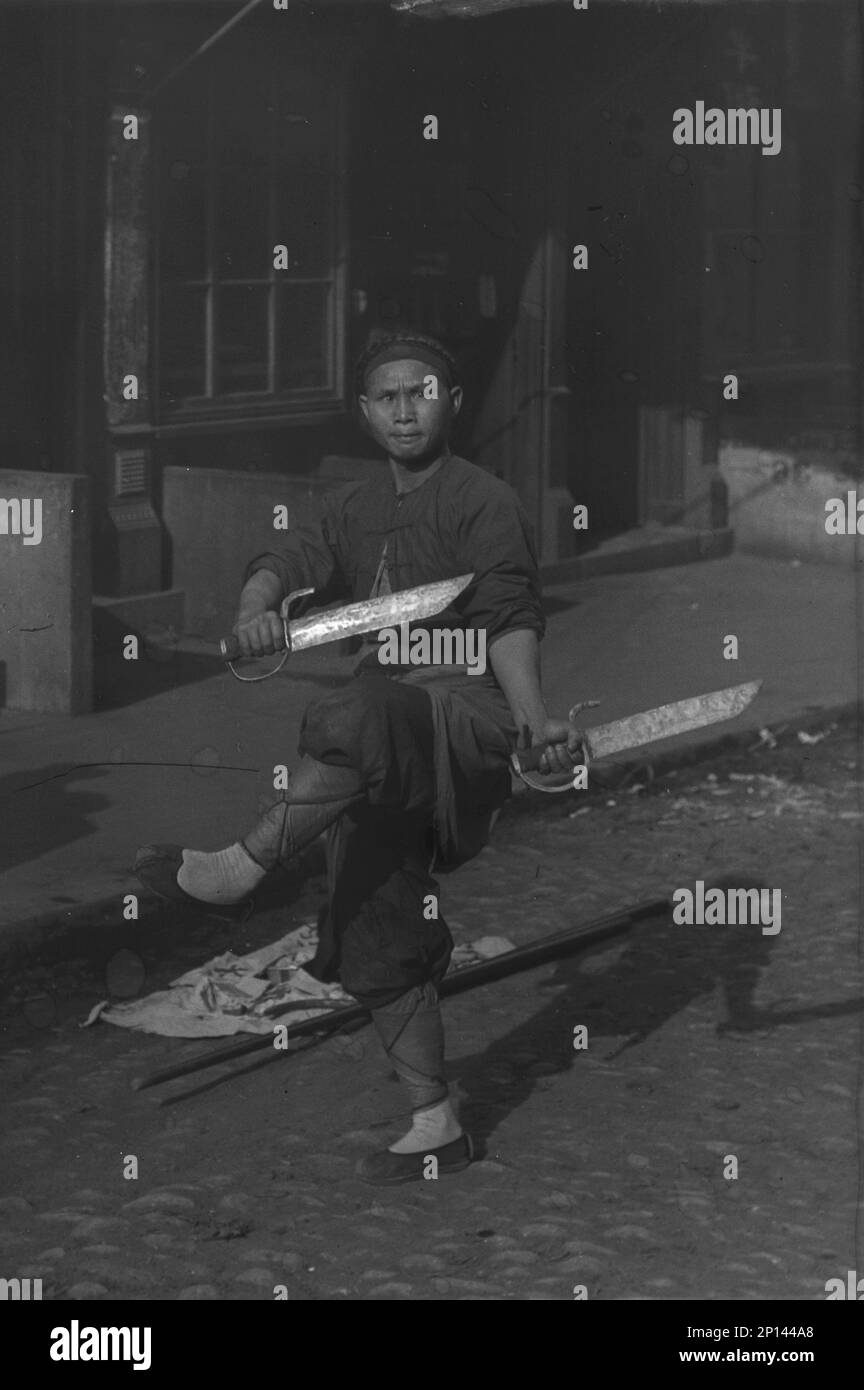 The sword dancer, Chinatown, San Francisco, between 1896 and 1906. Stock Photohttps://www.alamy.com/image-license-details/?v=1https://www.alamy.com/the-sword-dancer-chinatown-san-francisco-between-1896-and-1906-image534227296.html
The sword dancer, Chinatown, San Francisco, between 1896 and 1906. Stock Photohttps://www.alamy.com/image-license-details/?v=1https://www.alamy.com/the-sword-dancer-chinatown-san-francisco-between-1896-and-1906-image534227296.htmlRM2P144A8–The sword dancer, Chinatown, San Francisco, between 1896 and 1906.
 Warrior with sword and traditional armor Stock Photohttps://www.alamy.com/image-license-details/?v=1https://www.alamy.com/warrior-with-sword-and-traditional-armor-image239321065.html
Warrior with sword and traditional armor Stock Photohttps://www.alamy.com/image-license-details/?v=1https://www.alamy.com/warrior-with-sword-and-traditional-armor-image239321065.htmlRFRWA0CW–Warrior with sword and traditional armor
 Chinese swords isolated on white background Stock Vectorhttps://www.alamy.com/image-license-details/?v=1https://www.alamy.com/chinese-swords-isolated-on-white-background-image555609664.html
Chinese swords isolated on white background Stock Vectorhttps://www.alamy.com/image-license-details/?v=1https://www.alamy.com/chinese-swords-isolated-on-white-background-image555609664.htmlRF2R7X5P8–Chinese swords isolated on white background
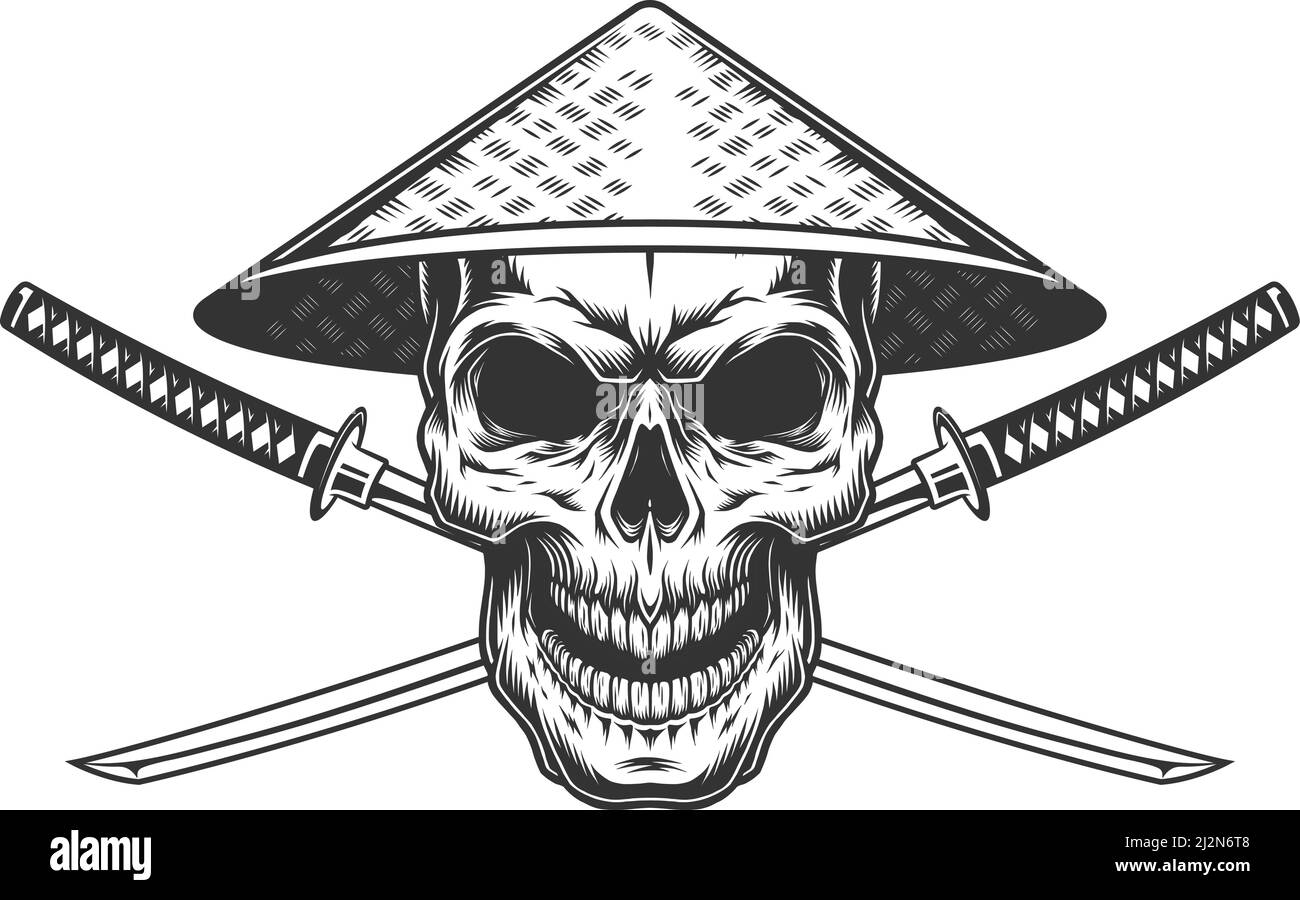 Vintage skull in chinese conical straw with crossed sabers isolated vector illustration Stock Vectorhttps://www.alamy.com/image-license-details/?v=1https://www.alamy.com/vintage-skull-in-chinese-conical-straw-with-crossed-sabers-isolated-vector-illustration-image466375624.html
Vintage skull in chinese conical straw with crossed sabers isolated vector illustration Stock Vectorhttps://www.alamy.com/image-license-details/?v=1https://www.alamy.com/vintage-skull-in-chinese-conical-straw-with-crossed-sabers-isolated-vector-illustration-image466375624.htmlRF2J2N6T8–Vintage skull in chinese conical straw with crossed sabers isolated vector illustration
 black belt karate instructor with sword in finished position with head bowed Stock Photohttps://www.alamy.com/image-license-details/?v=1https://www.alamy.com/stock-photo-black-belt-karate-instructor-with-sword-in-finished-position-with-11291777.html
black belt karate instructor with sword in finished position with head bowed Stock Photohttps://www.alamy.com/image-license-details/?v=1https://www.alamy.com/stock-photo-black-belt-karate-instructor-with-sword-in-finished-position-with-11291777.htmlRMA5EW4J–black belt karate instructor with sword in finished position with head bowed
 Feng Yuxiang, Chinese general against the Qing Dynasty in the Xinhai Revolution, 1911. As the most powerful Chinese warlord, he was an ally of Chiang from 1926-1930, but after World War II, he supported the Communist Revolution (BSLOC 2017 2 73) Stock Photohttps://www.alamy.com/image-license-details/?v=1https://www.alamy.com/stock-photo-feng-yuxiang-chinese-general-against-the-qing-dynasty-in-the-xinhai-170544917.html
Feng Yuxiang, Chinese general against the Qing Dynasty in the Xinhai Revolution, 1911. As the most powerful Chinese warlord, he was an ally of Chiang from 1926-1930, but after World War II, he supported the Communist Revolution (BSLOC 2017 2 73) Stock Photohttps://www.alamy.com/image-license-details/?v=1https://www.alamy.com/stock-photo-feng-yuxiang-chinese-general-against-the-qing-dynasty-in-the-xinhai-170544917.htmlRMKWCYNW–Feng Yuxiang, Chinese general against the Qing Dynasty in the Xinhai Revolution, 1911. As the most powerful Chinese warlord, he was an ally of Chiang from 1926-1930, but after World War II, he supported the Communist Revolution (BSLOC 2017 2 73)
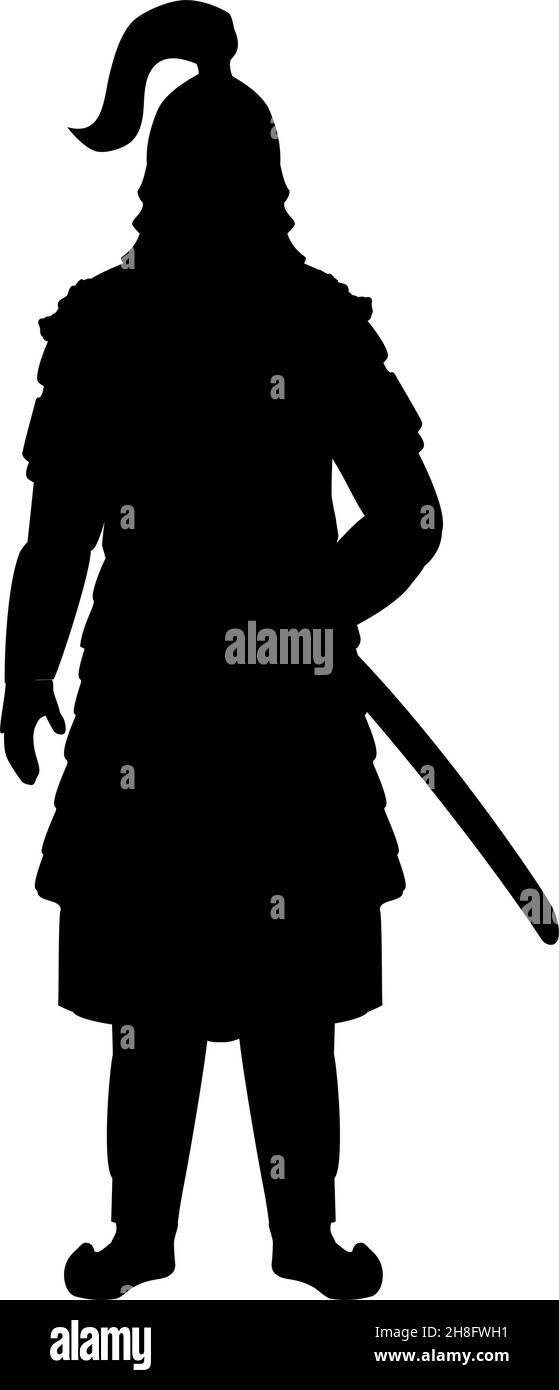 Silhouette of traditional ancient oriental warrior. Stock Vectorhttps://www.alamy.com/image-license-details/?v=1https://www.alamy.com/silhouette-of-traditional-ancient-oriental-warrior-image452736173.html
Silhouette of traditional ancient oriental warrior. Stock Vectorhttps://www.alamy.com/image-license-details/?v=1https://www.alamy.com/silhouette-of-traditional-ancient-oriental-warrior-image452736173.htmlRF2H8FWH1–Silhouette of traditional ancient oriental warrior.
RF2GAAE3J–Sport games alphabet W vector icons pictogram. Women lacrosse, woodball, wrestling, wingsuit flying, whitewater slalom, windsurfing, wood chopping, an
 Mahito took part in the planning of the Taiho Code alongside Prince Osakabe and Fujiwara no Fuhito, and in 701 was promoted to head of the Ministry of Popular Affairs. Mahito was also appointed as chief diplomat on a mission to Tang China, receiving a ceremonial sword from Emperor Tenmu as a symbol of his command. In 704, the mission returned to Japan, along with some Japanese who had been captives since the Battle of Baekgang in 663. Mahito was rewarded with land in Yamato Province. Stock Photohttps://www.alamy.com/image-license-details/?v=1https://www.alamy.com/mahito-took-part-in-the-planning-of-the-taiho-code-alongside-prince-osakabe-and-fujiwara-no-fuhito-and-in-701-was-promoted-to-head-of-the-ministry-of-popular-affairs-mahito-was-also-appointed-as-chief-diplomat-on-a-mission-to-tang-china-receiving-a-ceremonial-sword-from-emperor-tenmu-as-a-symbol-of-his-command-in-704-the-mission-returned-to-japan-along-with-some-japanese-who-had-been-captives-since-the-battle-of-baekgang-in-663-mahito-was-rewarded-with-land-in-yamato-province-image344272587.html
Mahito took part in the planning of the Taiho Code alongside Prince Osakabe and Fujiwara no Fuhito, and in 701 was promoted to head of the Ministry of Popular Affairs. Mahito was also appointed as chief diplomat on a mission to Tang China, receiving a ceremonial sword from Emperor Tenmu as a symbol of his command. In 704, the mission returned to Japan, along with some Japanese who had been captives since the Battle of Baekgang in 663. Mahito was rewarded with land in Yamato Province. Stock Photohttps://www.alamy.com/image-license-details/?v=1https://www.alamy.com/mahito-took-part-in-the-planning-of-the-taiho-code-alongside-prince-osakabe-and-fujiwara-no-fuhito-and-in-701-was-promoted-to-head-of-the-ministry-of-popular-affairs-mahito-was-also-appointed-as-chief-diplomat-on-a-mission-to-tang-china-receiving-a-ceremonial-sword-from-emperor-tenmu-as-a-symbol-of-his-command-in-704-the-mission-returned-to-japan-along-with-some-japanese-who-had-been-captives-since-the-battle-of-baekgang-in-663-mahito-was-rewarded-with-land-in-yamato-province-image344272587.htmlRM2B02Y5F–Mahito took part in the planning of the Taiho Code alongside Prince Osakabe and Fujiwara no Fuhito, and in 701 was promoted to head of the Ministry of Popular Affairs. Mahito was also appointed as chief diplomat on a mission to Tang China, receiving a ceremonial sword from Emperor Tenmu as a symbol of his command. In 704, the mission returned to Japan, along with some Japanese who had been captives since the Battle of Baekgang in 663. Mahito was rewarded with land in Yamato Province.
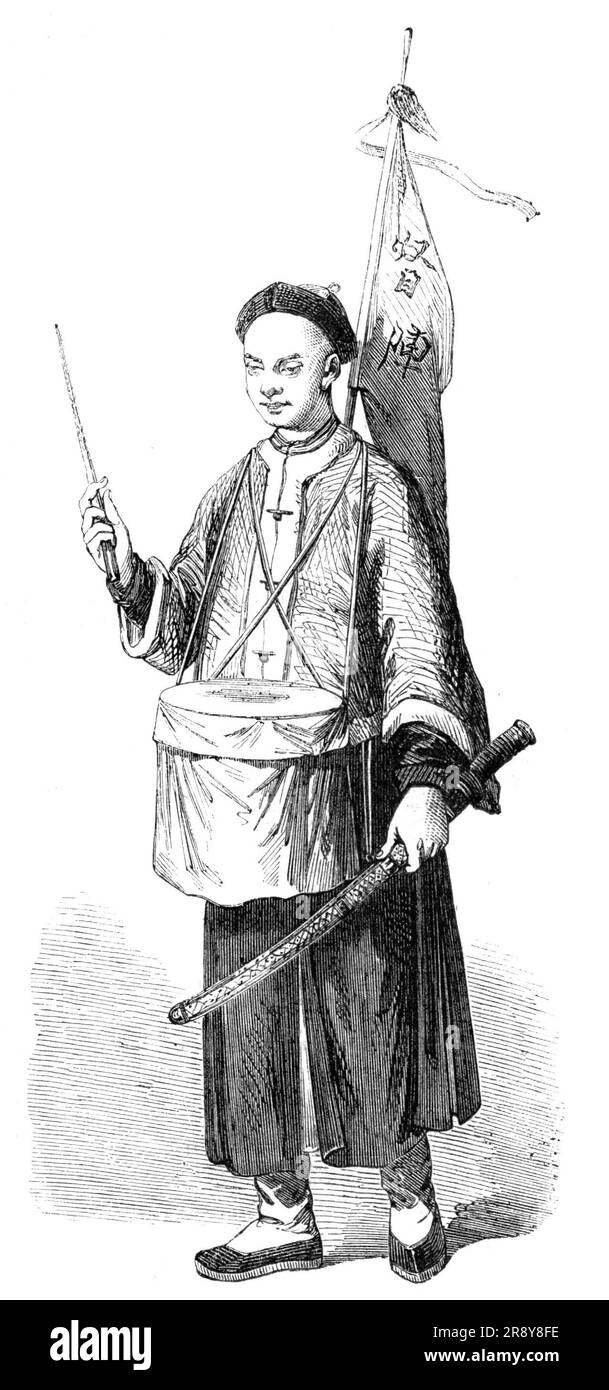 Chinese Military Standard-bearer - from a drawing by a Chinese artist, 1857. 'From a pole borne at his back hangs the standard; the ground bearing the characters is crimson'. From "Illustrated London News", 1857. Stock Photohttps://www.alamy.com/image-license-details/?v=1https://www.alamy.com/chinese-military-standard-bearer-from-a-drawing-by-a-chinese-artist-1857-from-a-pole-borne-at-his-back-hangs-the-standard-the-ground-bearing-the-characters-is-crimson-from-quotillustrated-london-newsquot-1857-image556248434.html
Chinese Military Standard-bearer - from a drawing by a Chinese artist, 1857. 'From a pole borne at his back hangs the standard; the ground bearing the characters is crimson'. From "Illustrated London News", 1857. Stock Photohttps://www.alamy.com/image-license-details/?v=1https://www.alamy.com/chinese-military-standard-bearer-from-a-drawing-by-a-chinese-artist-1857-from-a-pole-borne-at-his-back-hangs-the-standard-the-ground-bearing-the-characters-is-crimson-from-quotillustrated-london-newsquot-1857-image556248434.htmlRM2R8Y8FE–Chinese Military Standard-bearer - from a drawing by a Chinese artist, 1857. 'From a pole borne at his back hangs the standard; the ground bearing the characters is crimson'. From "Illustrated London News", 1857.
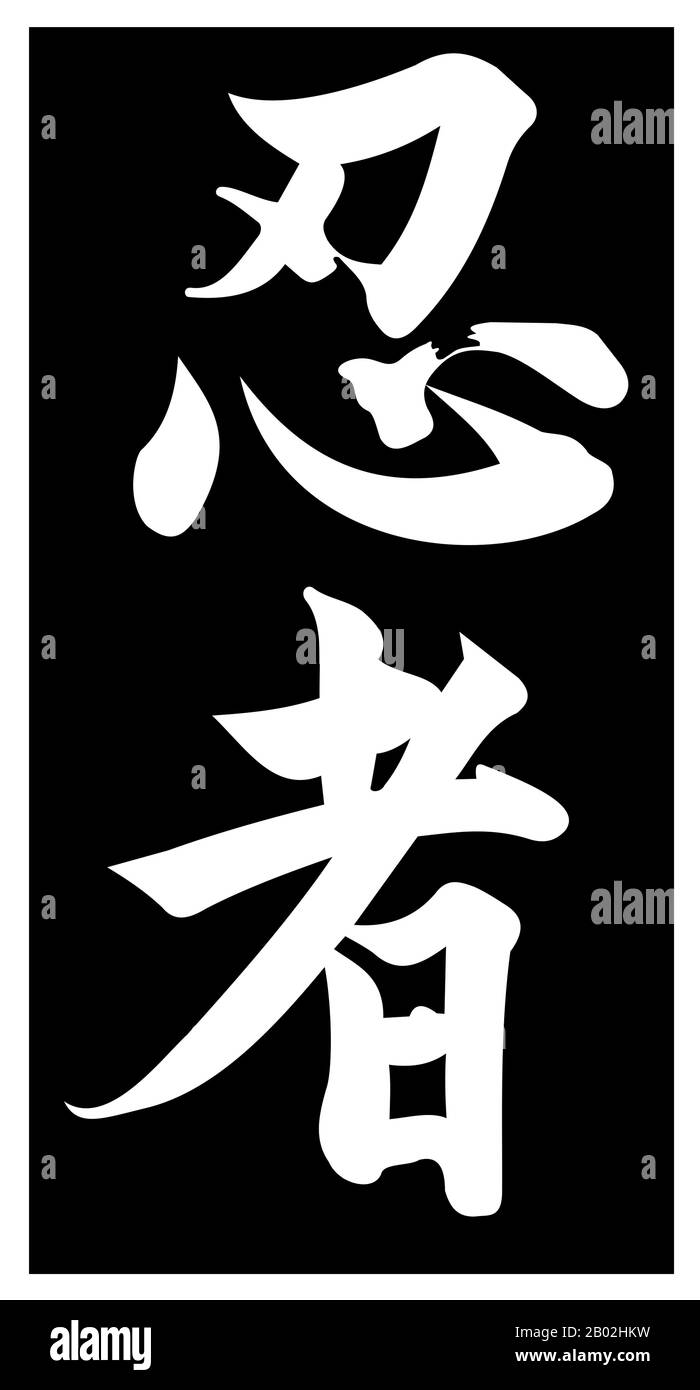 Ninja is an on'yomi (Early Middle Chinese-influenced) reading of the two kanji '忍者'. In the native kun'yomi kanji reading, it is pronounced shinobi, a shortened form of the transcription shinobi-no-mono (忍の者). These two systems of pronouncing kanji create words with similar meanings. The word shinobi appears in the written record as far back as the late 8th century in poems in the Man'yōshū. The underlying connotation of shinobi (忍) means 'to steal away', hence its association with stealth and invisibility. Mono (者) means 'a person'. It also relates to the term shinobu, which means to hide. Stock Photohttps://www.alamy.com/image-license-details/?v=1https://www.alamy.com/ninja-is-an-onyomi-early-middle-chinese-influenced-reading-of-the-two-kanji-in-the-native-kunyomi-kanji-reading-it-is-pronounced-shinobi-a-shortened-form-of-the-transcription-shinobi-no-mono-these-two-systems-of-pronouncing-kanji-create-words-with-similar-meanings-the-word-shinobi-appears-in-the-written-record-as-far-back-as-the-late-8th-century-in-poems-in-the-manysh-the-underlying-connotation-of-shinobi-means-to-steal-away-hence-its-association-with-stealth-and-invisibility-mono-means-a-person-it-also-relates-to-the-term-shinobu-which-means-to-hide-image344265149.html
Ninja is an on'yomi (Early Middle Chinese-influenced) reading of the two kanji '忍者'. In the native kun'yomi kanji reading, it is pronounced shinobi, a shortened form of the transcription shinobi-no-mono (忍の者). These two systems of pronouncing kanji create words with similar meanings. The word shinobi appears in the written record as far back as the late 8th century in poems in the Man'yōshū. The underlying connotation of shinobi (忍) means 'to steal away', hence its association with stealth and invisibility. Mono (者) means 'a person'. It also relates to the term shinobu, which means to hide. Stock Photohttps://www.alamy.com/image-license-details/?v=1https://www.alamy.com/ninja-is-an-onyomi-early-middle-chinese-influenced-reading-of-the-two-kanji-in-the-native-kunyomi-kanji-reading-it-is-pronounced-shinobi-a-shortened-form-of-the-transcription-shinobi-no-mono-these-two-systems-of-pronouncing-kanji-create-words-with-similar-meanings-the-word-shinobi-appears-in-the-written-record-as-far-back-as-the-late-8th-century-in-poems-in-the-manysh-the-underlying-connotation-of-shinobi-means-to-steal-away-hence-its-association-with-stealth-and-invisibility-mono-means-a-person-it-also-relates-to-the-term-shinobu-which-means-to-hide-image344265149.htmlRM2B02HKW–Ninja is an on'yomi (Early Middle Chinese-influenced) reading of the two kanji '忍者'. In the native kun'yomi kanji reading, it is pronounced shinobi, a shortened form of the transcription shinobi-no-mono (忍の者). These two systems of pronouncing kanji create words with similar meanings. The word shinobi appears in the written record as far back as the late 8th century in poems in the Man'yōshū. The underlying connotation of shinobi (忍) means 'to steal away', hence its association with stealth and invisibility. Mono (者) means 'a person'. It also relates to the term shinobu, which means to hide.
 M Tseng, Chinese minister in Paris, 1895.Artist: Armand Kohl Stock Photohttps://www.alamy.com/image-license-details/?v=1https://www.alamy.com/m-tseng-chinese-minister-in-paris-1895artist-armand-kohl-image262757205.html
M Tseng, Chinese minister in Paris, 1895.Artist: Armand Kohl Stock Photohttps://www.alamy.com/image-license-details/?v=1https://www.alamy.com/m-tseng-chinese-minister-in-paris-1895artist-armand-kohl-image262757205.htmlRMW7DHDW–M Tseng, Chinese minister in Paris, 1895.Artist: Armand Kohl
 One single line drawing of young woman on kimono exercise wushu martial art, kung fu technique with sword on gym center vector illustration. Fighting Stock Vectorhttps://www.alamy.com/image-license-details/?v=1https://www.alamy.com/one-single-line-drawing-of-young-woman-on-kimono-exercise-wushu-martial-art-kung-fu-technique-with-sword-on-gym-center-vector-illustration-fighting-image605316869.html
One single line drawing of young woman on kimono exercise wushu martial art, kung fu technique with sword on gym center vector illustration. Fighting Stock Vectorhttps://www.alamy.com/image-license-details/?v=1https://www.alamy.com/one-single-line-drawing-of-young-woman-on-kimono-exercise-wushu-martial-art-kung-fu-technique-with-sword-on-gym-center-vector-illustration-fighting-image605316869.htmlRF2X4PFRH–One single line drawing of young woman on kimono exercise wushu martial art, kung fu technique with sword on gym center vector illustration. Fighting
RF2D8TBP0–katana icon element of weapon icon for mobile concept and web apps. Thin line katana icon can be used for web and mobile. Premium icon on white
RF2X598DR–Hand fan icon vector illustration symbol design
 New-Year's Day in Japan - game of battledore and shuttlecock in the streets of Yokohama, 1865. Illustration of '...Japanese manners and customs which we have received from our Special Artist and Correspondent at Yokohama...you meet a procession of officers in butterfly wings going to pay visits, and bowing to the ground whenever they meet a procession higher in rank than their own. Everybody wishes everybody else happiness on this day. The good old Chinese custom of paying all the debts contracted during the year on or before New-Year's Eve is in full force here; and the man who has not wiped Stock Photohttps://www.alamy.com/image-license-details/?v=1https://www.alamy.com/new-years-day-in-japan-game-of-battledore-and-shuttlecock-in-the-streets-of-yokohama-1865-illustration-of-japanese-manners-and-customs-which-we-have-received-from-our-special-artist-and-correspondent-at-yokohamayou-meet-a-procession-of-officers-in-butterfly-wings-going-to-pay-visits-and-bowing-to-the-ground-whenever-they-meet-a-procession-higher-in-rank-than-their-own-everybody-wishes-everybody-else-happiness-on-this-day-the-good-old-chinese-custom-of-paying-all-the-debts-contracted-during-the-year-on-or-before-new-years-eve-is-in-full-force-here-and-the-man-who-has-not-wiped-image603634114.html
New-Year's Day in Japan - game of battledore and shuttlecock in the streets of Yokohama, 1865. Illustration of '...Japanese manners and customs which we have received from our Special Artist and Correspondent at Yokohama...you meet a procession of officers in butterfly wings going to pay visits, and bowing to the ground whenever they meet a procession higher in rank than their own. Everybody wishes everybody else happiness on this day. The good old Chinese custom of paying all the debts contracted during the year on or before New-Year's Eve is in full force here; and the man who has not wiped Stock Photohttps://www.alamy.com/image-license-details/?v=1https://www.alamy.com/new-years-day-in-japan-game-of-battledore-and-shuttlecock-in-the-streets-of-yokohama-1865-illustration-of-japanese-manners-and-customs-which-we-have-received-from-our-special-artist-and-correspondent-at-yokohamayou-meet-a-procession-of-officers-in-butterfly-wings-going-to-pay-visits-and-bowing-to-the-ground-whenever-they-meet-a-procession-higher-in-rank-than-their-own-everybody-wishes-everybody-else-happiness-on-this-day-the-good-old-chinese-custom-of-paying-all-the-debts-contracted-during-the-year-on-or-before-new-years-eve-is-in-full-force-here-and-the-man-who-has-not-wiped-image603634114.htmlRM2X21WD6–New-Year's Day in Japan - game of battledore and shuttlecock in the streets of Yokohama, 1865. Illustration of '...Japanese manners and customs which we have received from our Special Artist and Correspondent at Yokohama...you meet a procession of officers in butterfly wings going to pay visits, and bowing to the ground whenever they meet a procession higher in rank than their own. Everybody wishes everybody else happiness on this day. The good old Chinese custom of paying all the debts contracted during the year on or before New-Year's Eve is in full force here; and the man who has not wiped
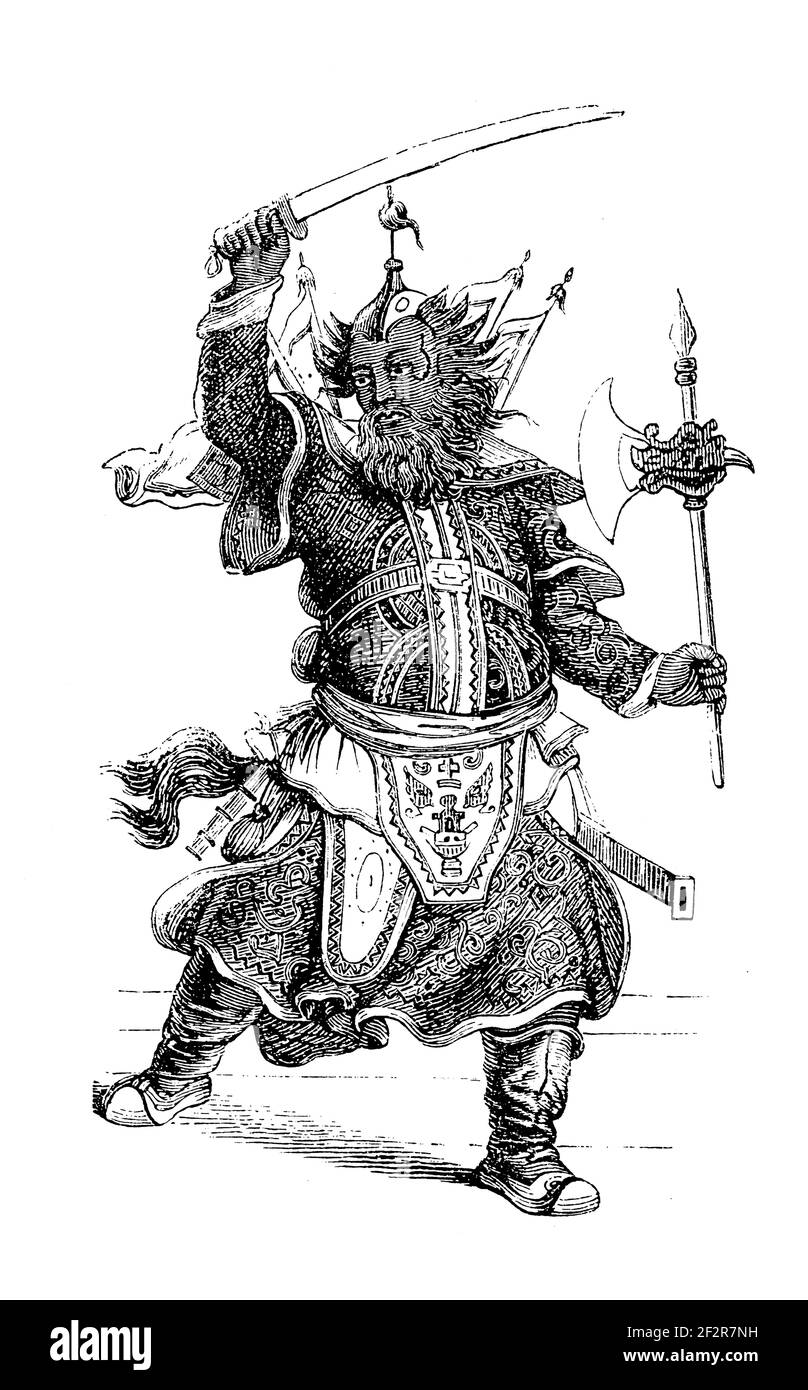 Antique 19th-century illustration of a Chinese actor. Engraving published in Systematischer Bilder-Atlas zum Conversations-Lexikon, Ikonographische En Stock Photohttps://www.alamy.com/image-license-details/?v=1https://www.alamy.com/antique-19th-century-illustration-of-a-chinese-actor-engraving-published-in-systematischer-bilder-atlas-zum-conversations-lexikon-ikonographische-en-image414789133.html
Antique 19th-century illustration of a Chinese actor. Engraving published in Systematischer Bilder-Atlas zum Conversations-Lexikon, Ikonographische En Stock Photohttps://www.alamy.com/image-license-details/?v=1https://www.alamy.com/antique-19th-century-illustration-of-a-chinese-actor-engraving-published-in-systematischer-bilder-atlas-zum-conversations-lexikon-ikonographische-en-image414789133.htmlRF2F2R7NH–Antique 19th-century illustration of a Chinese actor. Engraving published in Systematischer Bilder-Atlas zum Conversations-Lexikon, Ikonographische En
 Feng Shui Sword Stock Photohttps://www.alamy.com/image-license-details/?v=1https://www.alamy.com/feng-shui-sword-image227692540.html
Feng Shui Sword Stock Photohttps://www.alamy.com/image-license-details/?v=1https://www.alamy.com/feng-shui-sword-image227692540.htmlRFR6C84C–Feng Shui Sword
RF2JMK4MK–samurai fighter ninja kung fu logo template vector icon
 Tuan Chi-Jui, 1913. Shows Duan Qirui (1865-1936), Chinese warlord and politician. Stock Photohttps://www.alamy.com/image-license-details/?v=1https://www.alamy.com/tuan-chi-jui-1913-shows-duan-qirui-1865-1936-chinese-warlord-and-politician-image608948747.html
Tuan Chi-Jui, 1913. Shows Duan Qirui (1865-1936), Chinese warlord and politician. Stock Photohttps://www.alamy.com/image-license-details/?v=1https://www.alamy.com/tuan-chi-jui-1913-shows-duan-qirui-1865-1936-chinese-warlord-and-politician-image608948747.htmlRM2XAM09F–Tuan Chi-Jui, 1913. Shows Duan Qirui (1865-1936), Chinese warlord and politician.
 Warrior with sword and traditional armor Stock Photohttps://www.alamy.com/image-license-details/?v=1https://www.alamy.com/warrior-with-sword-and-traditional-armor-image239321087.html
Warrior with sword and traditional armor Stock Photohttps://www.alamy.com/image-license-details/?v=1https://www.alamy.com/warrior-with-sword-and-traditional-armor-image239321087.htmlRFRWA0DK–Warrior with sword and traditional armor
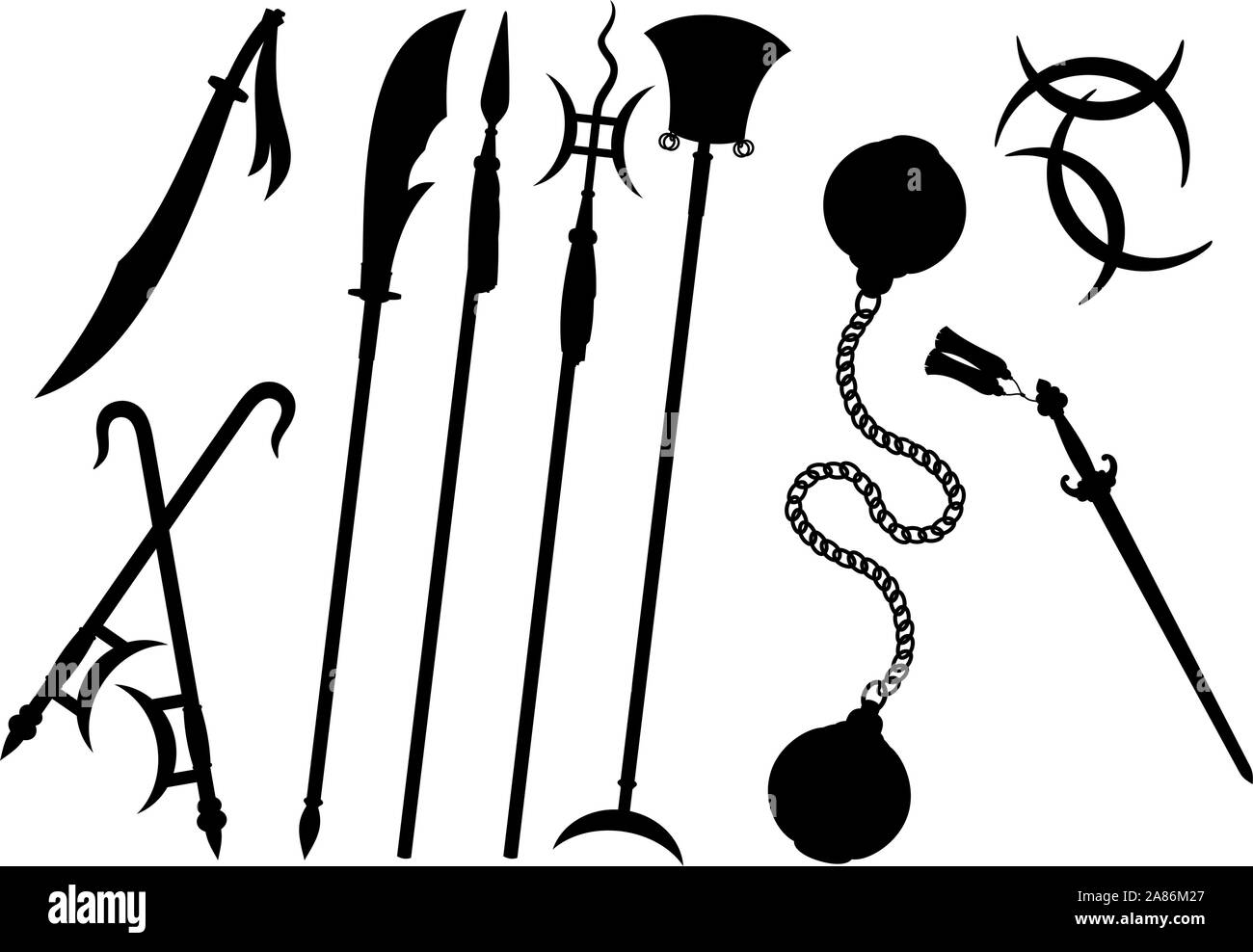 Chinese Traditional Weapons Martial Arts Silhouette , vector illustration cartoon. Stock Vectorhttps://www.alamy.com/image-license-details/?v=1https://www.alamy.com/chinese-traditional-weapons-martial-arts-silhouette-vector-illustration-cartoon-image332061695.html
Chinese Traditional Weapons Martial Arts Silhouette , vector illustration cartoon. Stock Vectorhttps://www.alamy.com/image-license-details/?v=1https://www.alamy.com/chinese-traditional-weapons-martial-arts-silhouette-vector-illustration-cartoon-image332061695.htmlRF2A86M27–Chinese Traditional Weapons Martial Arts Silhouette , vector illustration cartoon.
 A man in a kimono holding a sword. Concept of strength and power, as the man is dressed in traditional Japanese clothing and is holding a weapon. The Stock Vectorhttps://www.alamy.com/image-license-details/?v=1https://www.alamy.com/a-man-in-a-kimono-holding-a-sword-concept-of-strength-and-power-as-the-man-is-dressed-in-traditional-japanese-clothing-and-is-holding-a-weapon-the-image611067101.html
A man in a kimono holding a sword. Concept of strength and power, as the man is dressed in traditional Japanese clothing and is holding a weapon. The Stock Vectorhttps://www.alamy.com/image-license-details/?v=1https://www.alamy.com/a-man-in-a-kimono-holding-a-sword-concept-of-strength-and-power-as-the-man-is-dressed-in-traditional-japanese-clothing-and-is-holding-a-weapon-the-image611067101.htmlRF2XE4E91–A man in a kimono holding a sword. Concept of strength and power, as the man is dressed in traditional Japanese clothing and is holding a weapon. The
 Portrait view of crossed sword and arm with a bowed head and hard light in grayscale Stock Photohttps://www.alamy.com/image-license-details/?v=1https://www.alamy.com/stock-photo-portrait-view-of-crossed-sword-and-arm-with-a-bowed-head-and-hard-11291766.html
Portrait view of crossed sword and arm with a bowed head and hard light in grayscale Stock Photohttps://www.alamy.com/image-license-details/?v=1https://www.alamy.com/stock-photo-portrait-view-of-crossed-sword-and-arm-with-a-bowed-head-and-hard-11291766.htmlRMA5EW3K–Portrait view of crossed sword and arm with a bowed head and hard light in grayscale
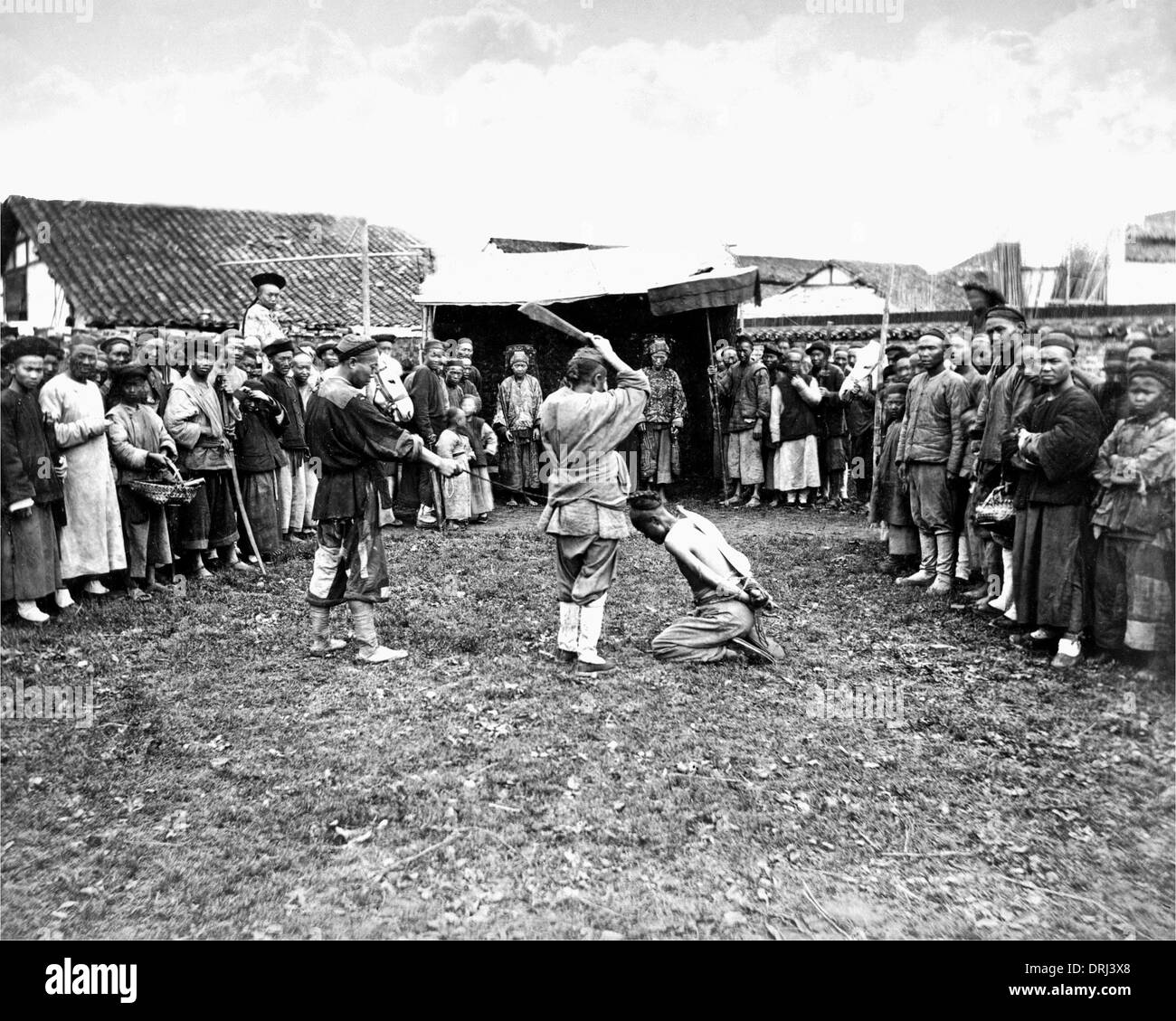 Execution scene, China Stock Photohttps://www.alamy.com/image-license-details/?v=1https://www.alamy.com/execution-scene-china-image66166416.html
Execution scene, China Stock Photohttps://www.alamy.com/image-license-details/?v=1https://www.alamy.com/execution-scene-china-image66166416.htmlRMDRJ3X8–Execution scene, China
 Silhouette of traditional ancient oriental warrior. Stock Vectorhttps://www.alamy.com/image-license-details/?v=1https://www.alamy.com/silhouette-of-traditional-ancient-oriental-warrior-image452421394.html
Silhouette of traditional ancient oriental warrior. Stock Vectorhttps://www.alamy.com/image-license-details/?v=1https://www.alamy.com/silhouette-of-traditional-ancient-oriental-warrior-image452421394.htmlRF2H81G2X–Silhouette of traditional ancient oriental warrior.
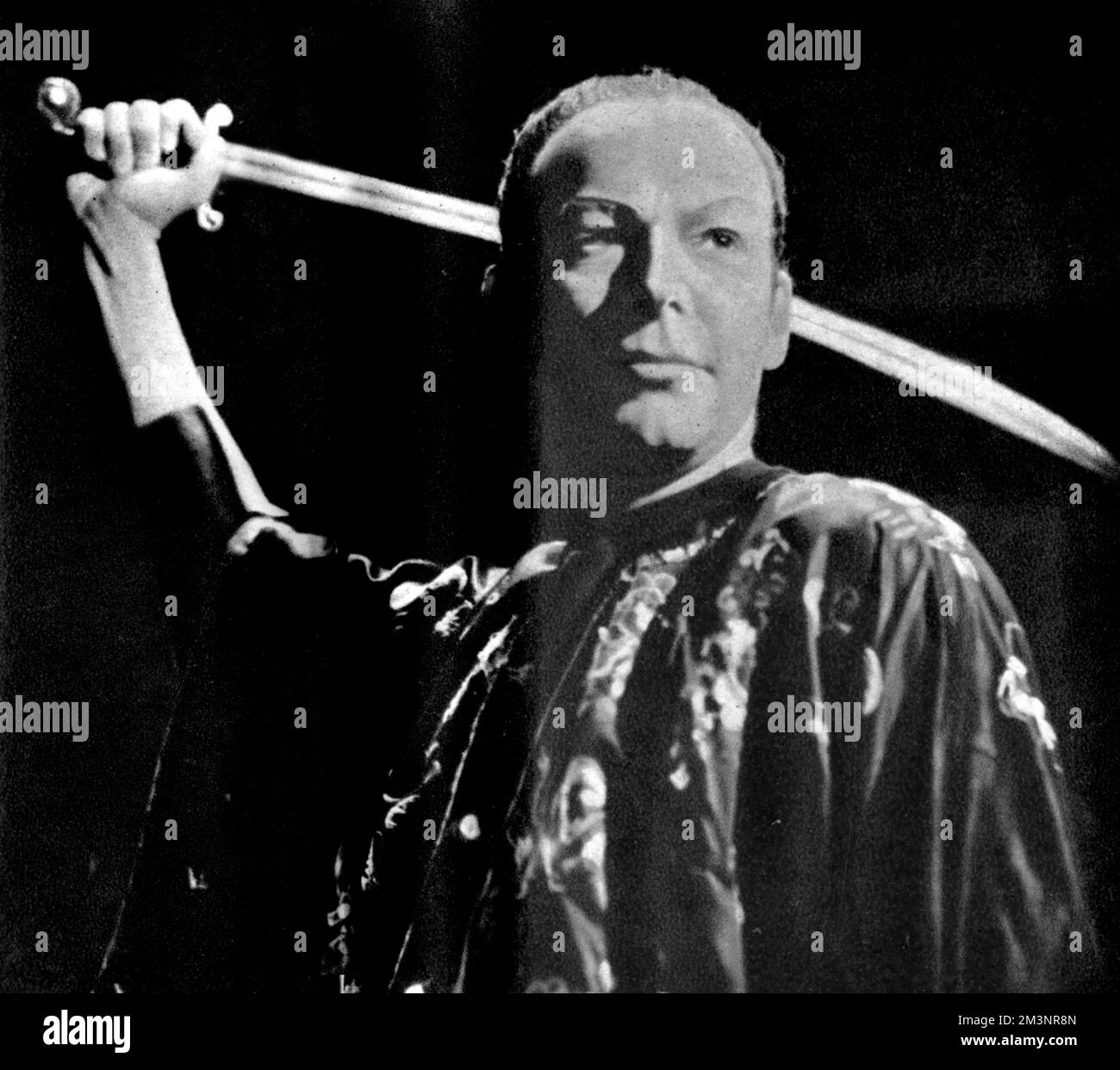 Lady Precious Stream theatre production Stock Photohttps://www.alamy.com/image-license-details/?v=1https://www.alamy.com/lady-precious-stream-theatre-production-image501423909.html
Lady Precious Stream theatre production Stock Photohttps://www.alamy.com/image-license-details/?v=1https://www.alamy.com/lady-precious-stream-theatre-production-image501423909.htmlRM2M3NR8N–Lady Precious Stream theatre production
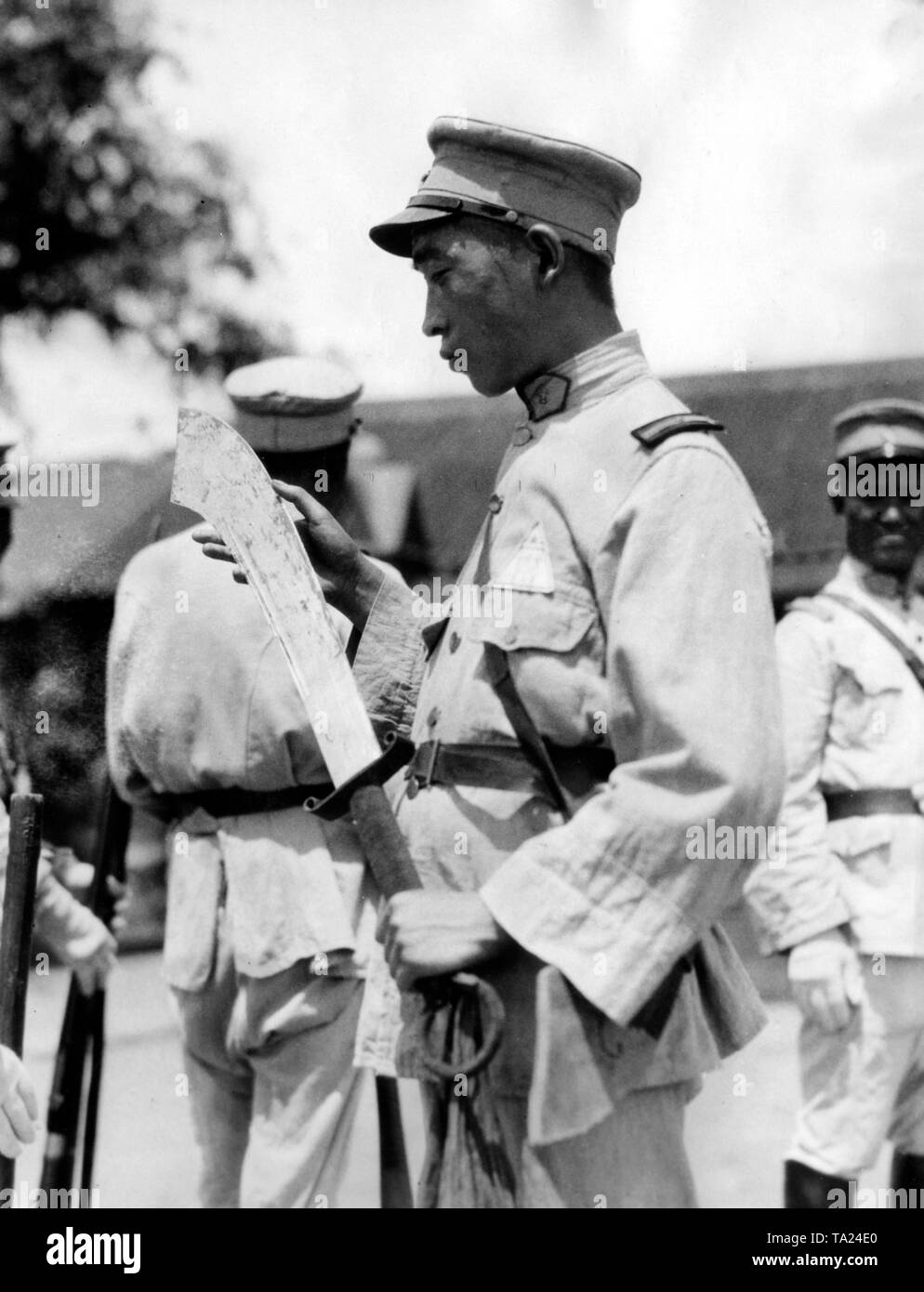 Soldiers of Zhang Zuloin's Ankuochun-army in the province of Honan / Henan. The soldiers maintain the order under the martial law. Stock Photohttps://www.alamy.com/image-license-details/?v=1https://www.alamy.com/soldiers-of-zhang-zuloins-ankuochun-army-in-the-province-of-honan-henan-the-soldiers-maintain-the-order-under-the-martial-law-image247139144.html
Soldiers of Zhang Zuloin's Ankuochun-army in the province of Honan / Henan. The soldiers maintain the order under the martial law. Stock Photohttps://www.alamy.com/image-license-details/?v=1https://www.alamy.com/soldiers-of-zhang-zuloins-ankuochun-army-in-the-province-of-honan-henan-the-soldiers-maintain-the-order-under-the-martial-law-image247139144.htmlRMTA24E0–Soldiers of Zhang Zuloin's Ankuochun-army in the province of Honan / Henan. The soldiers maintain the order under the martial law.